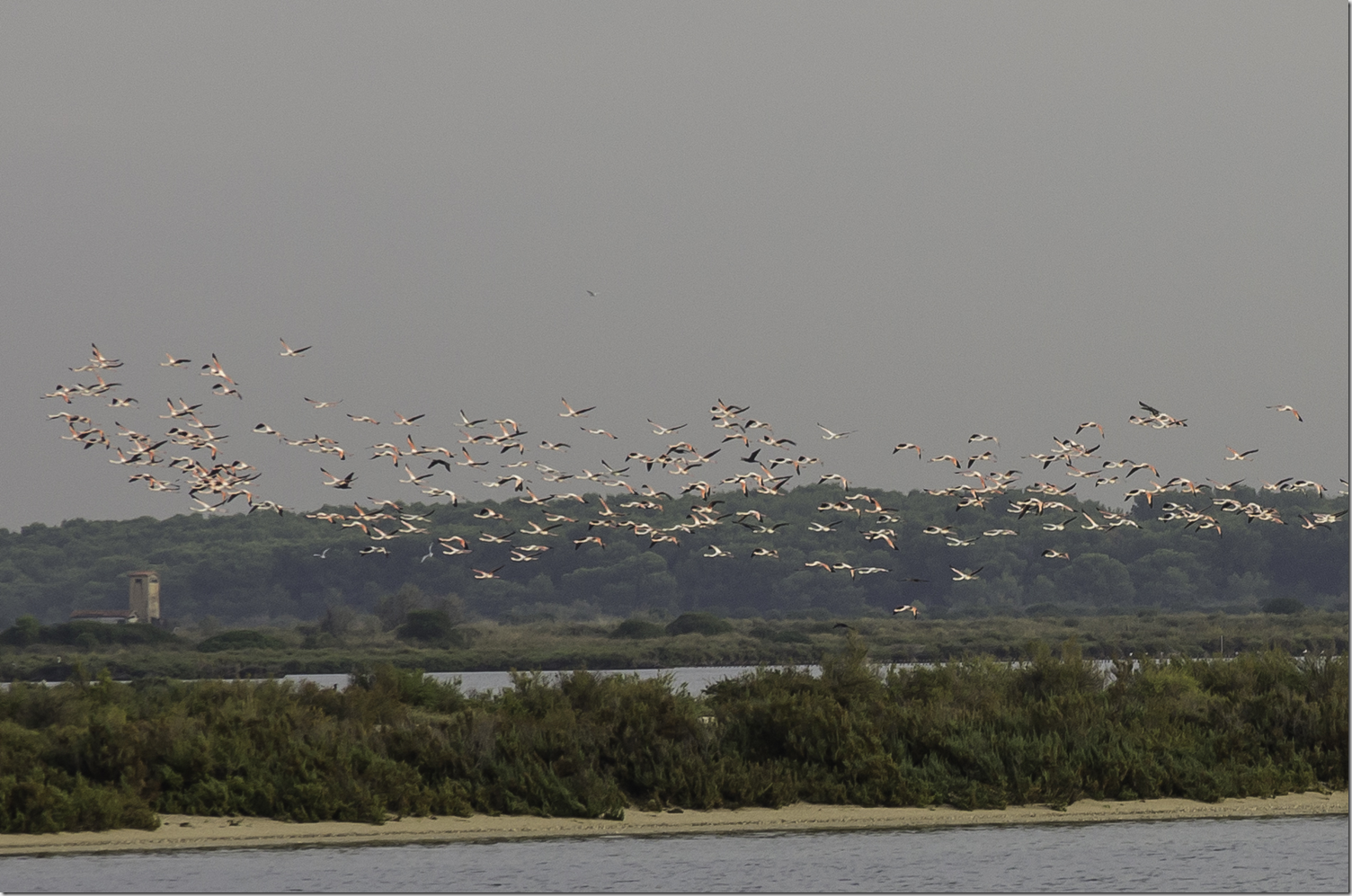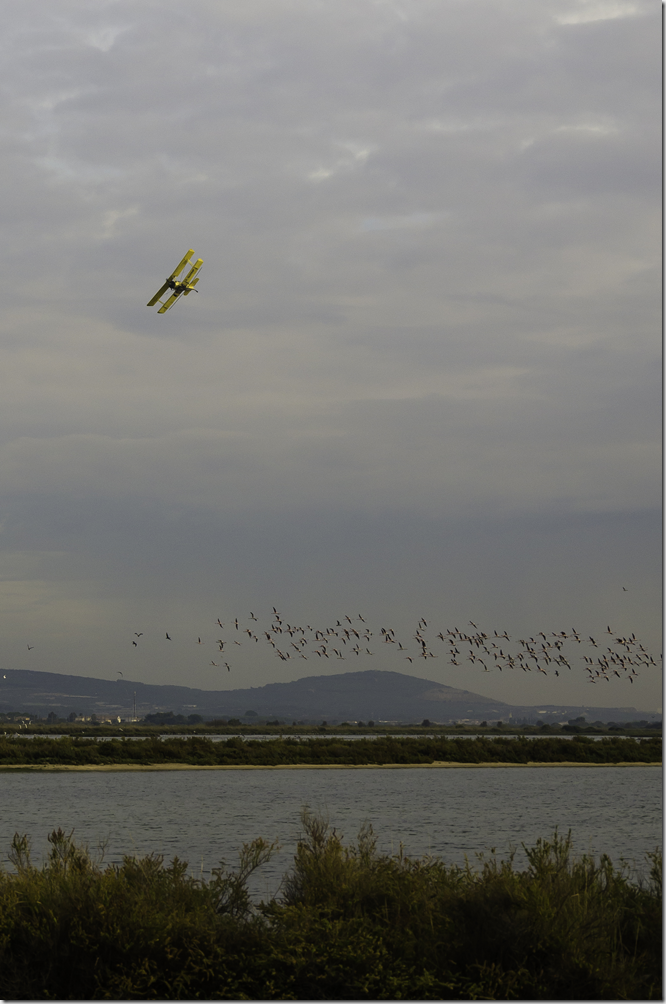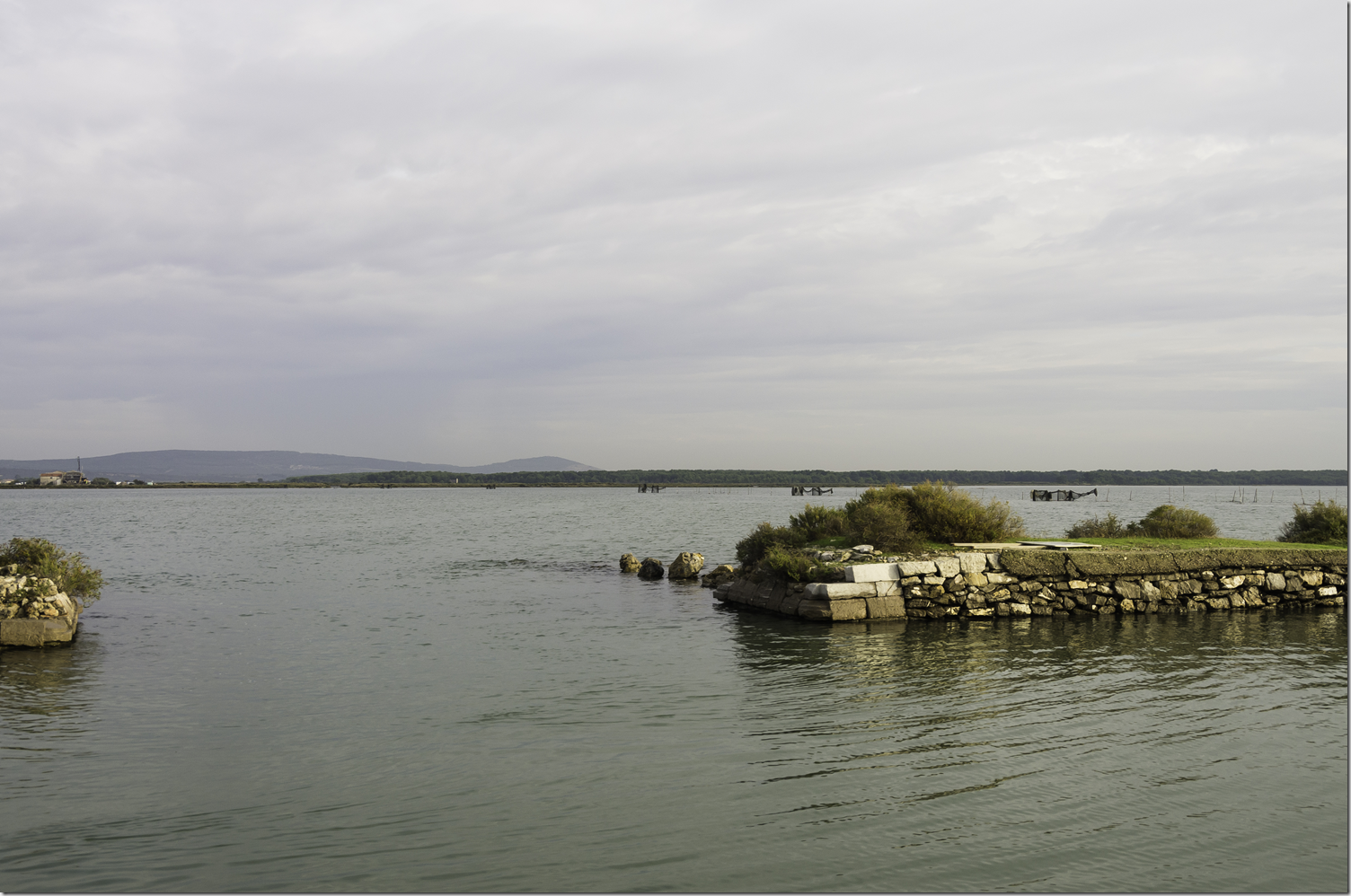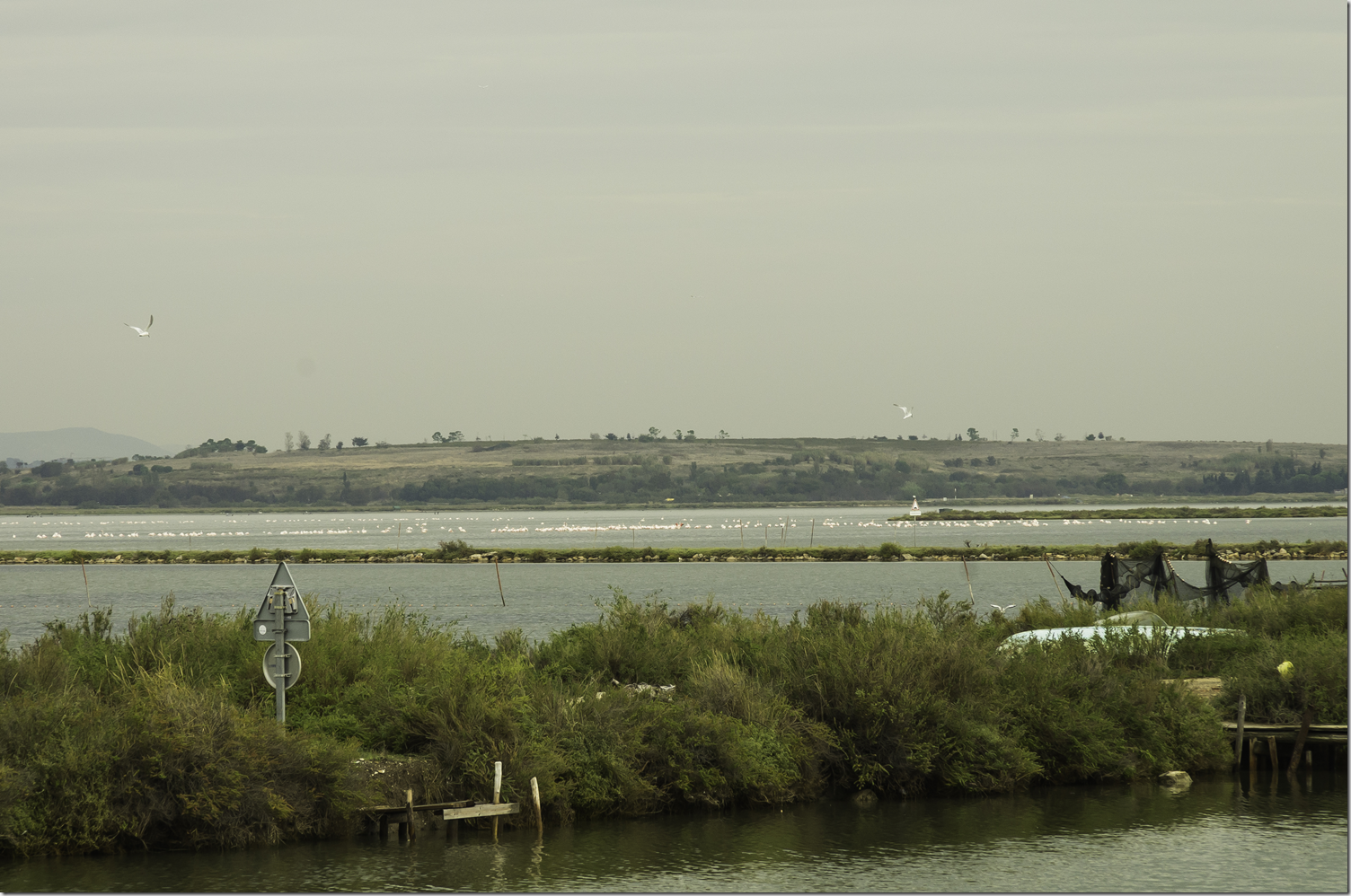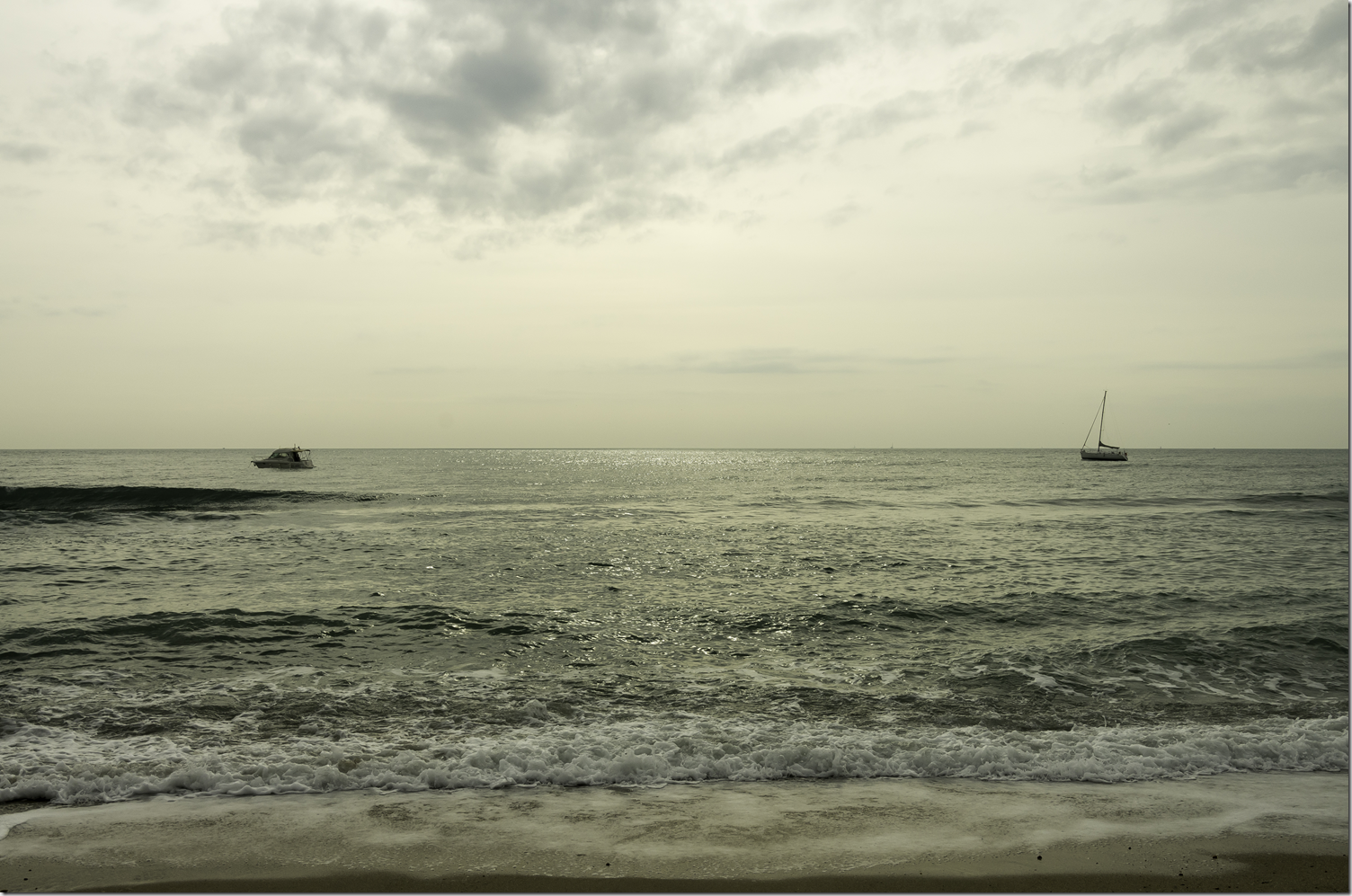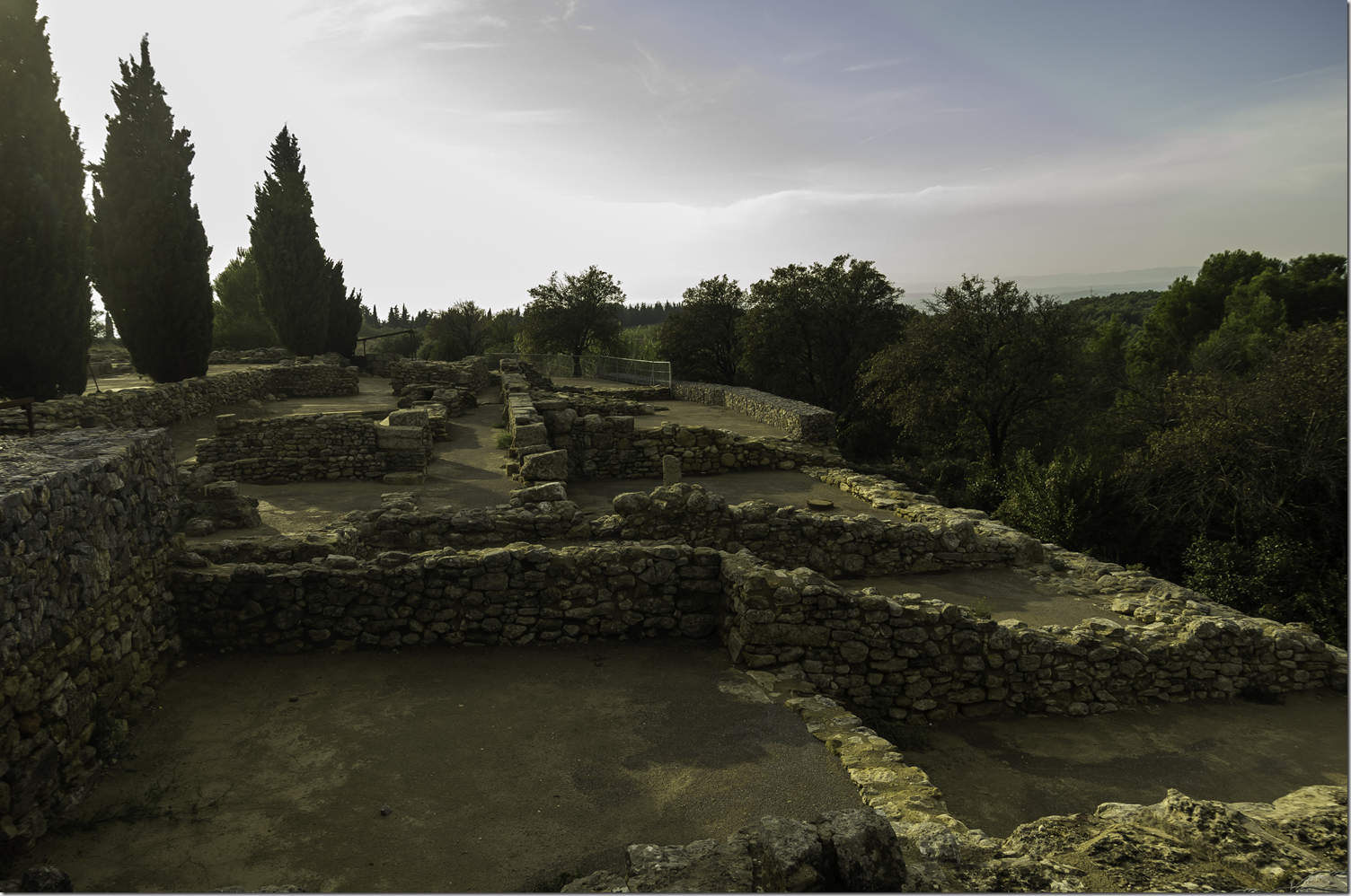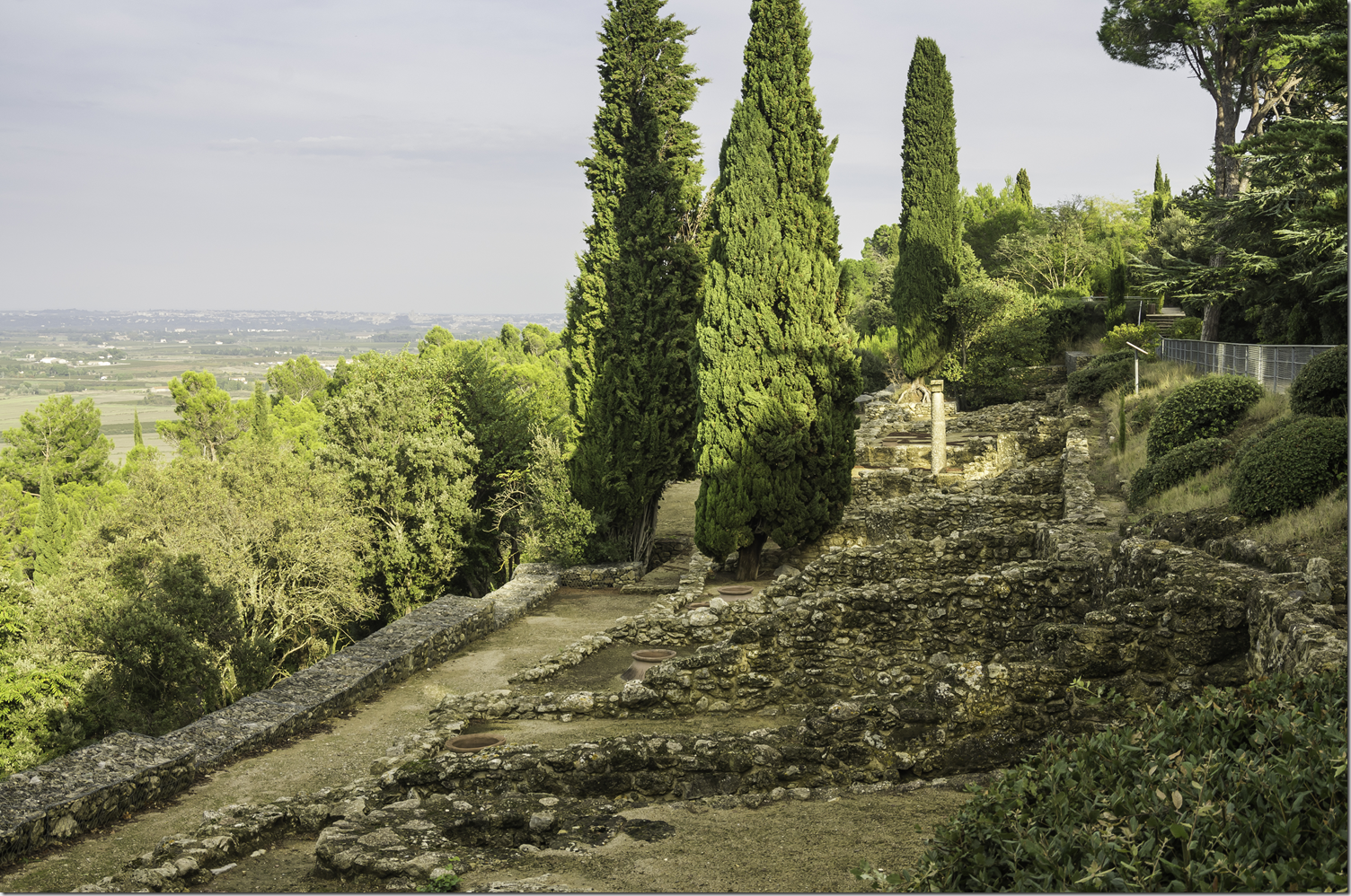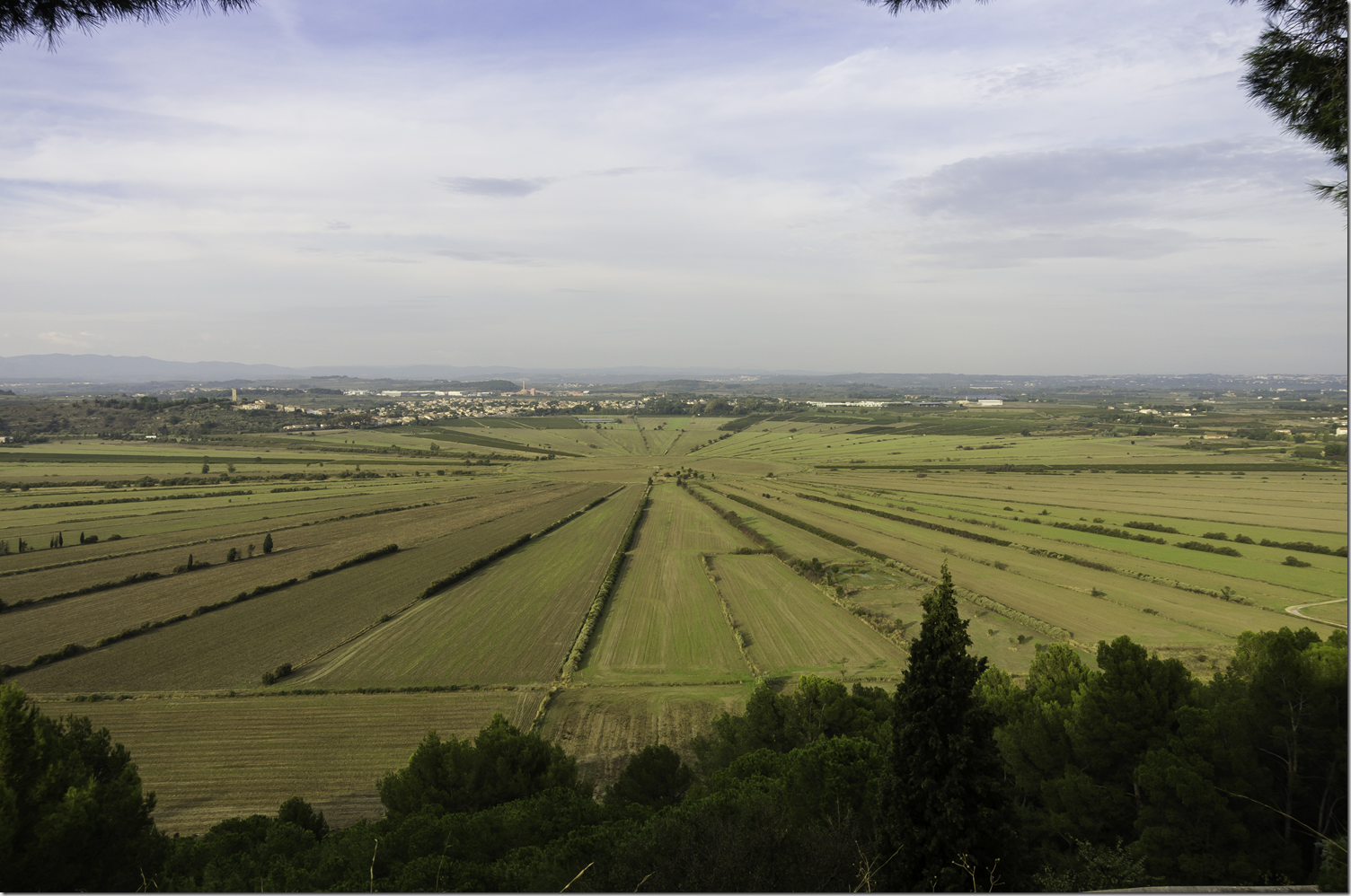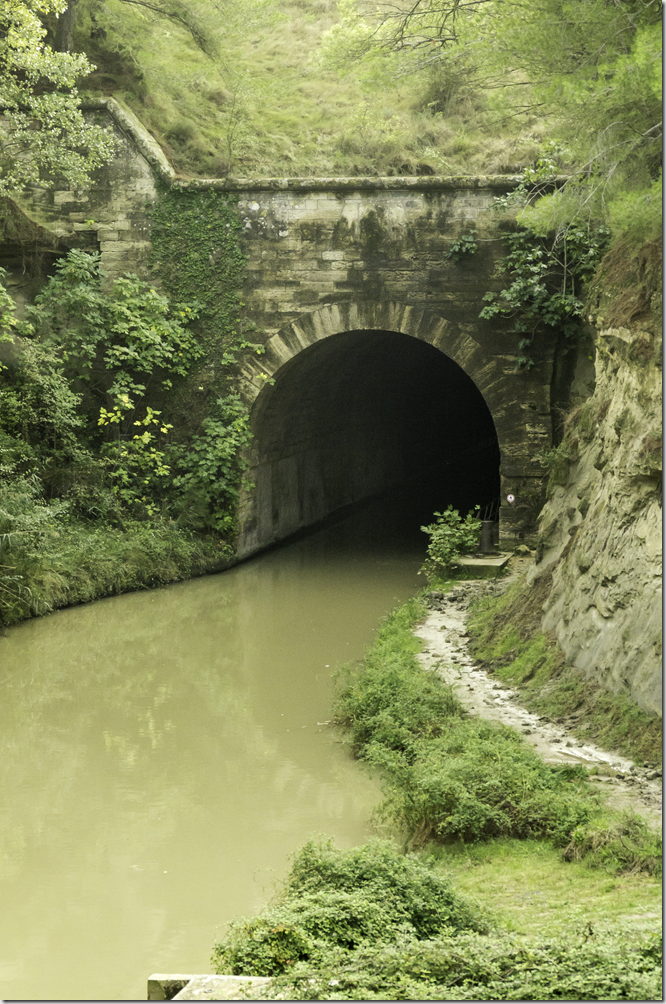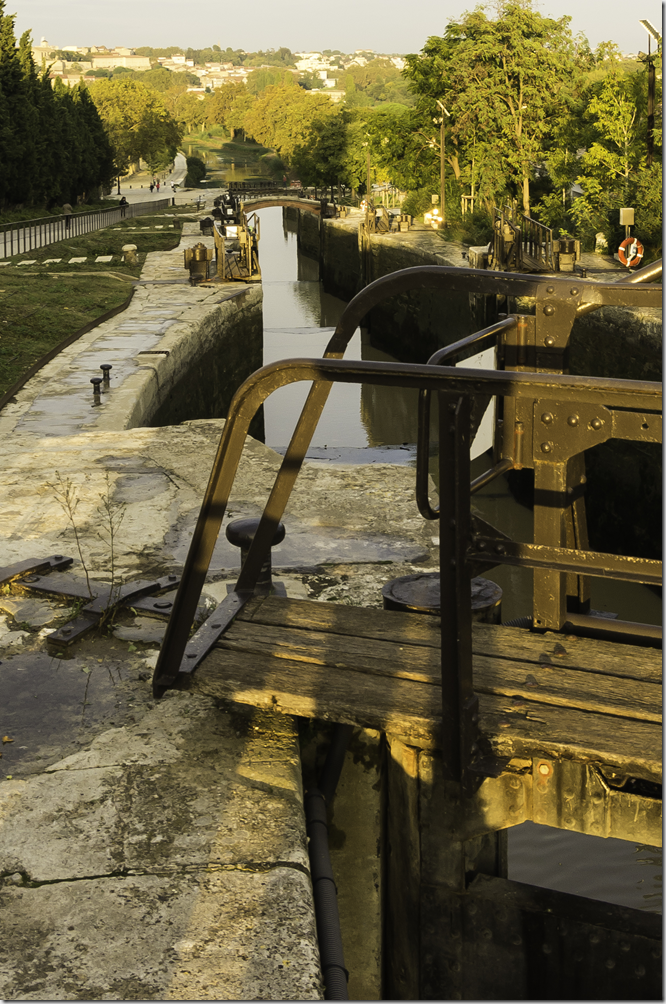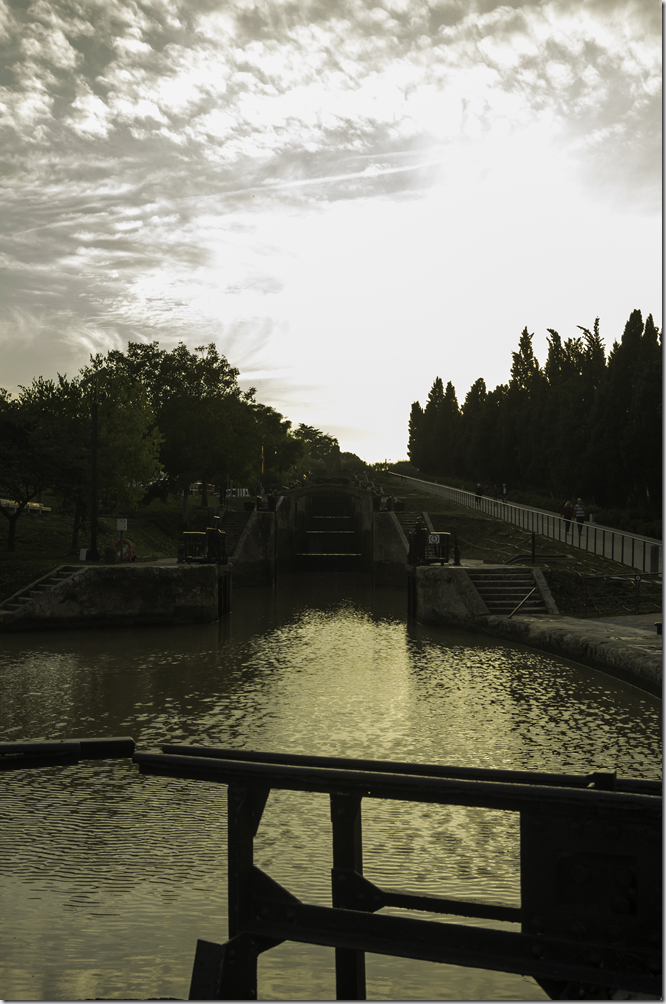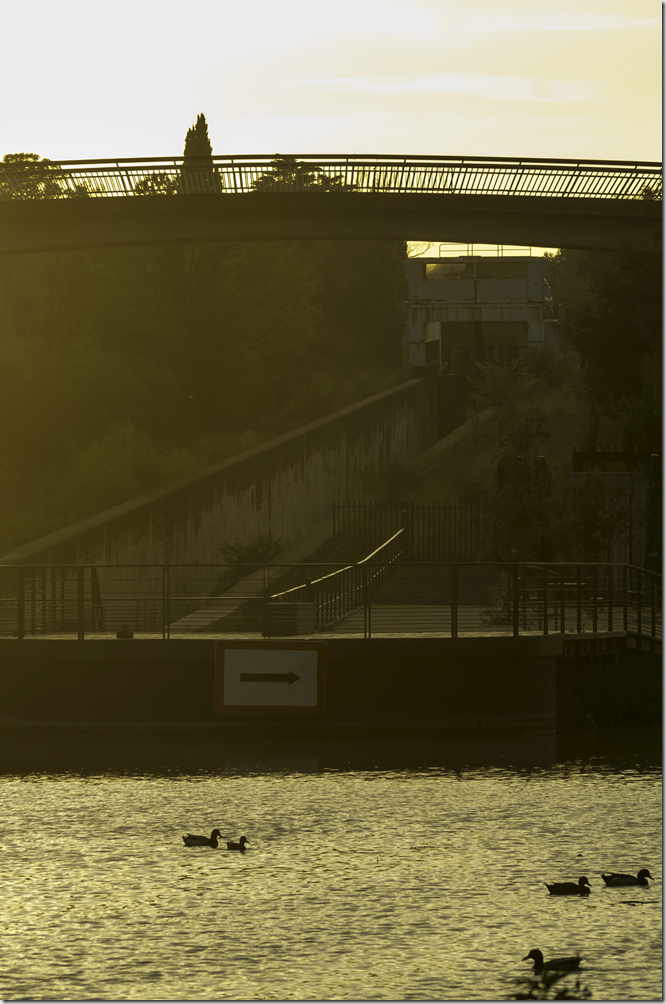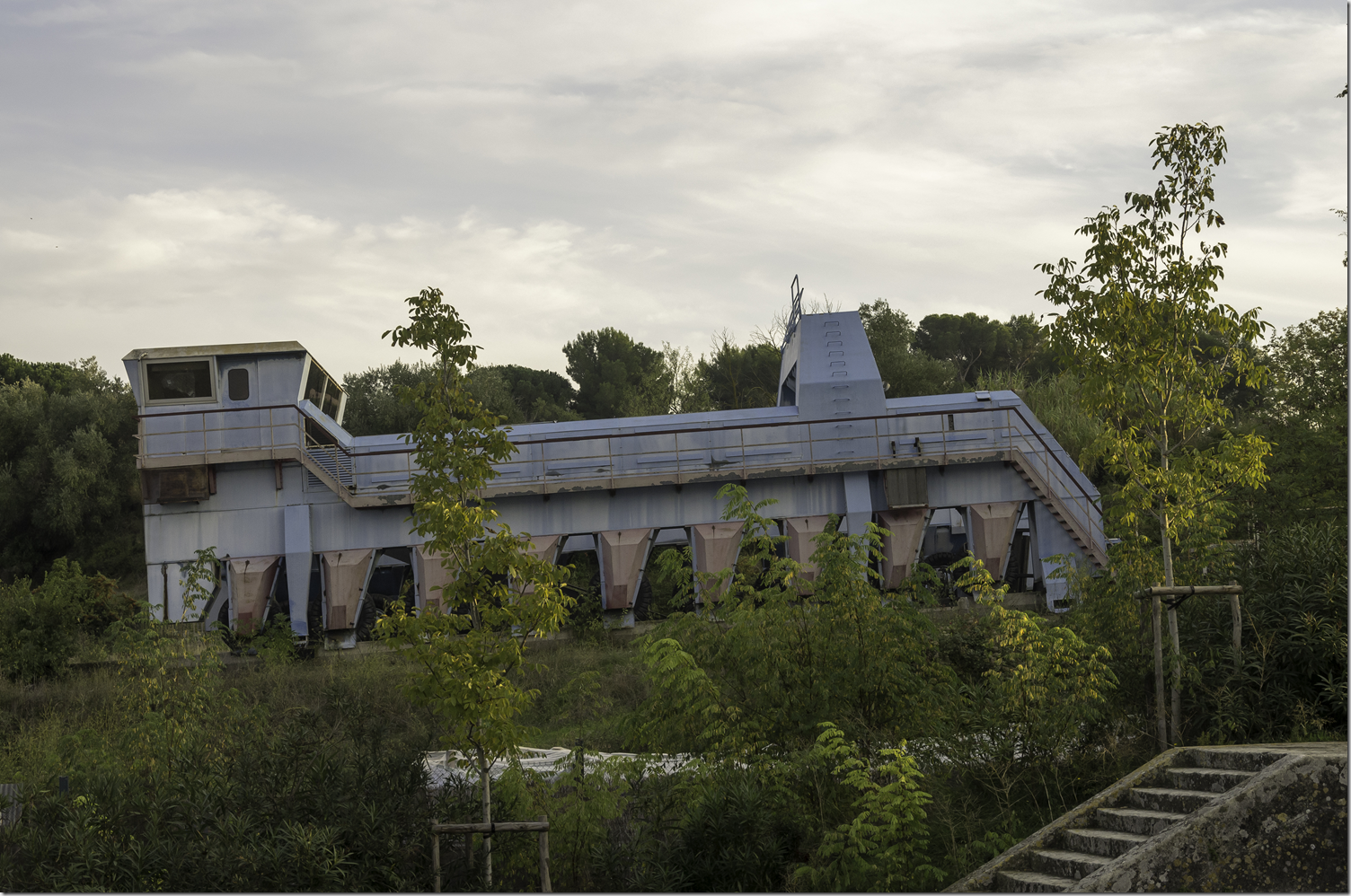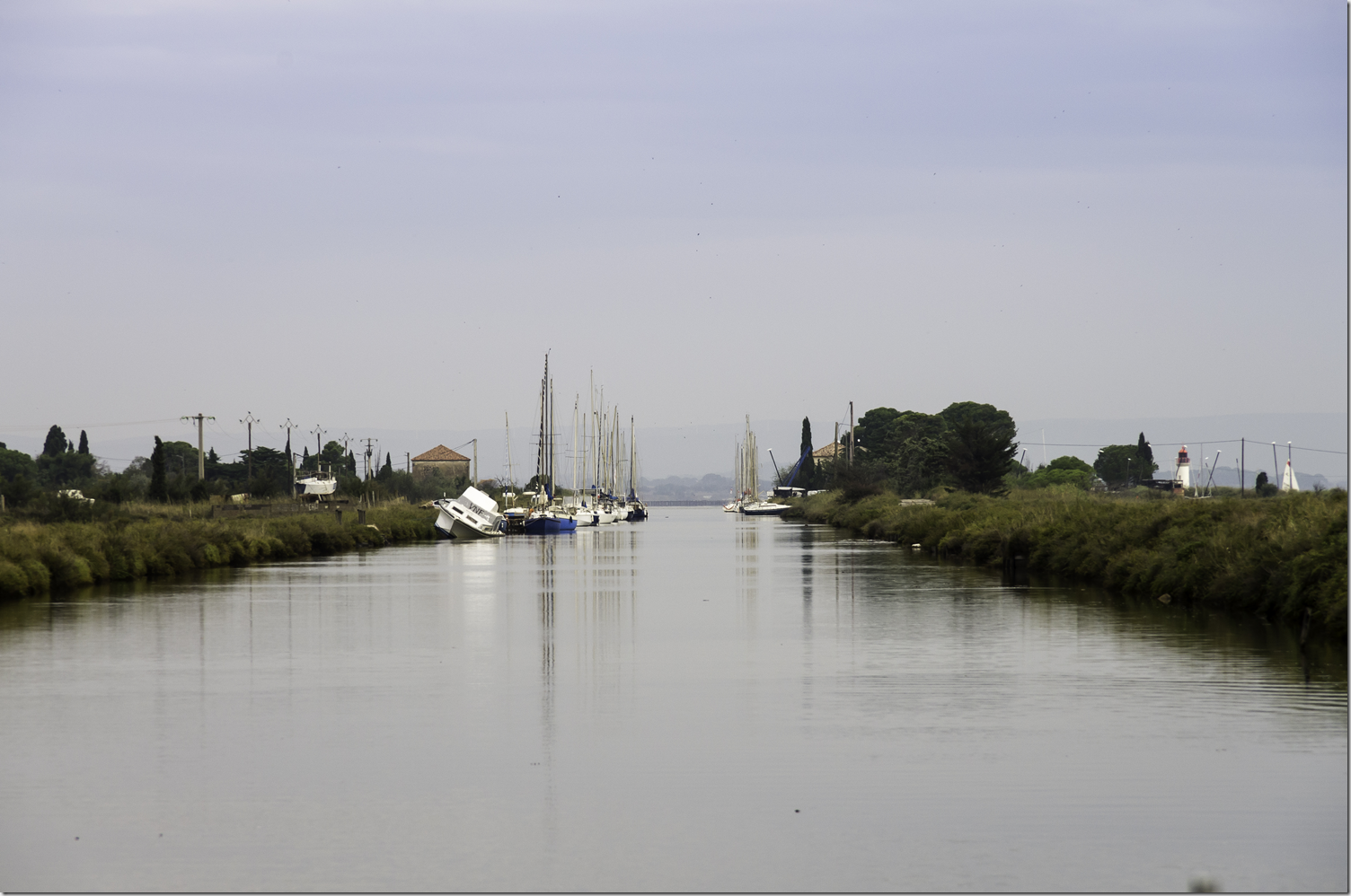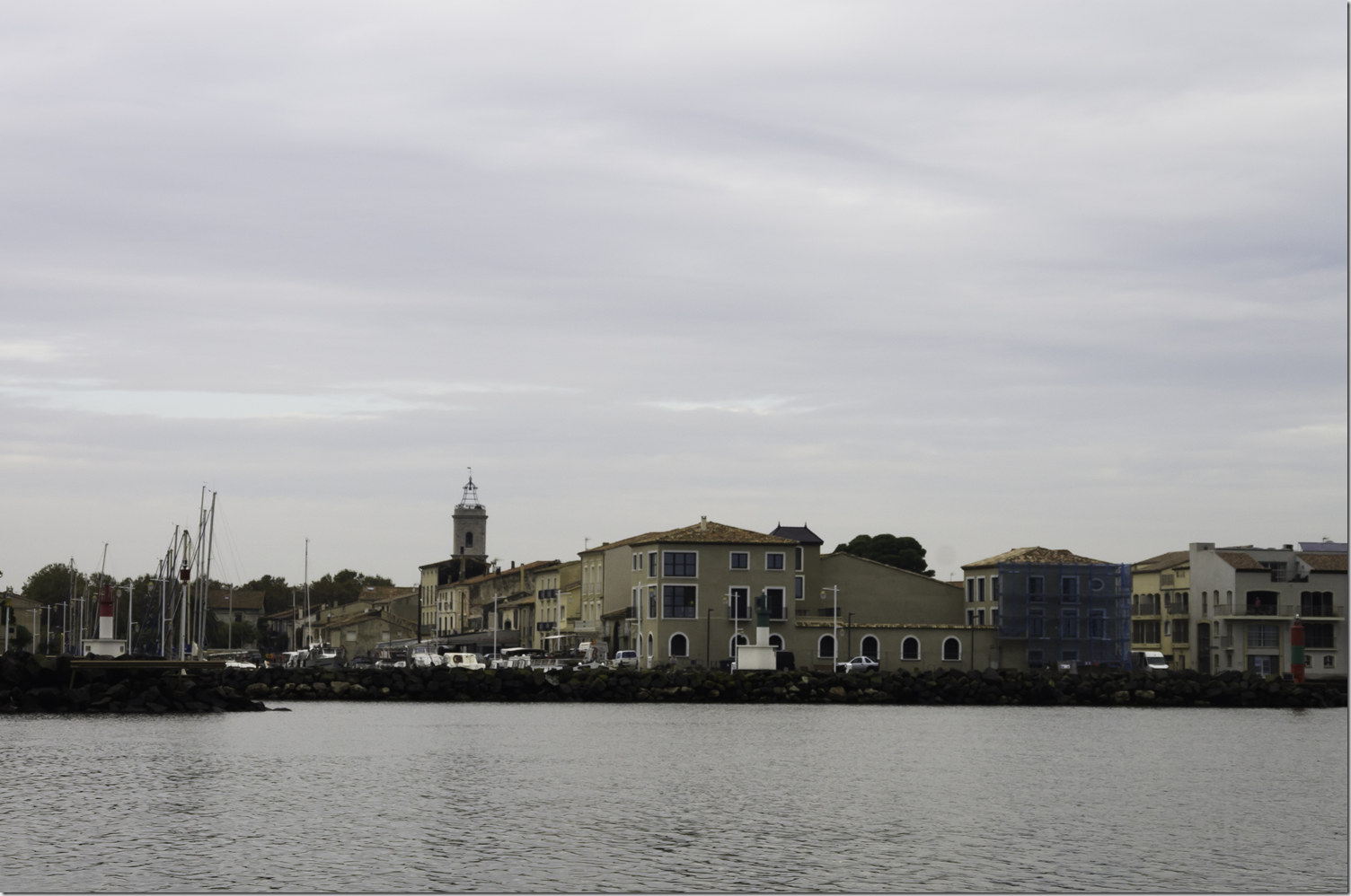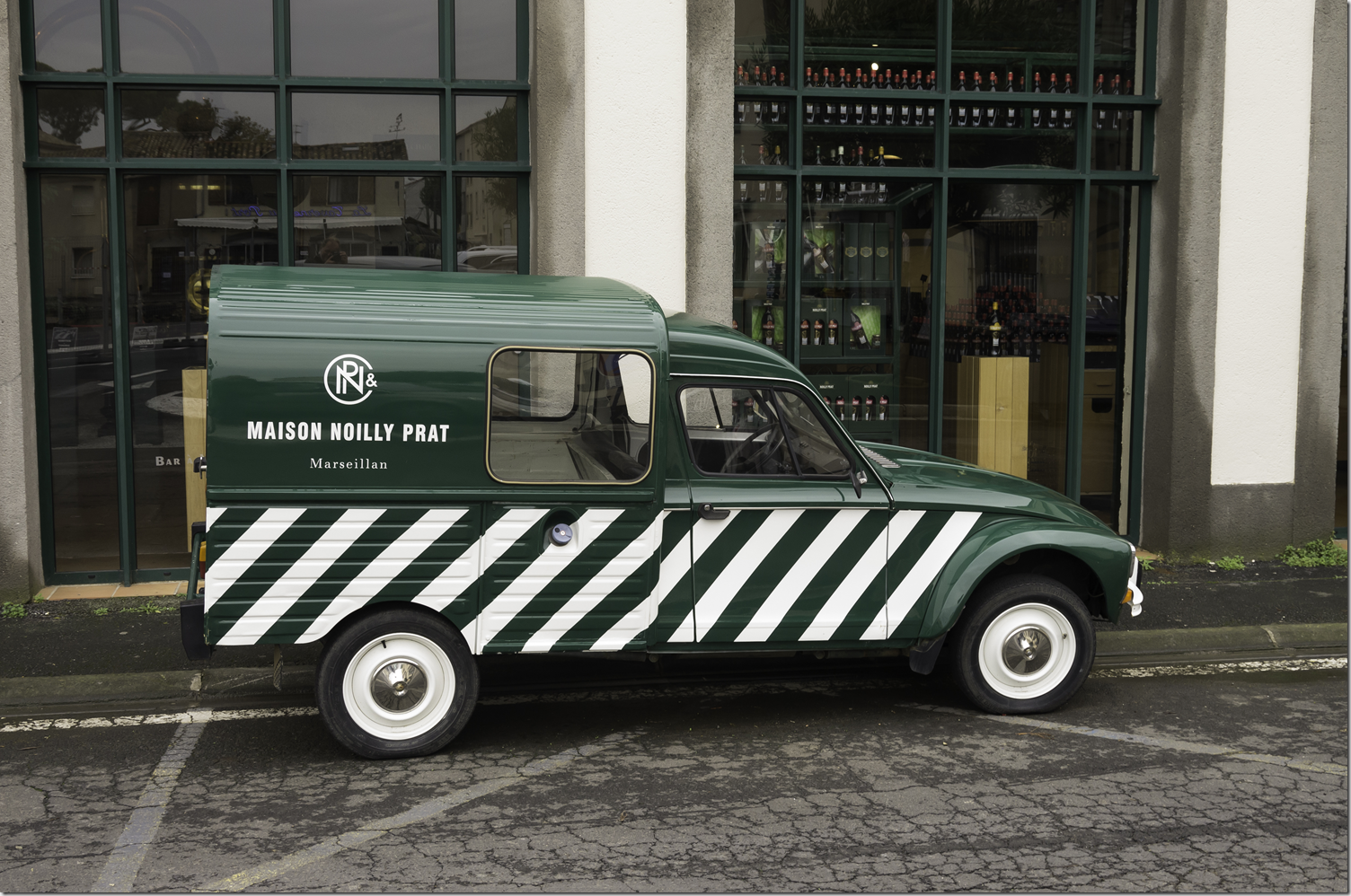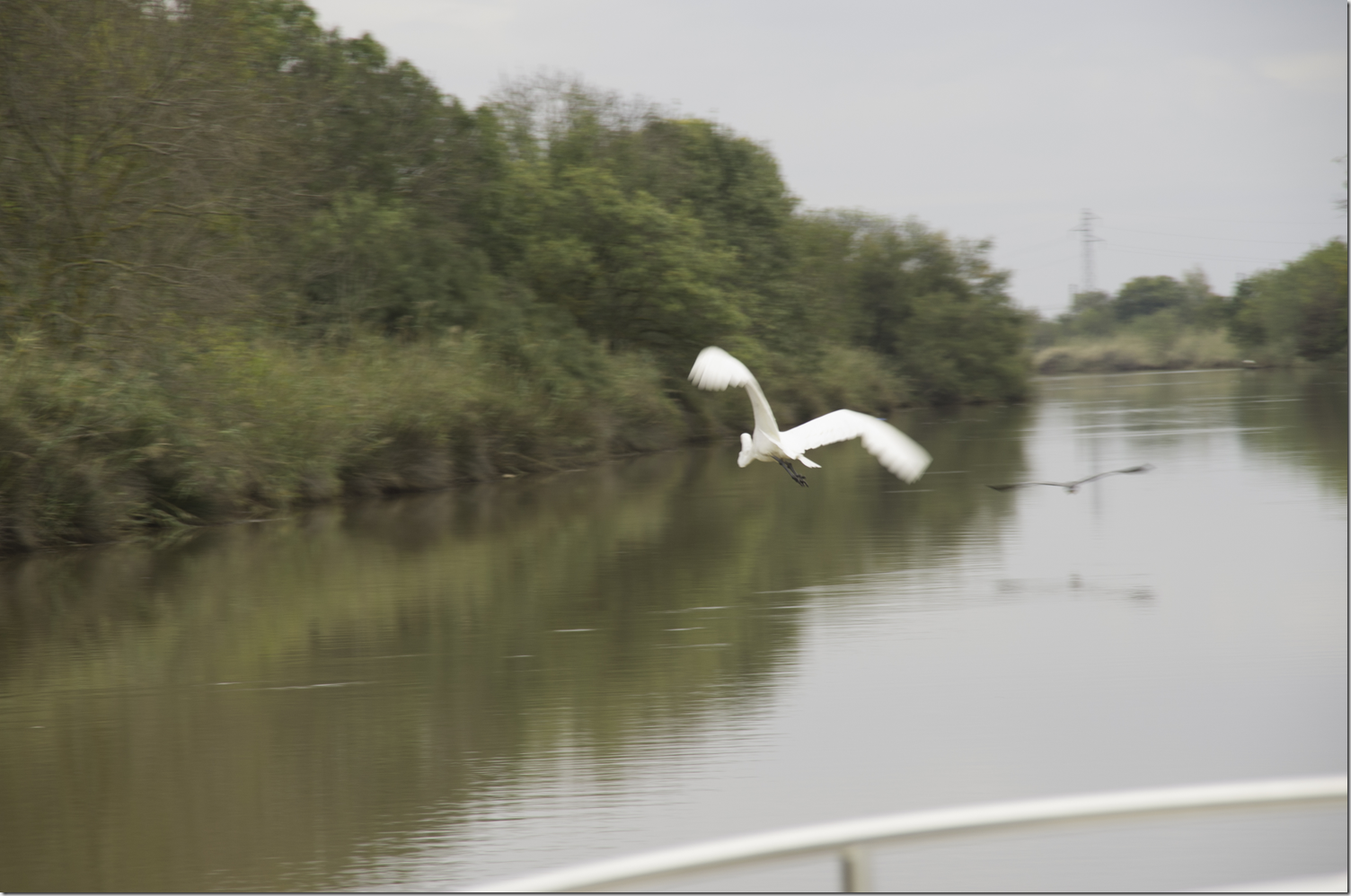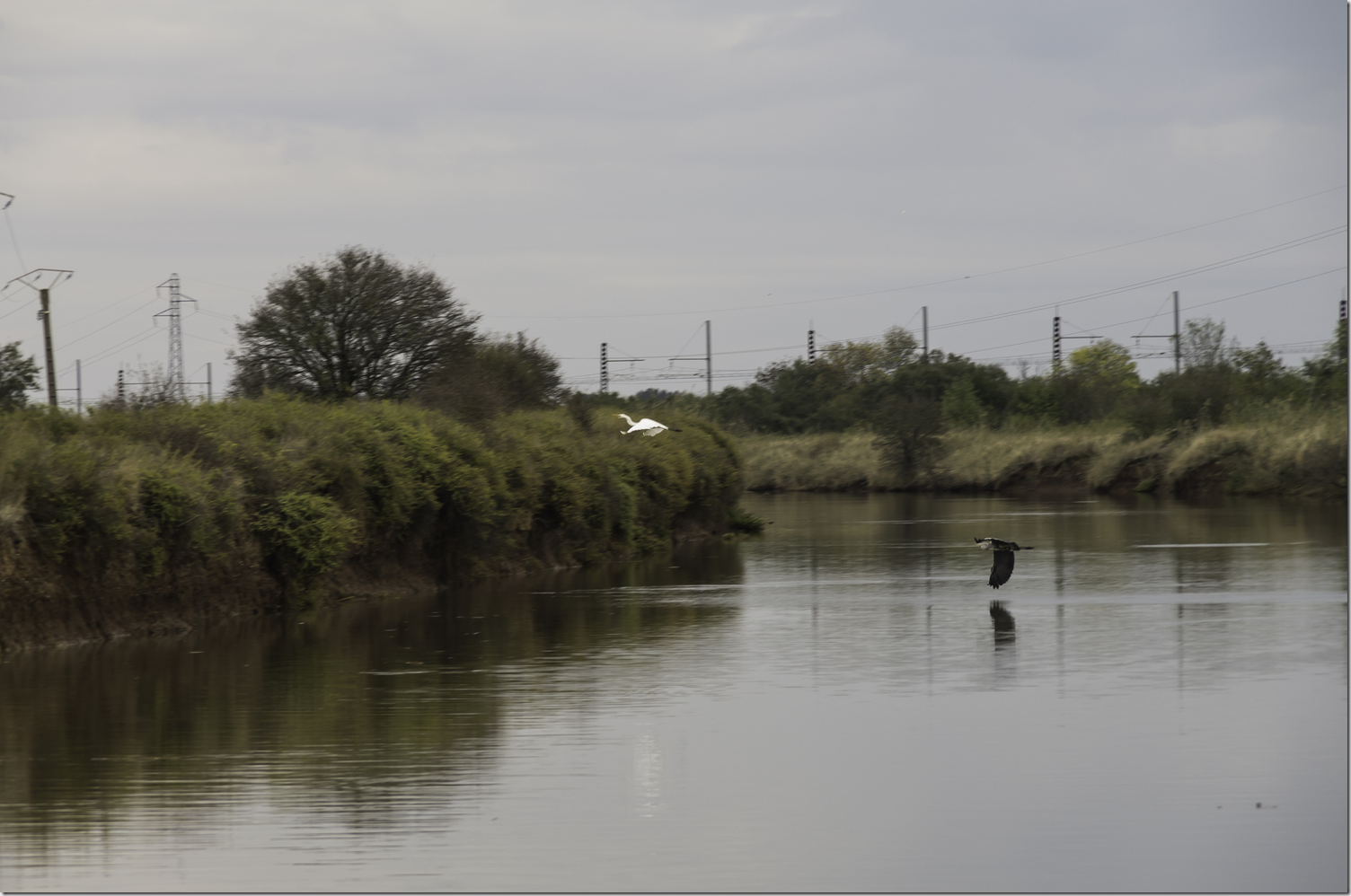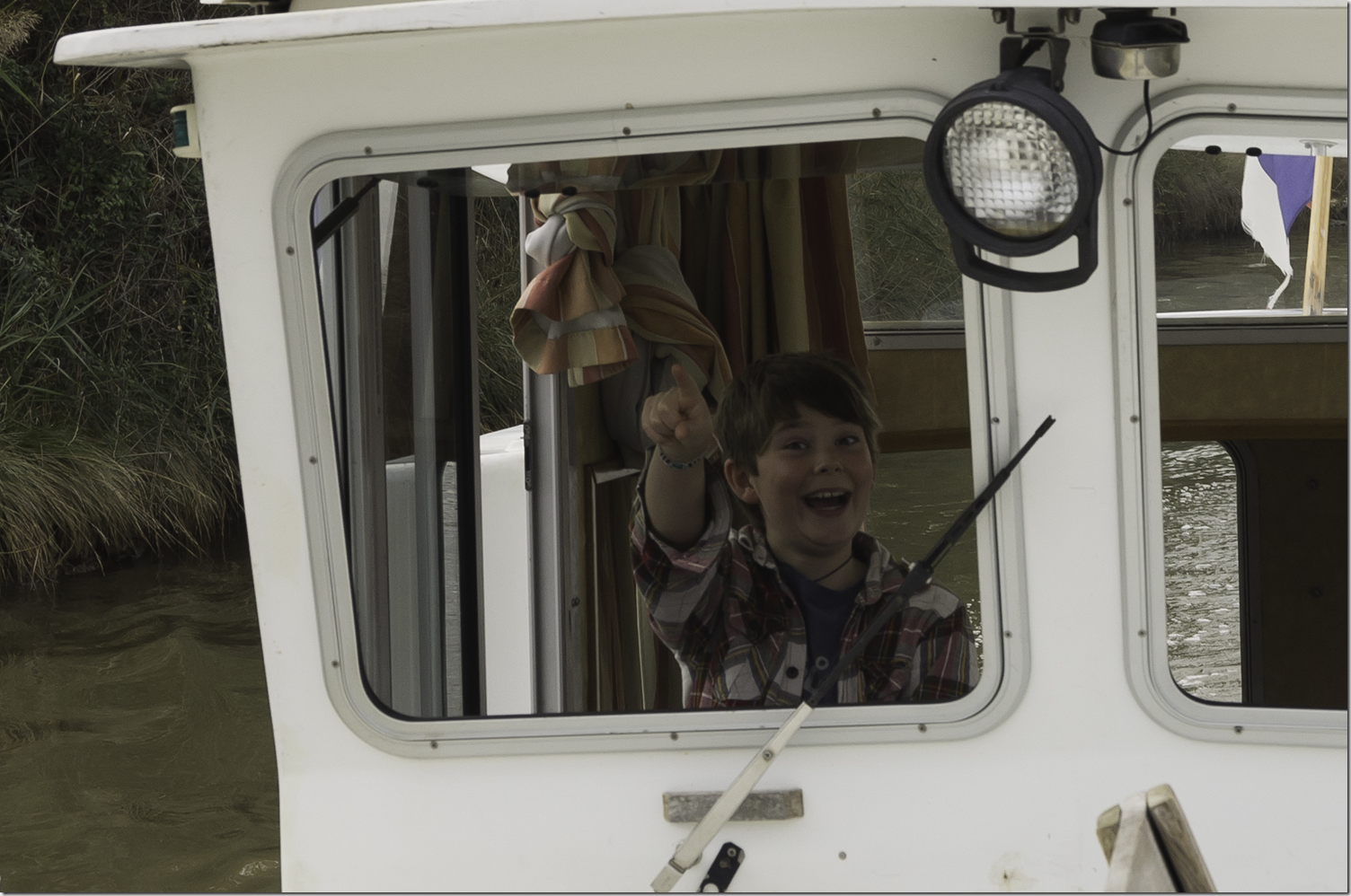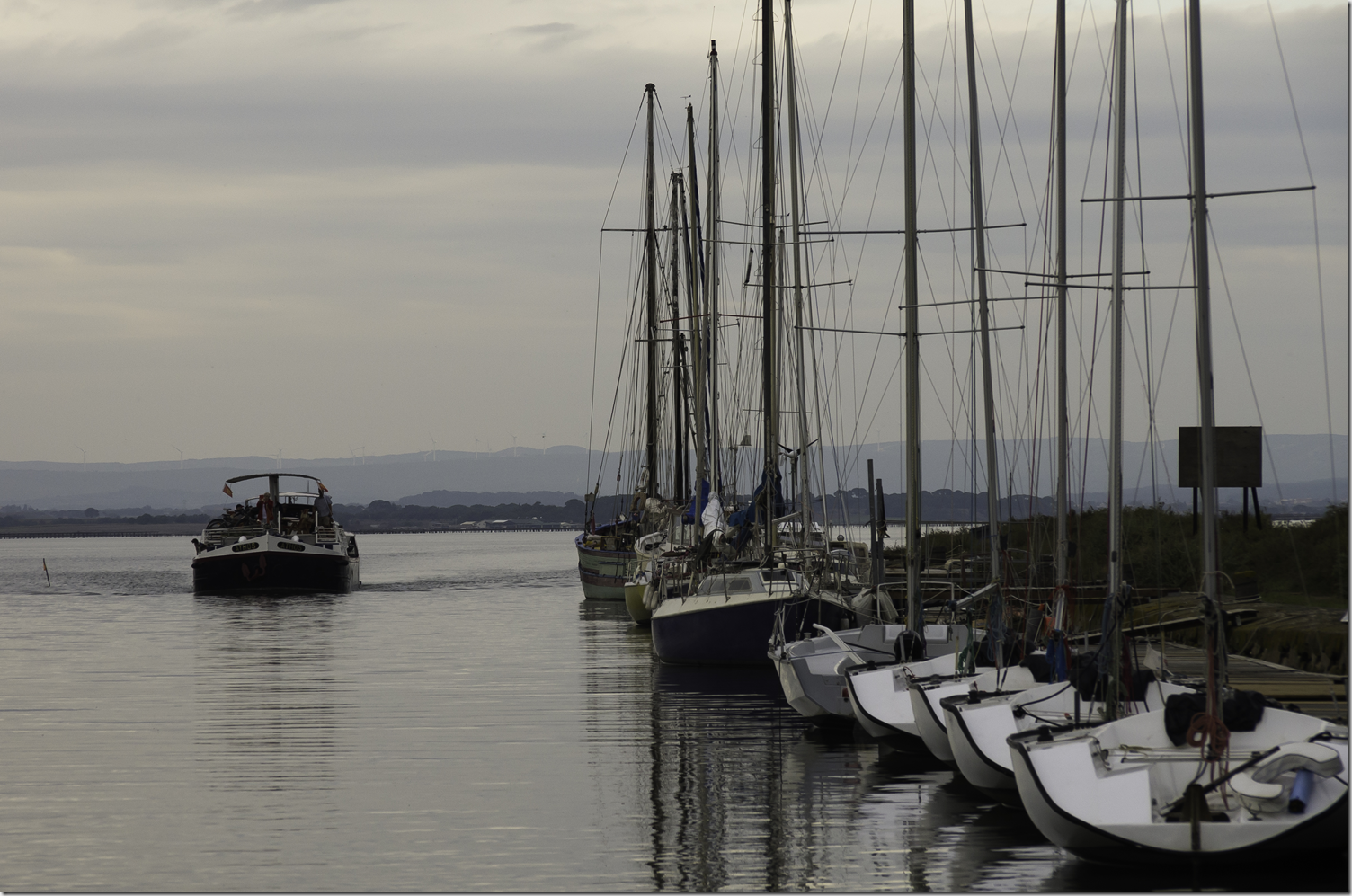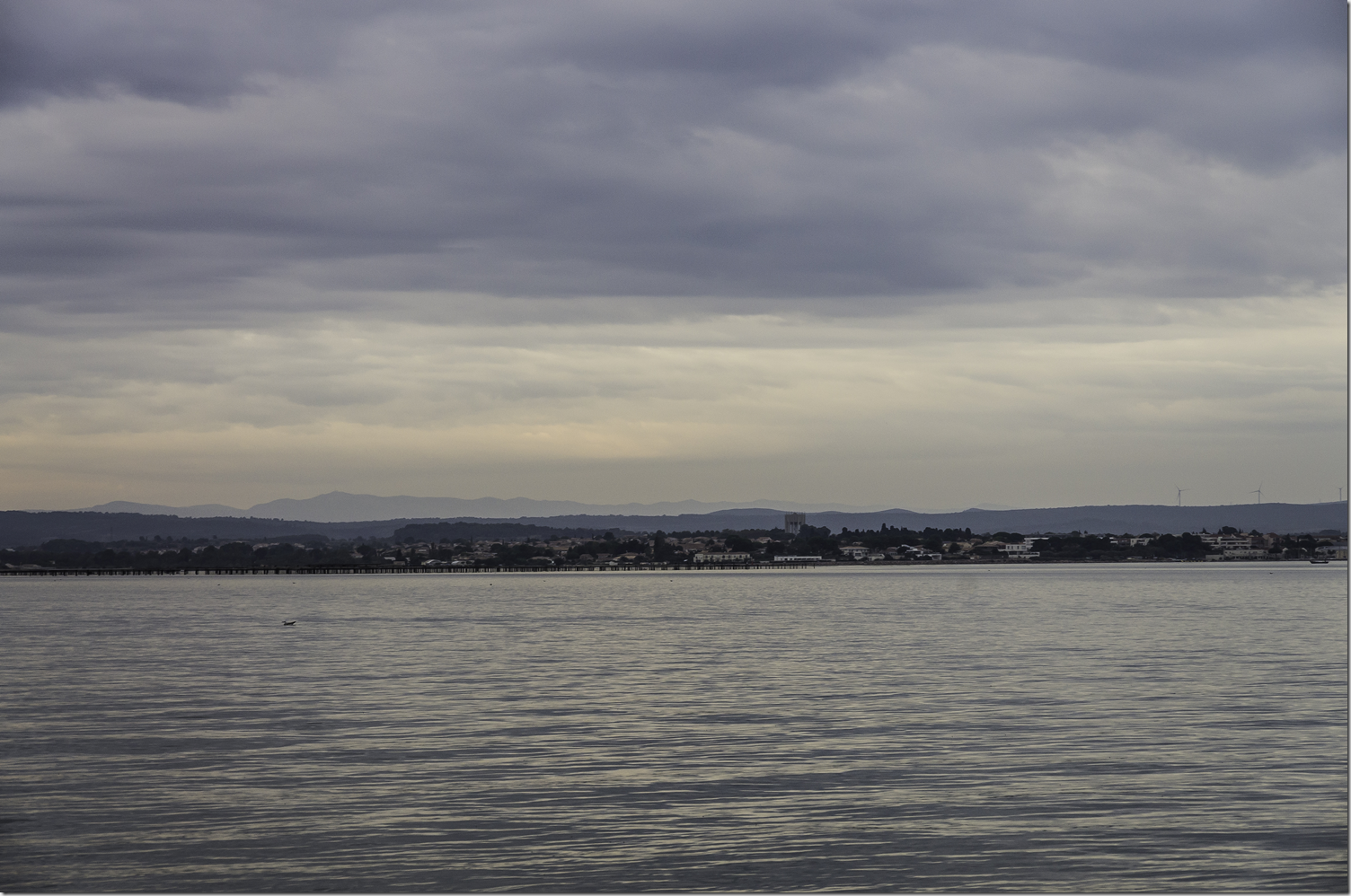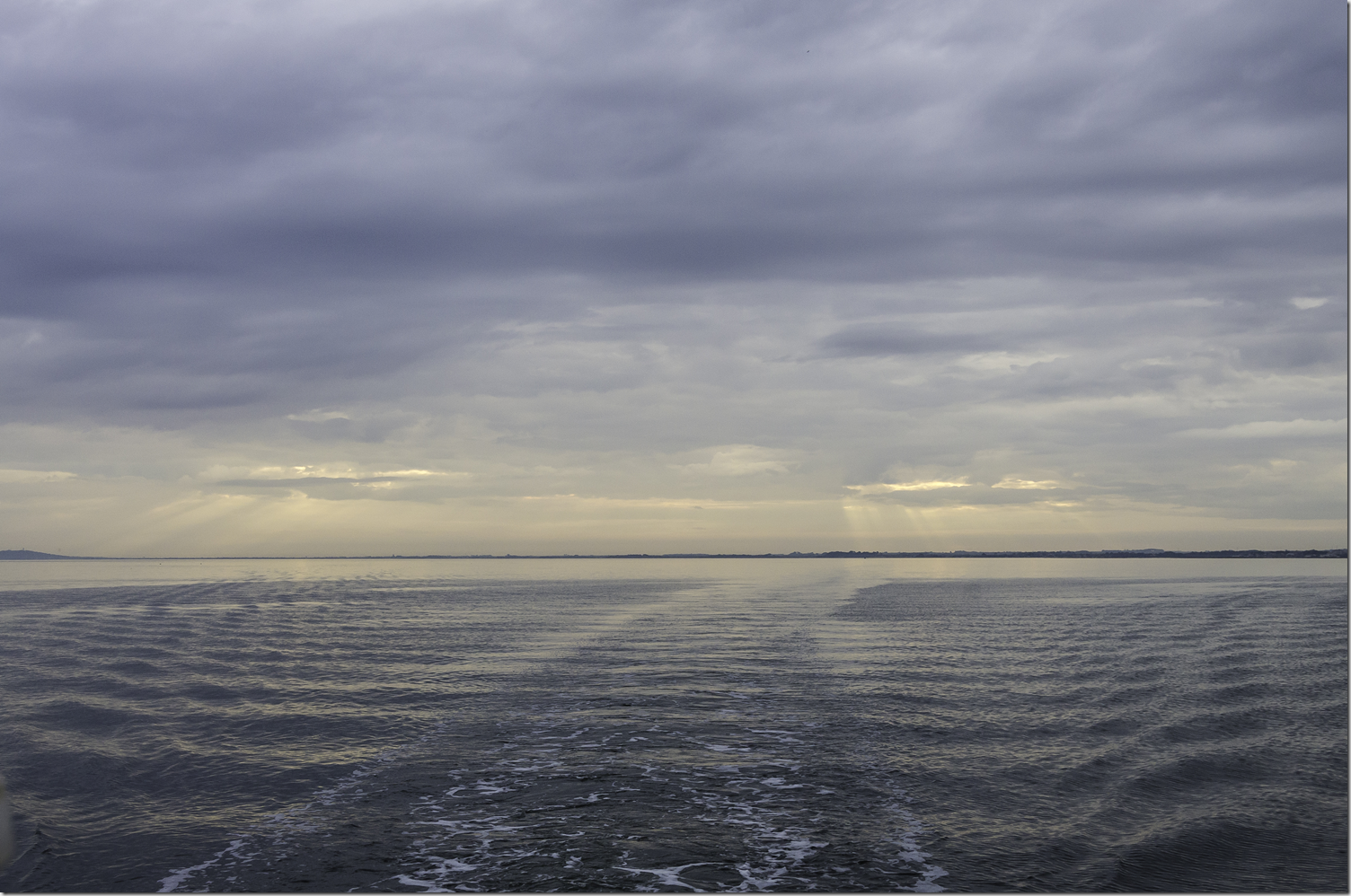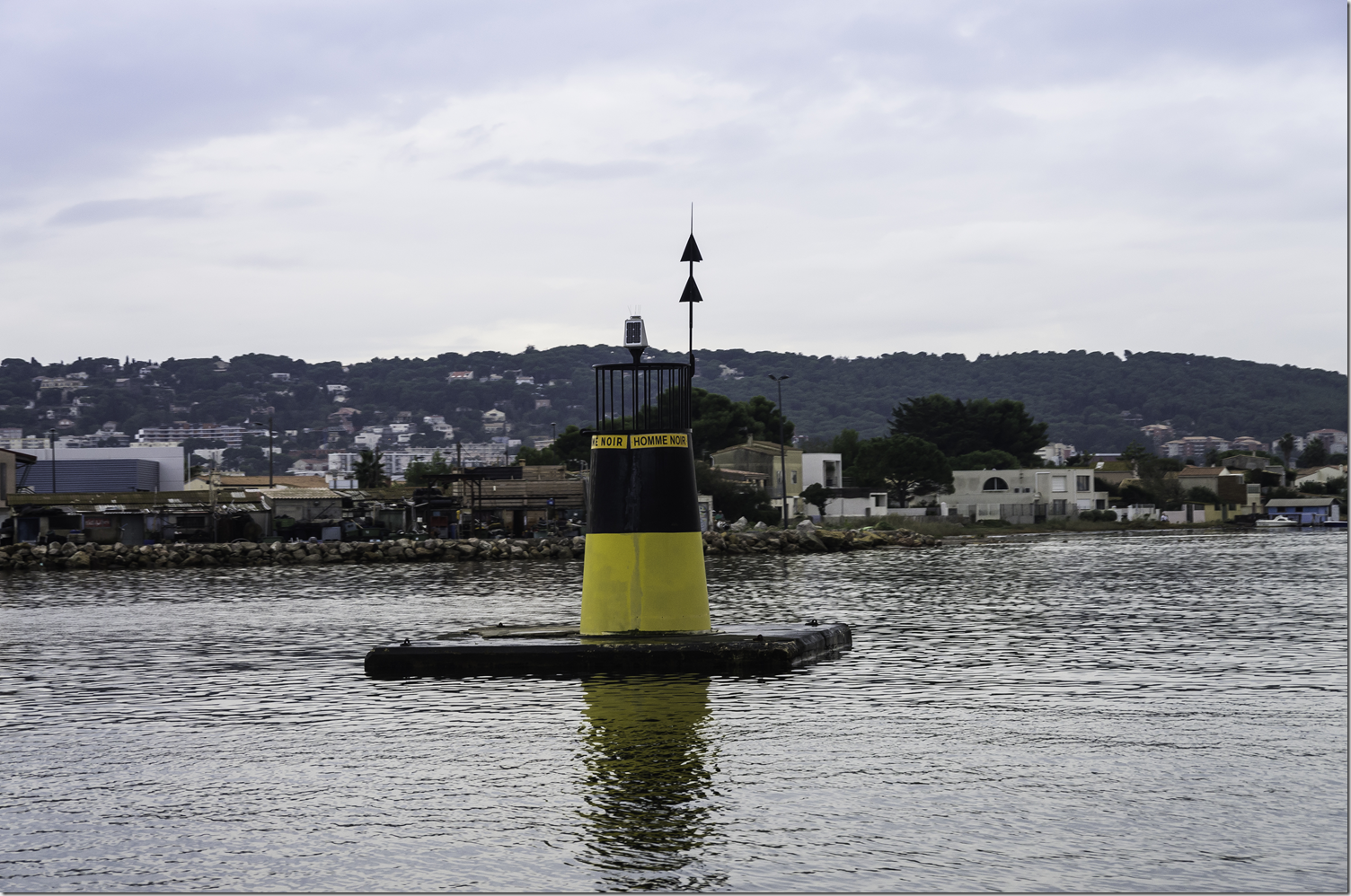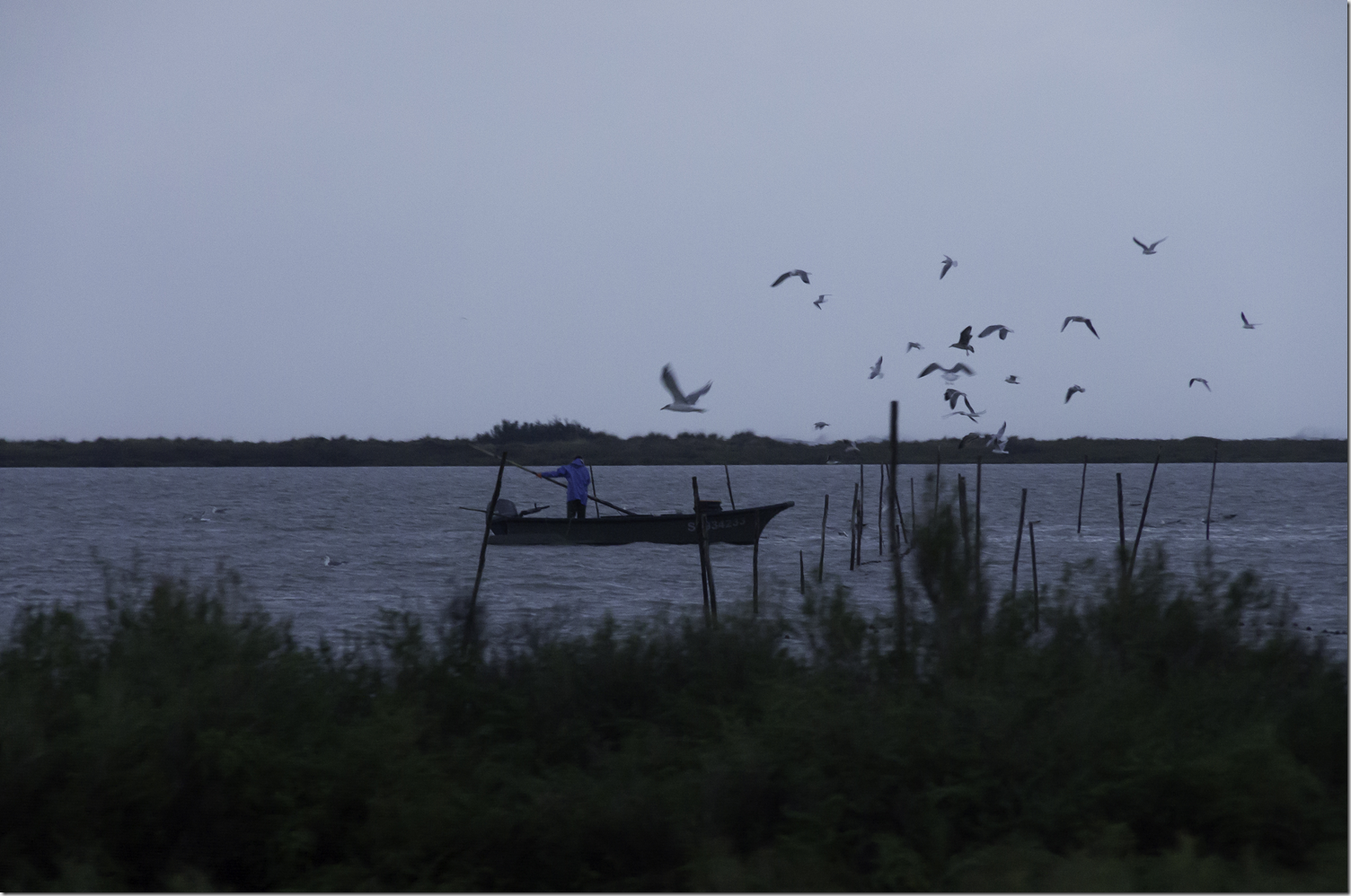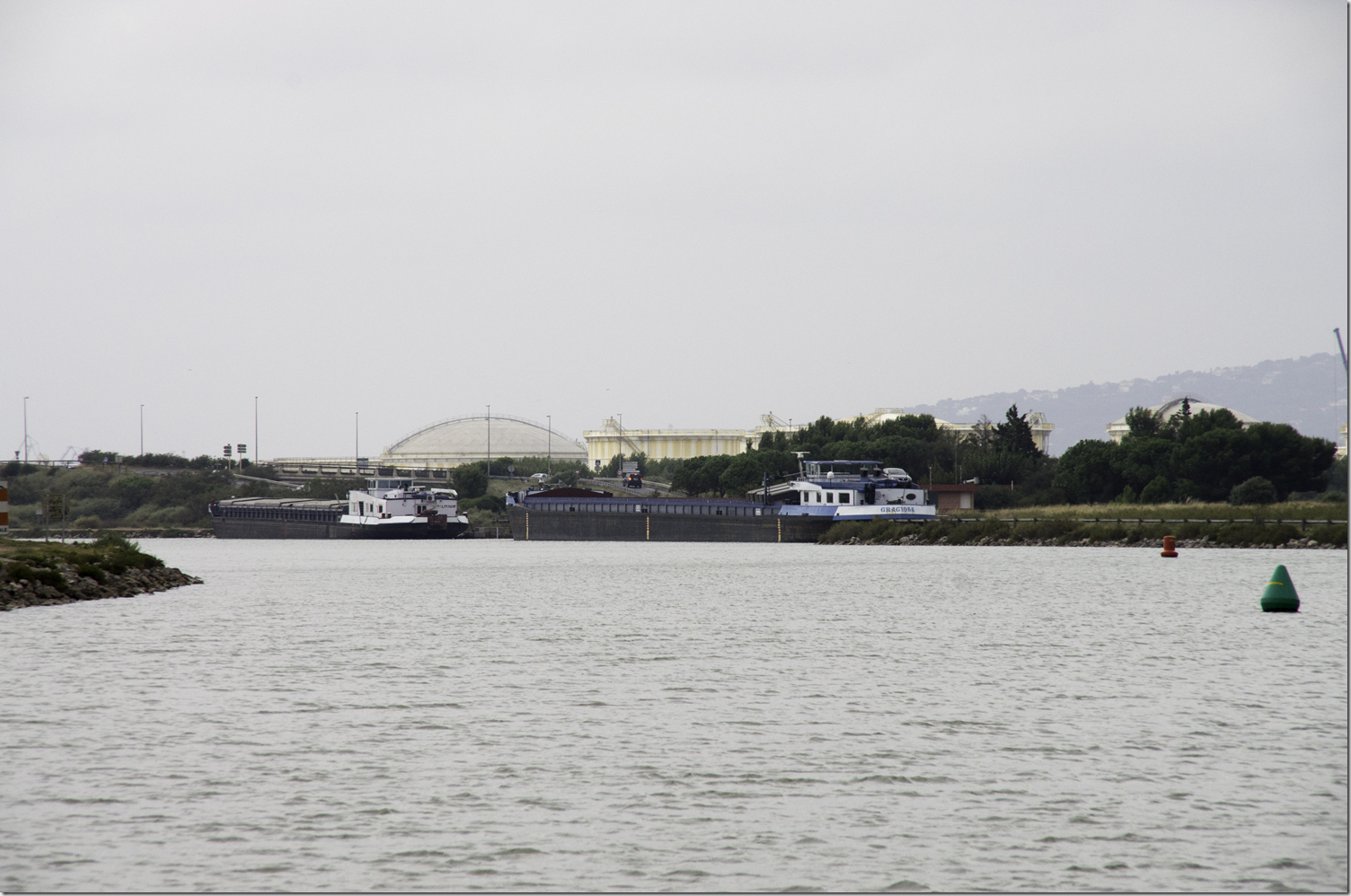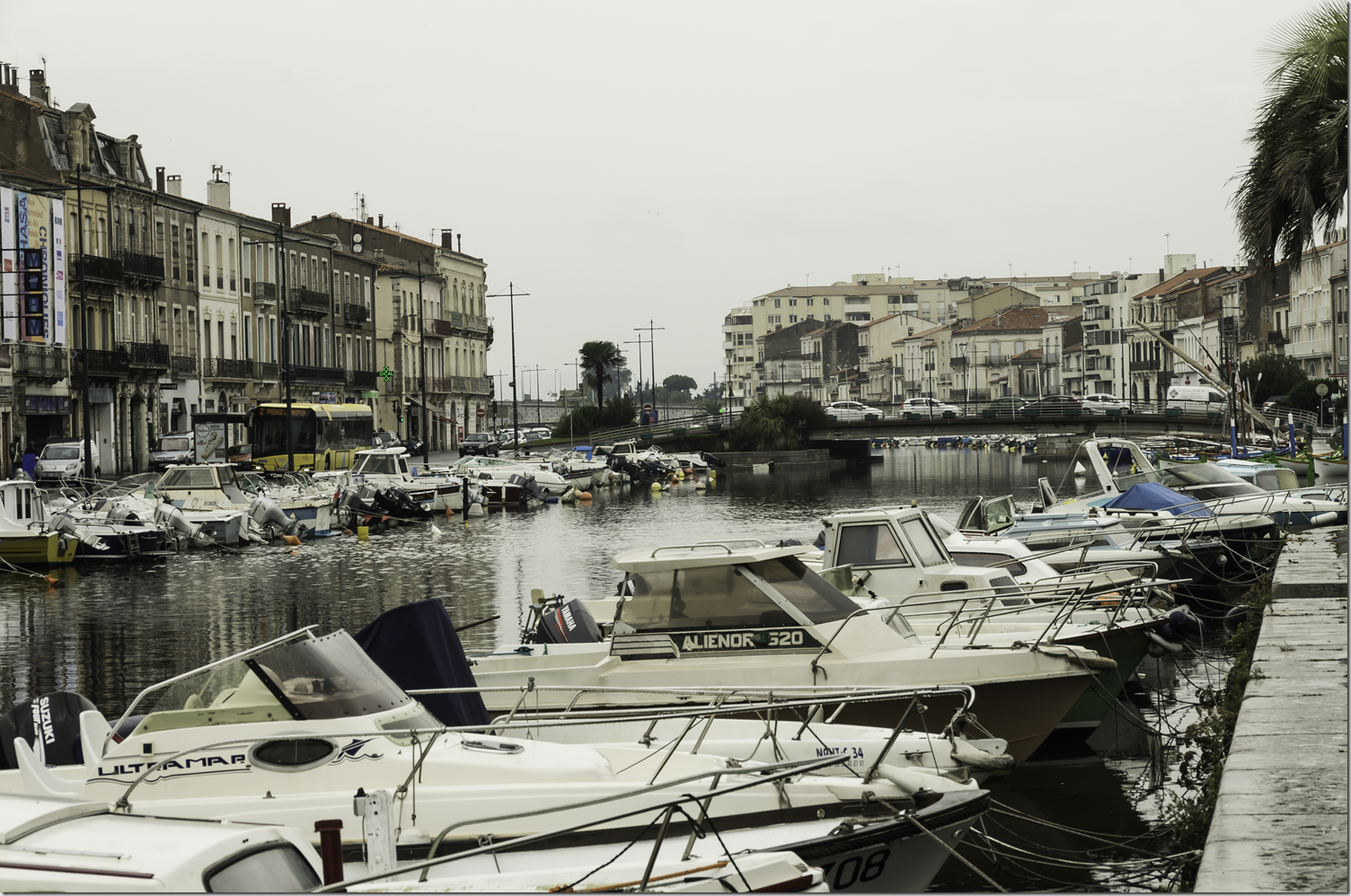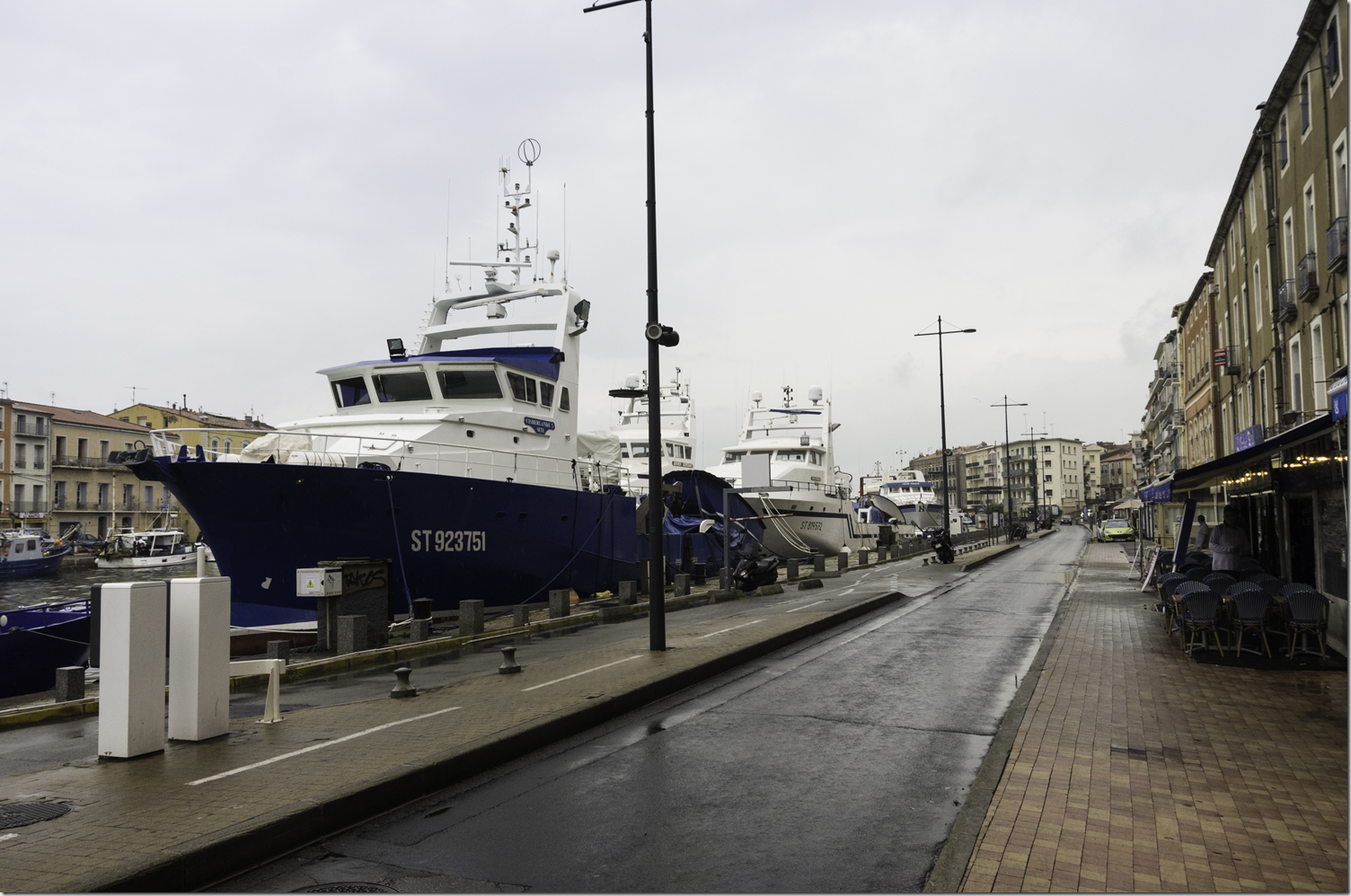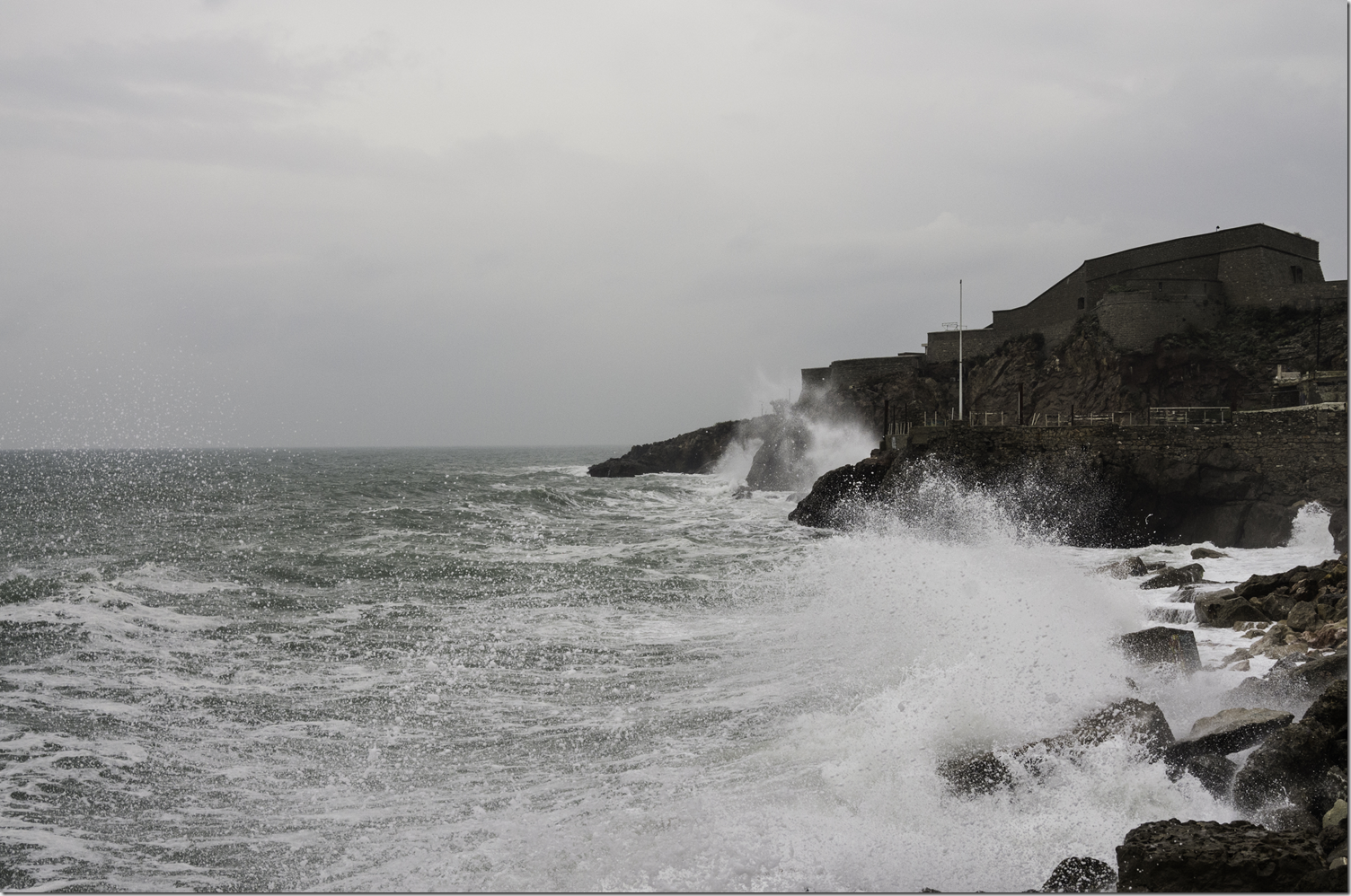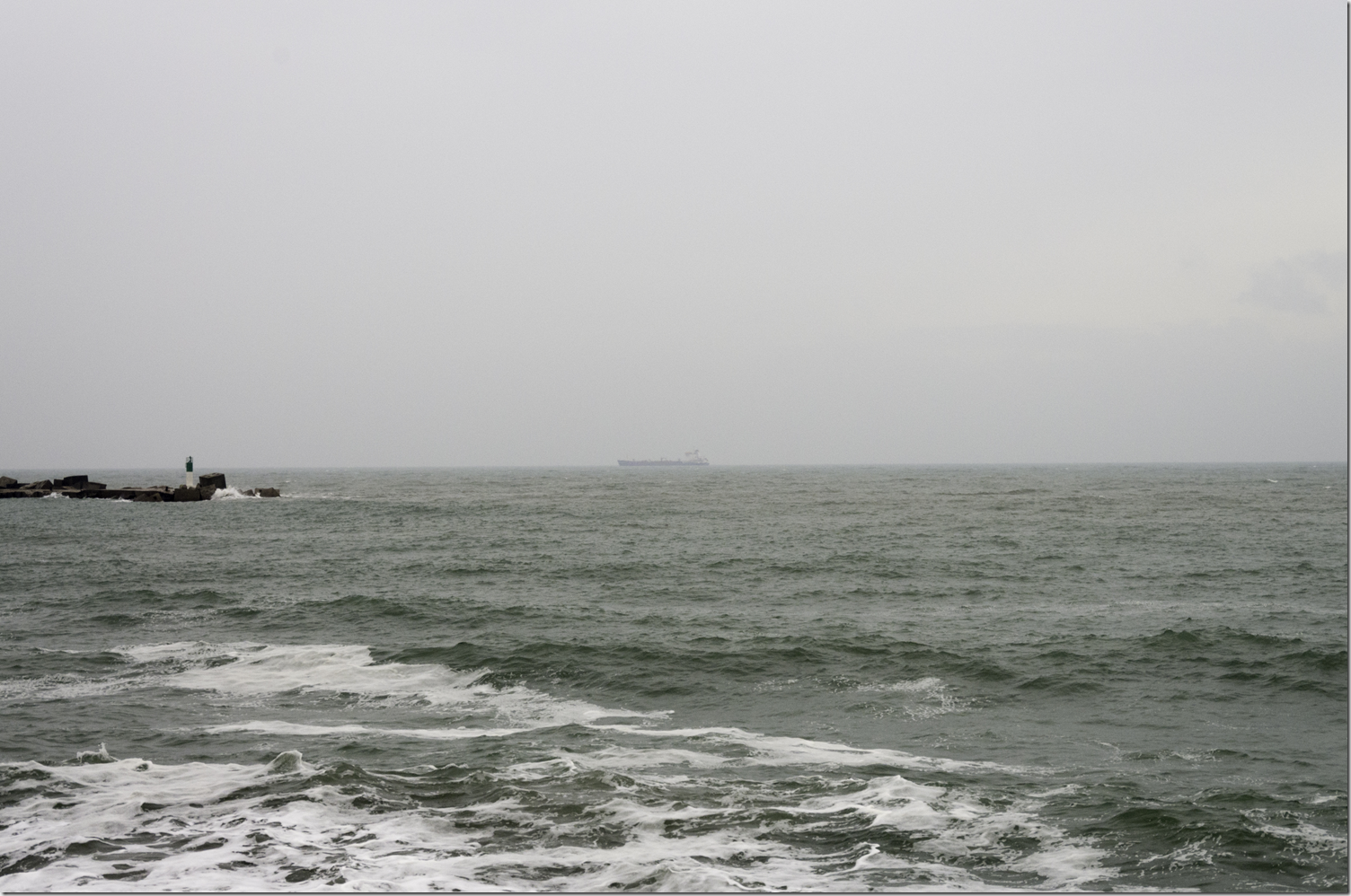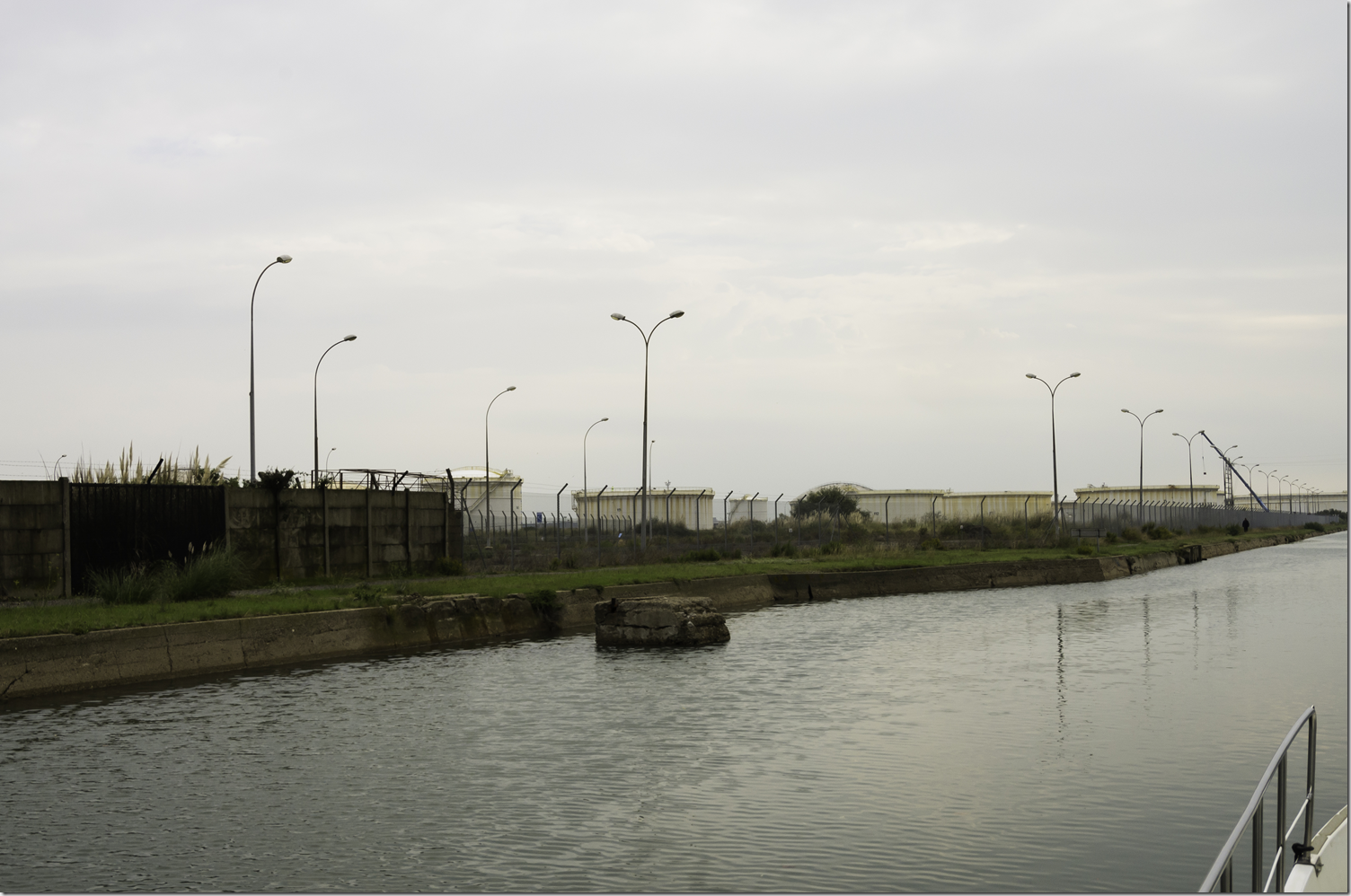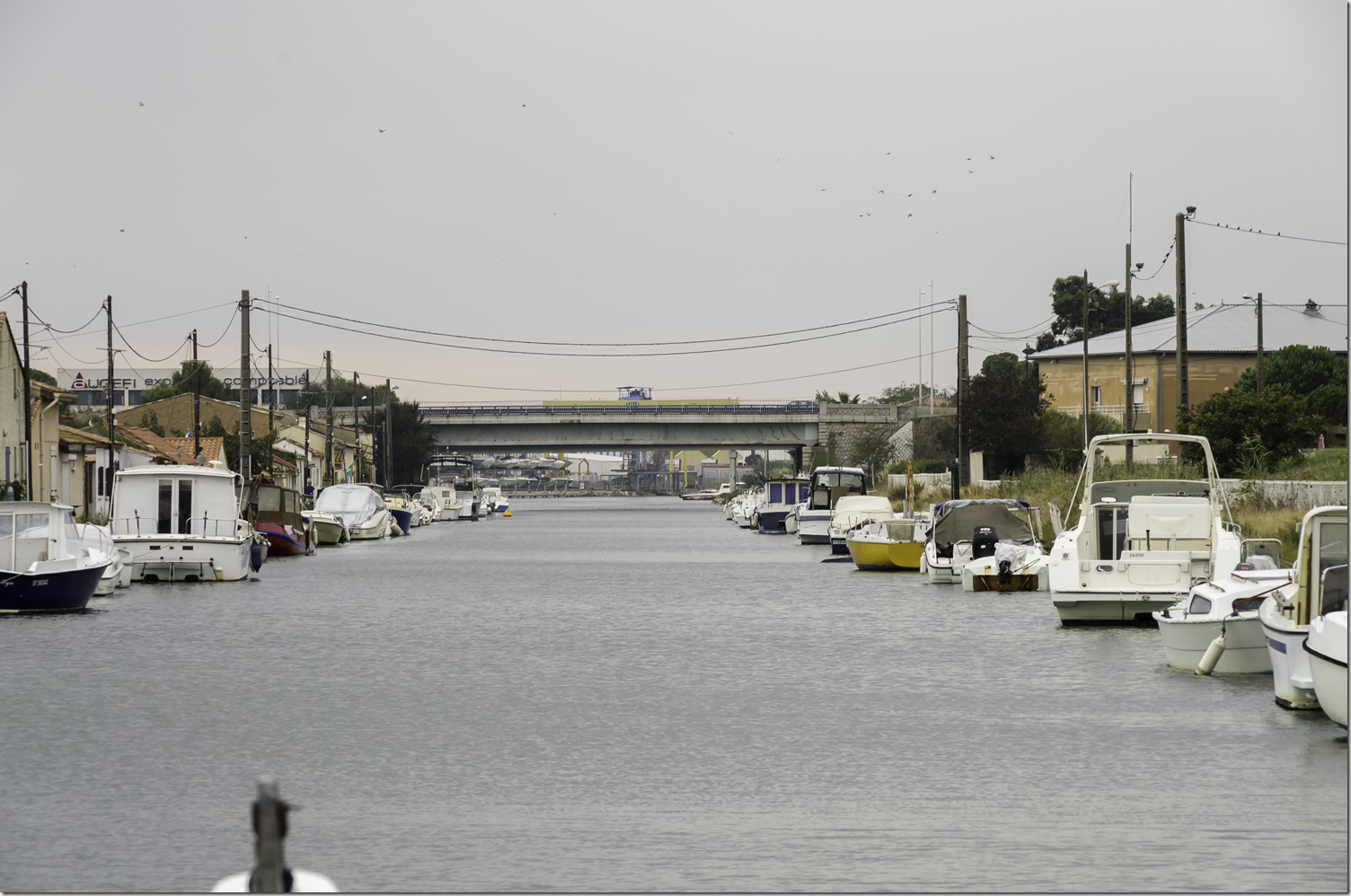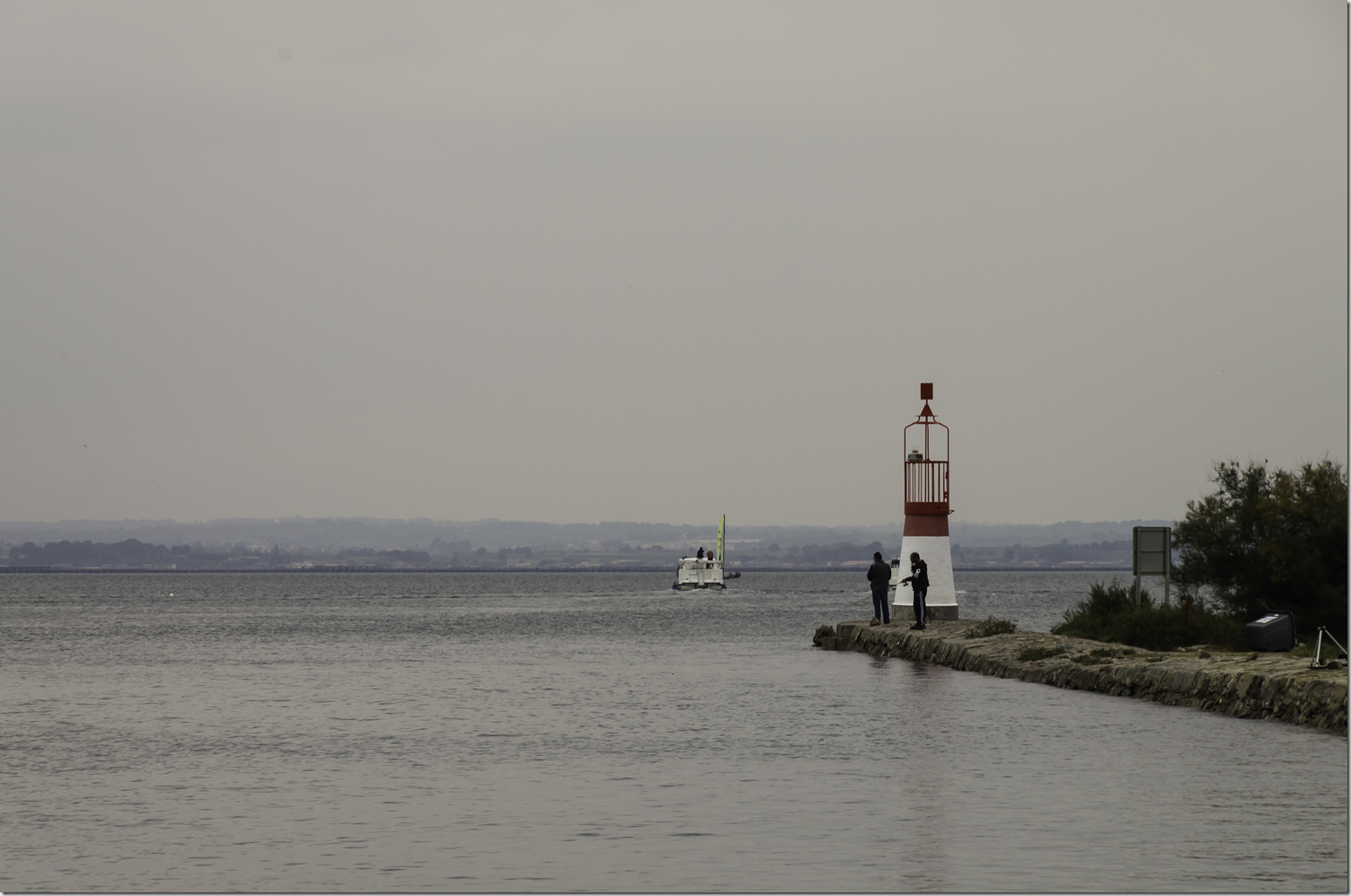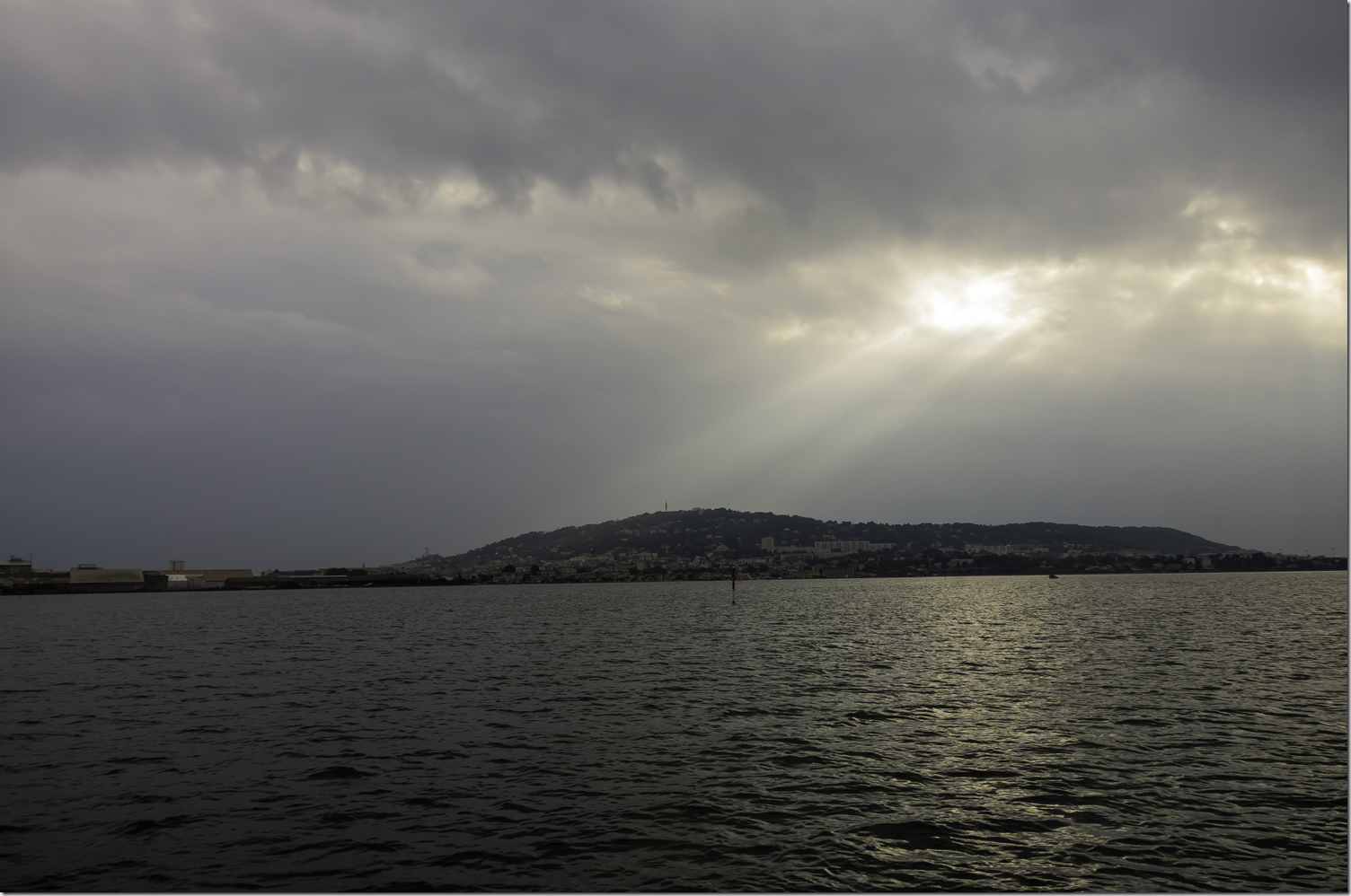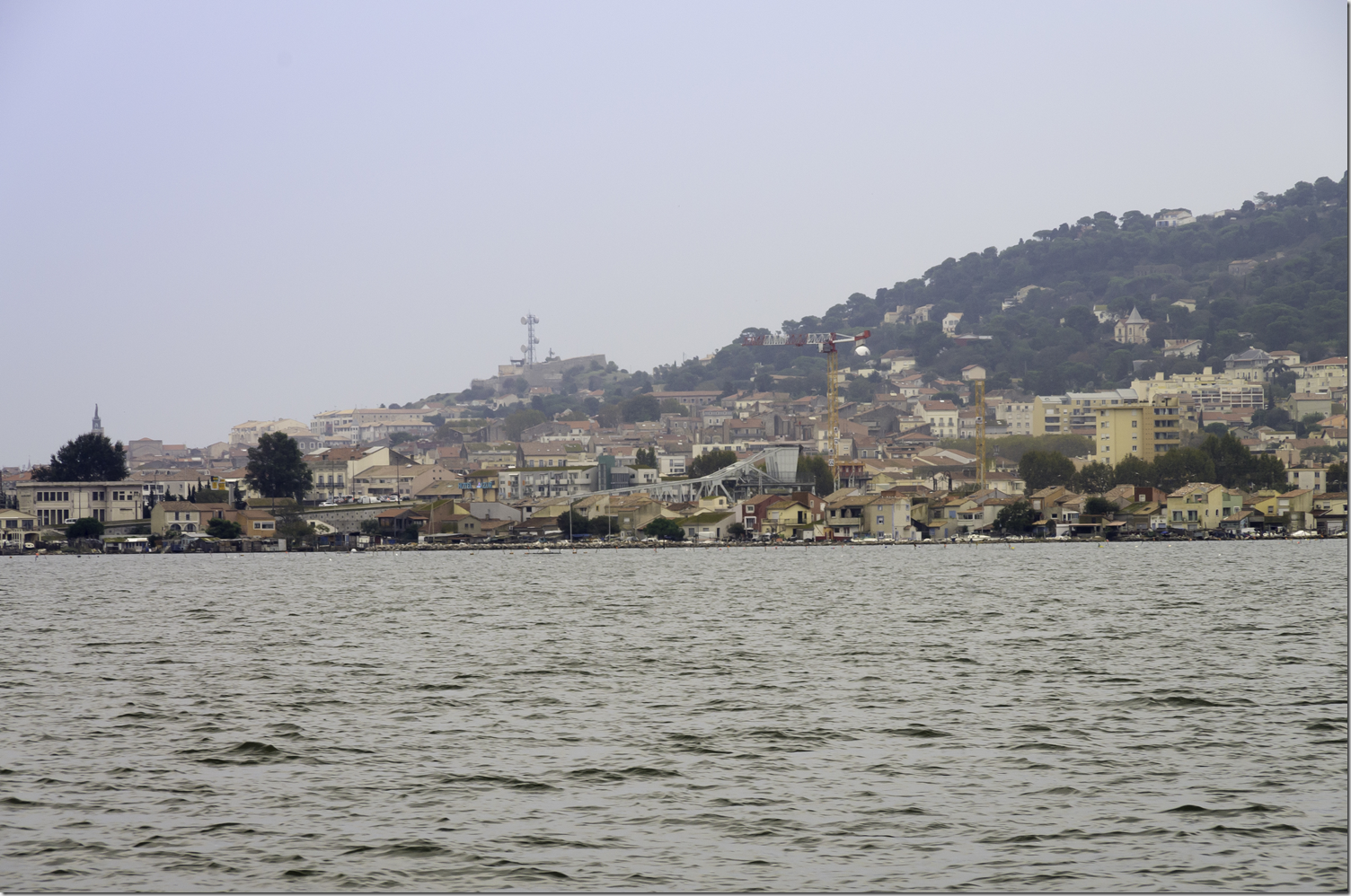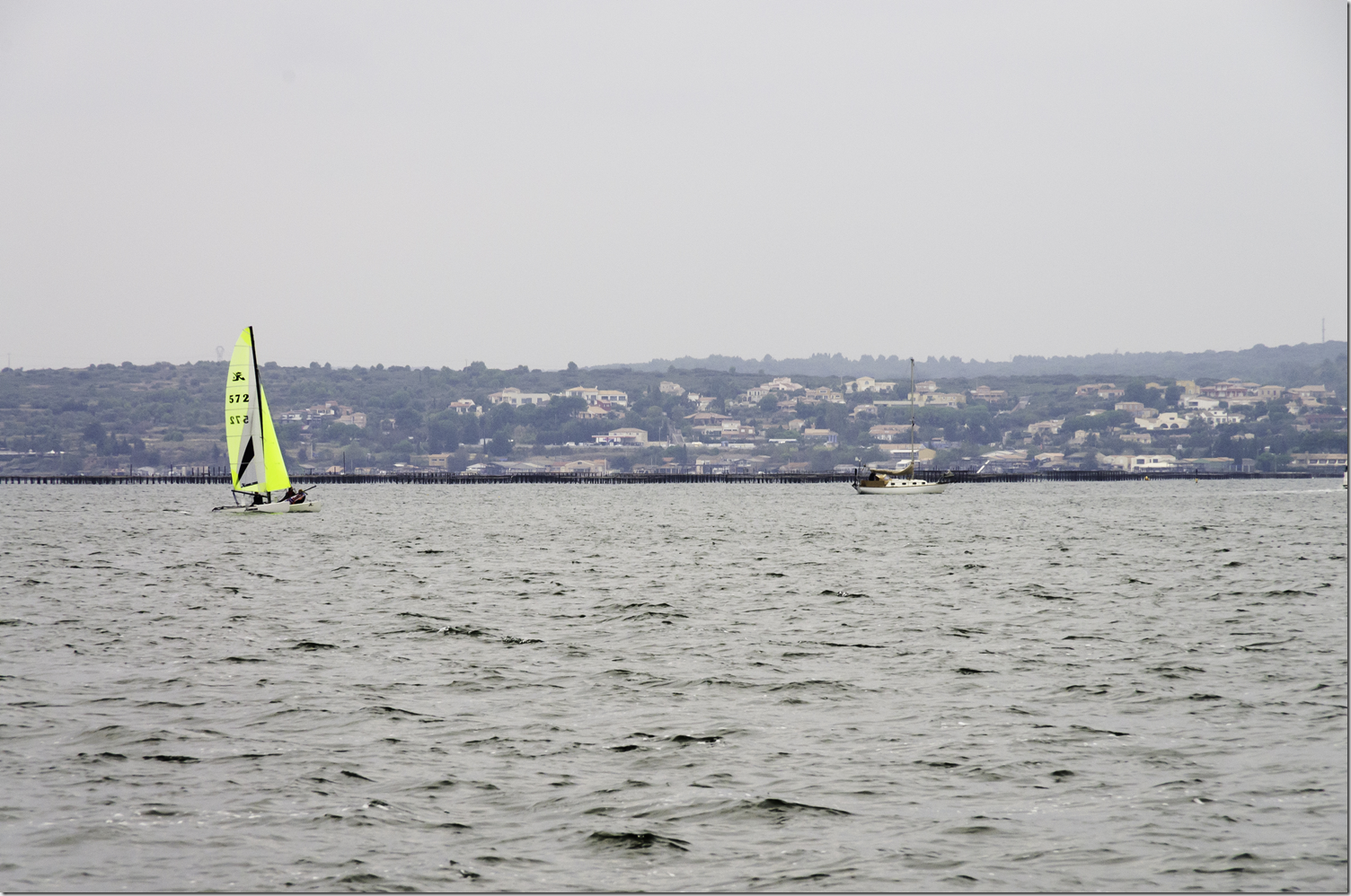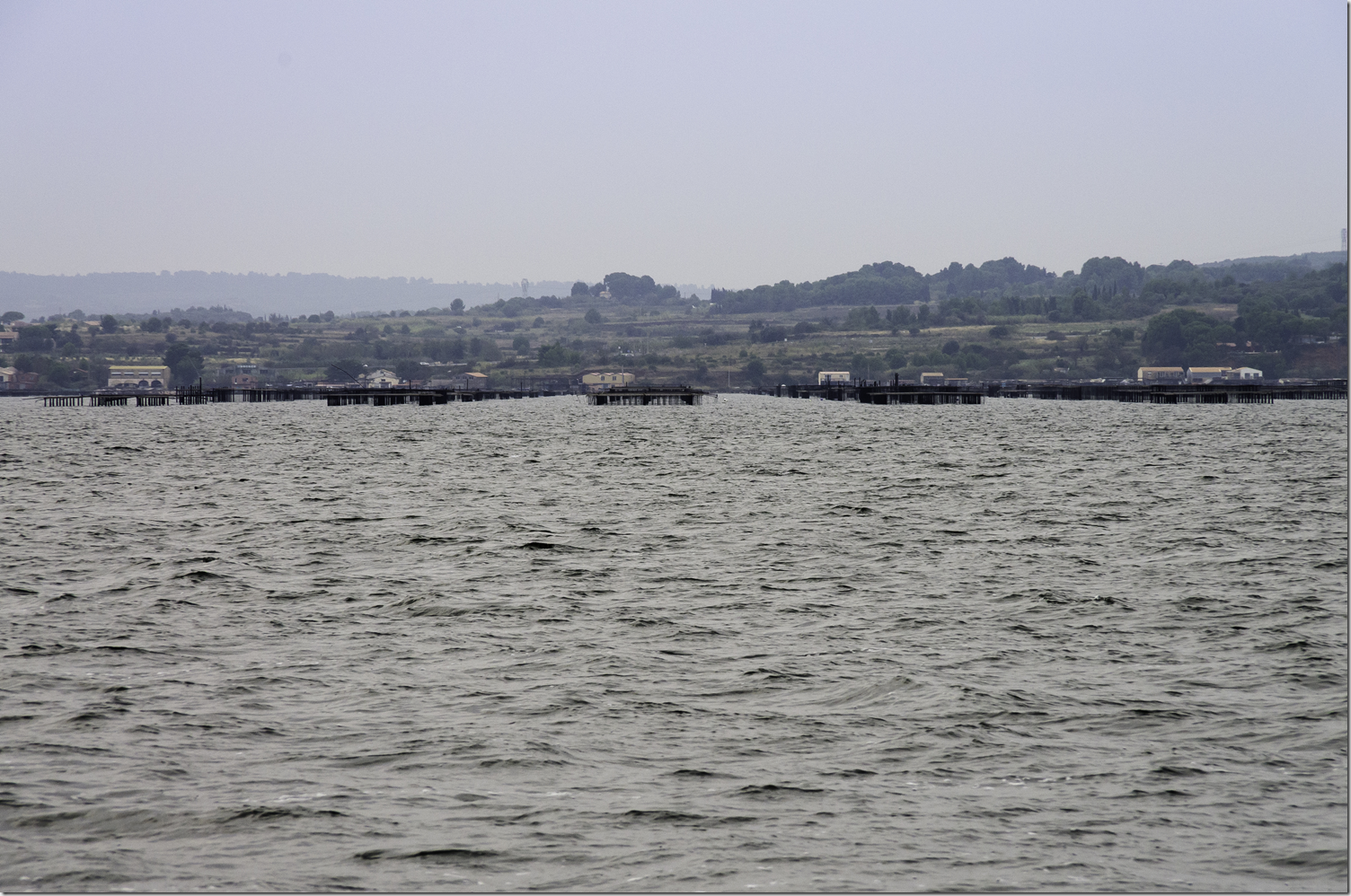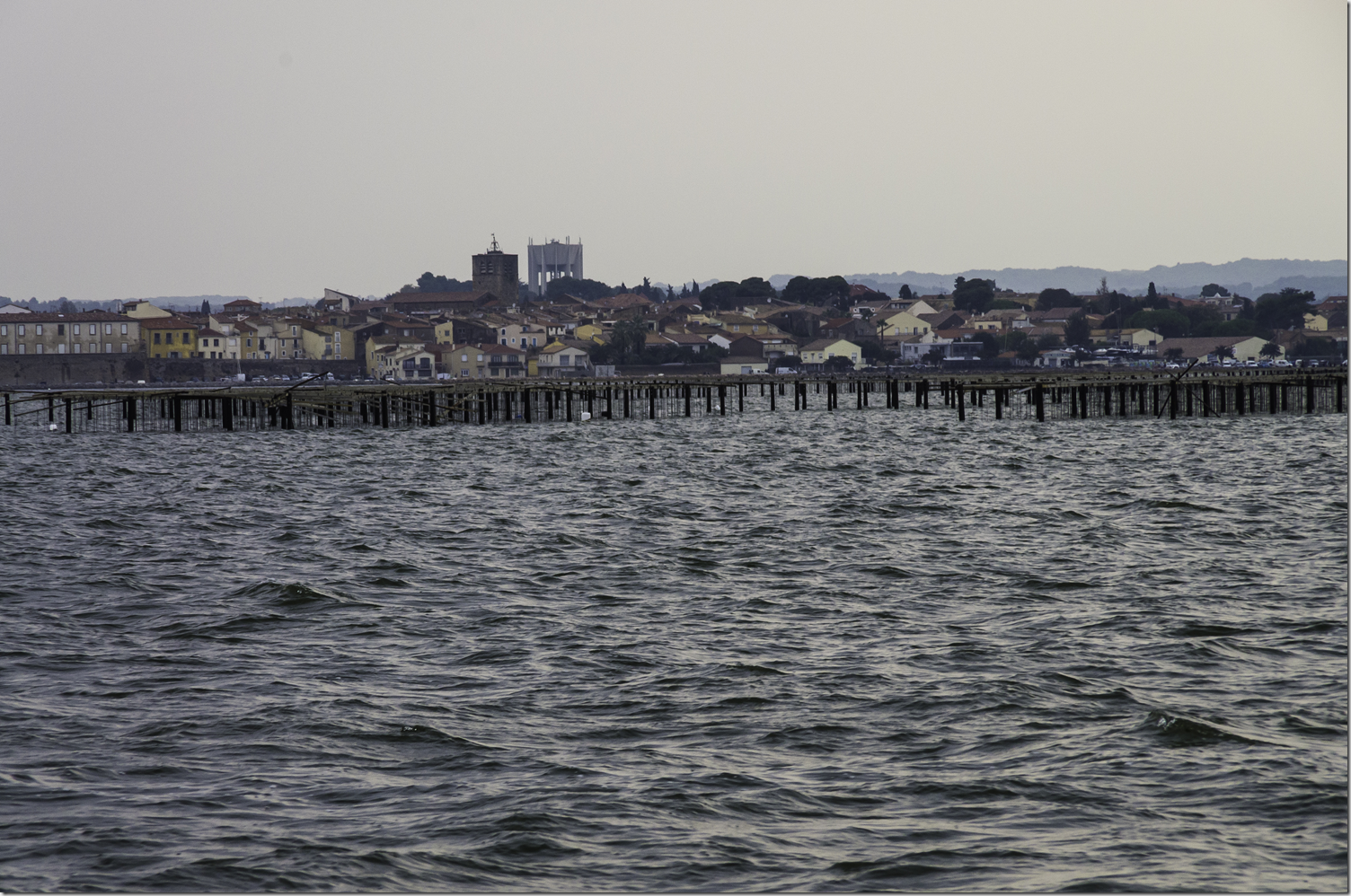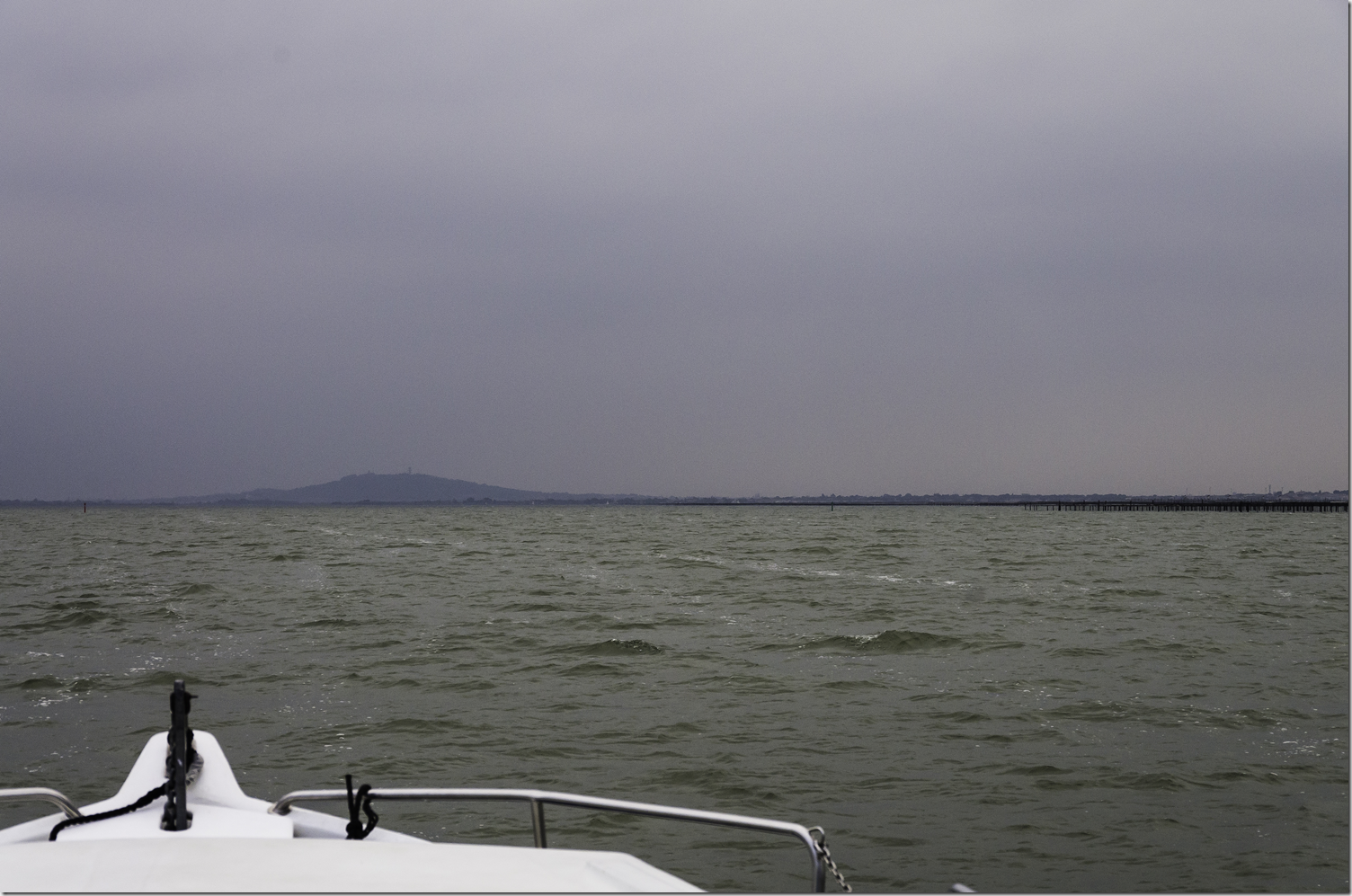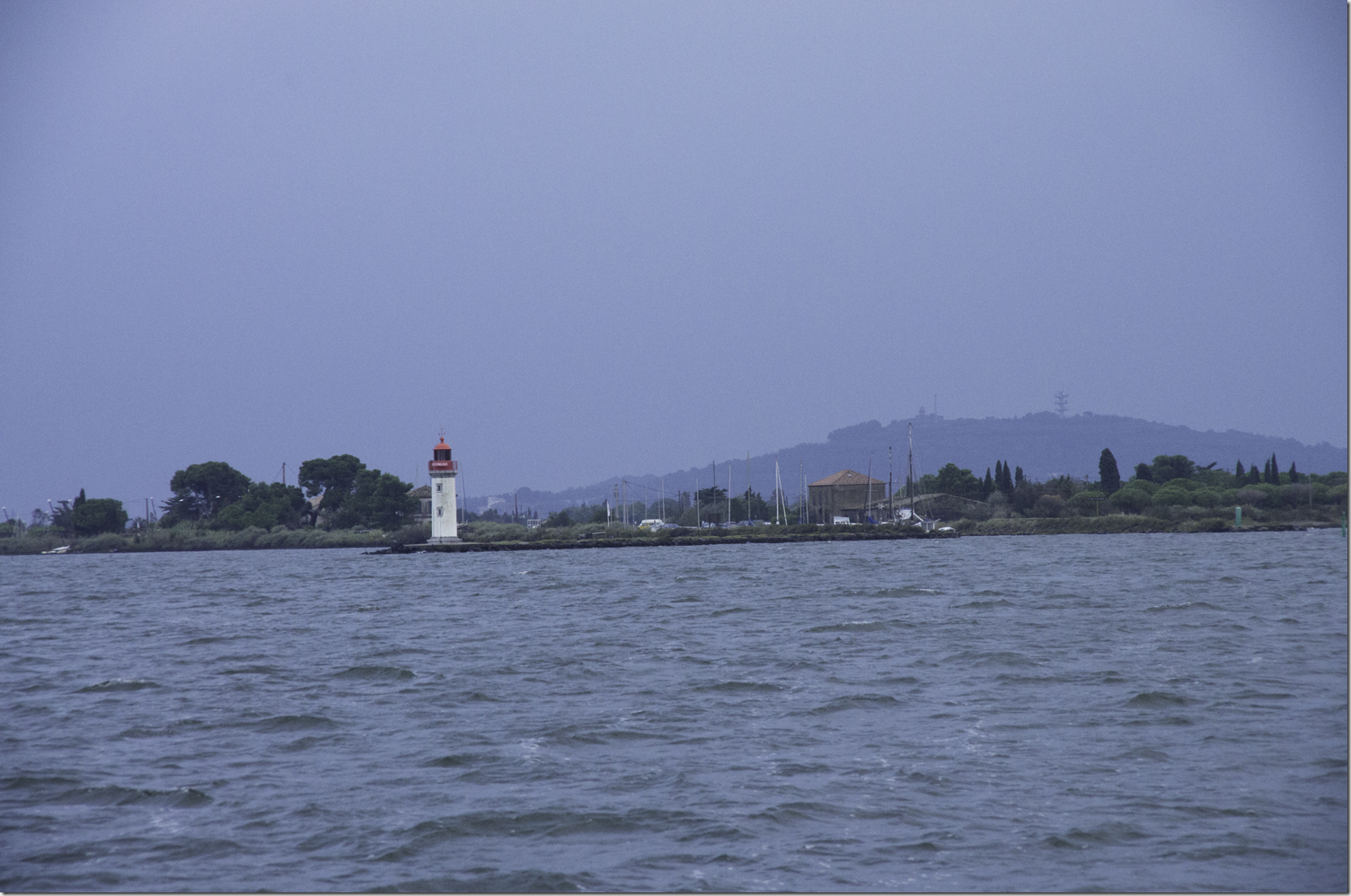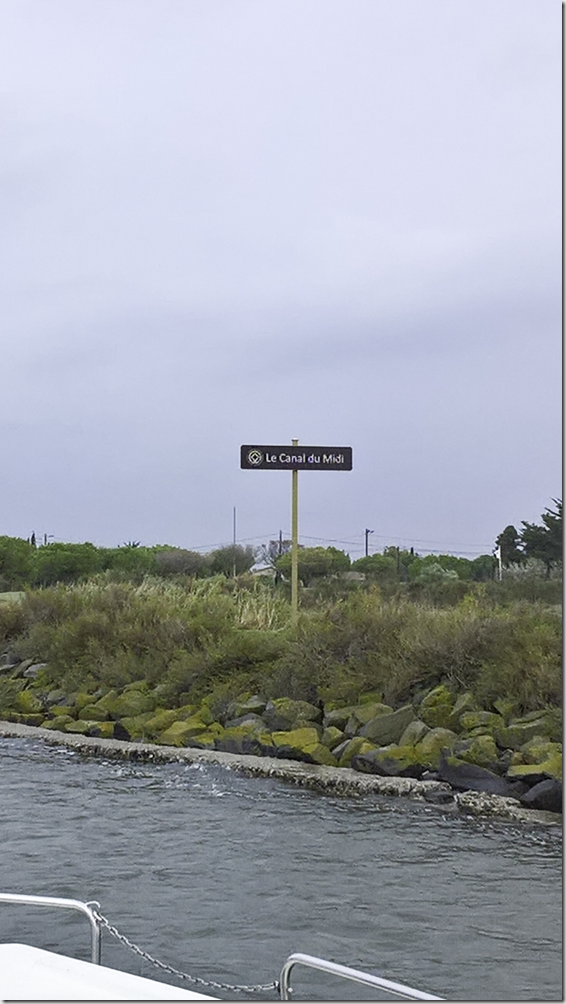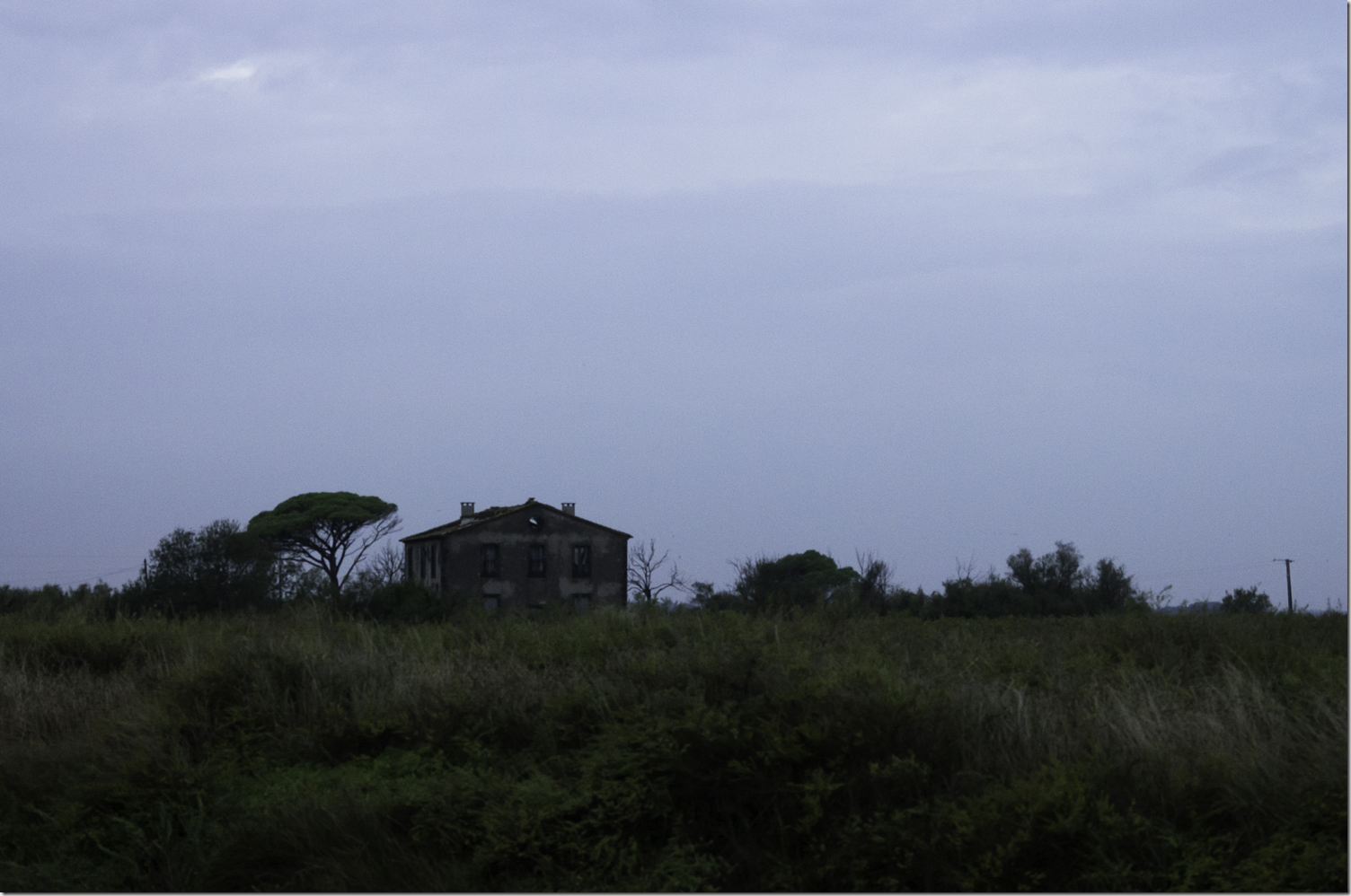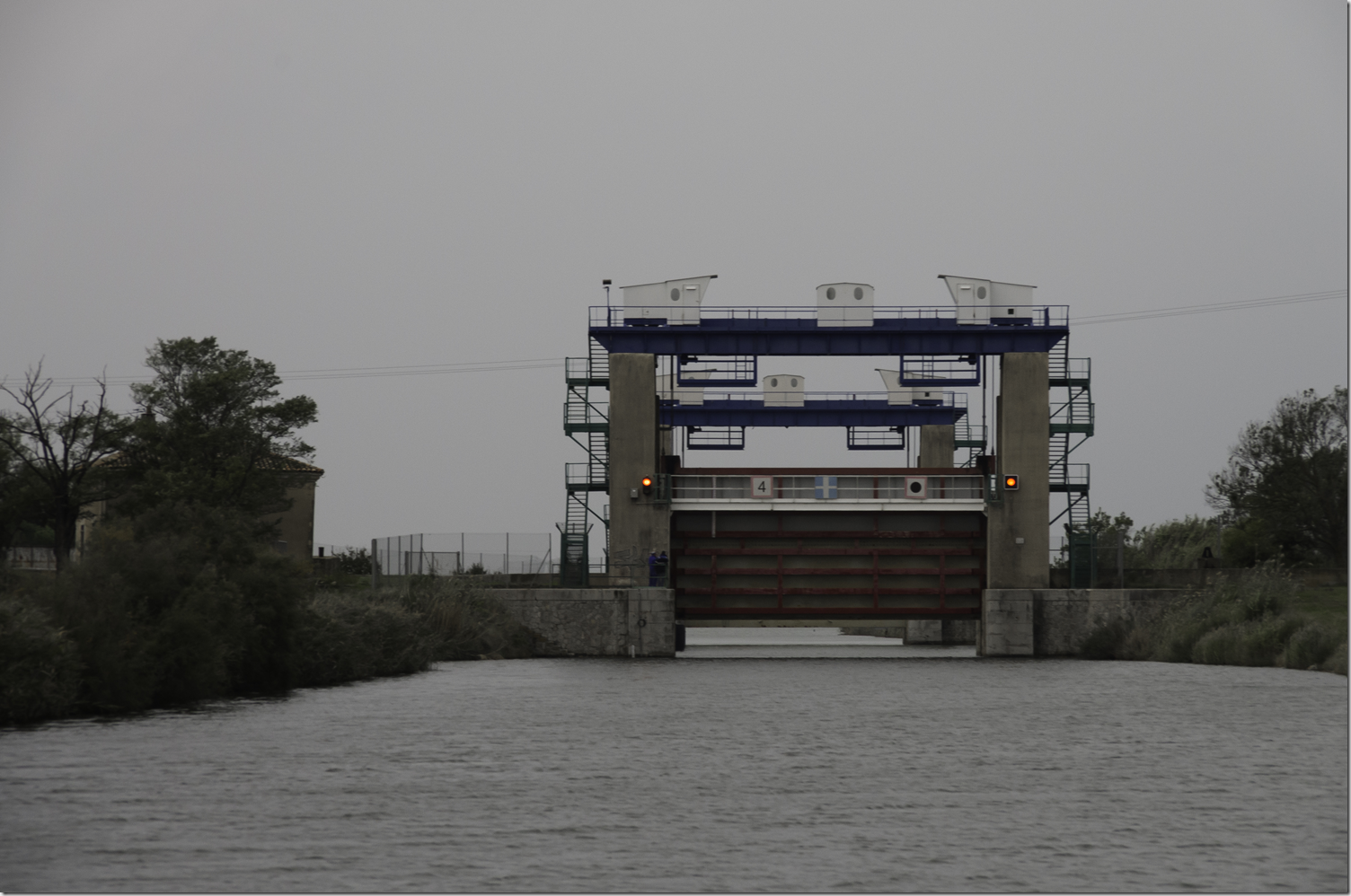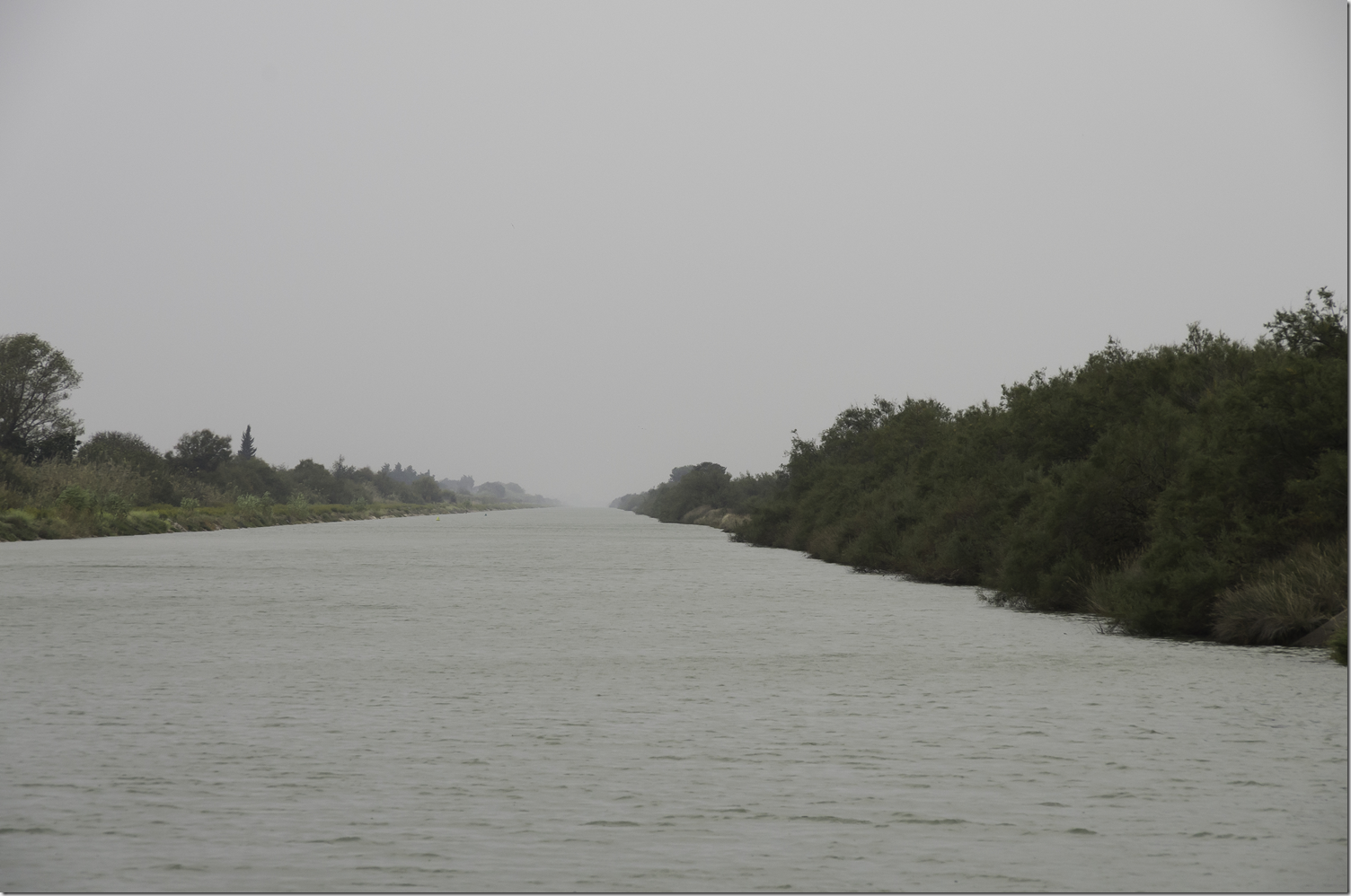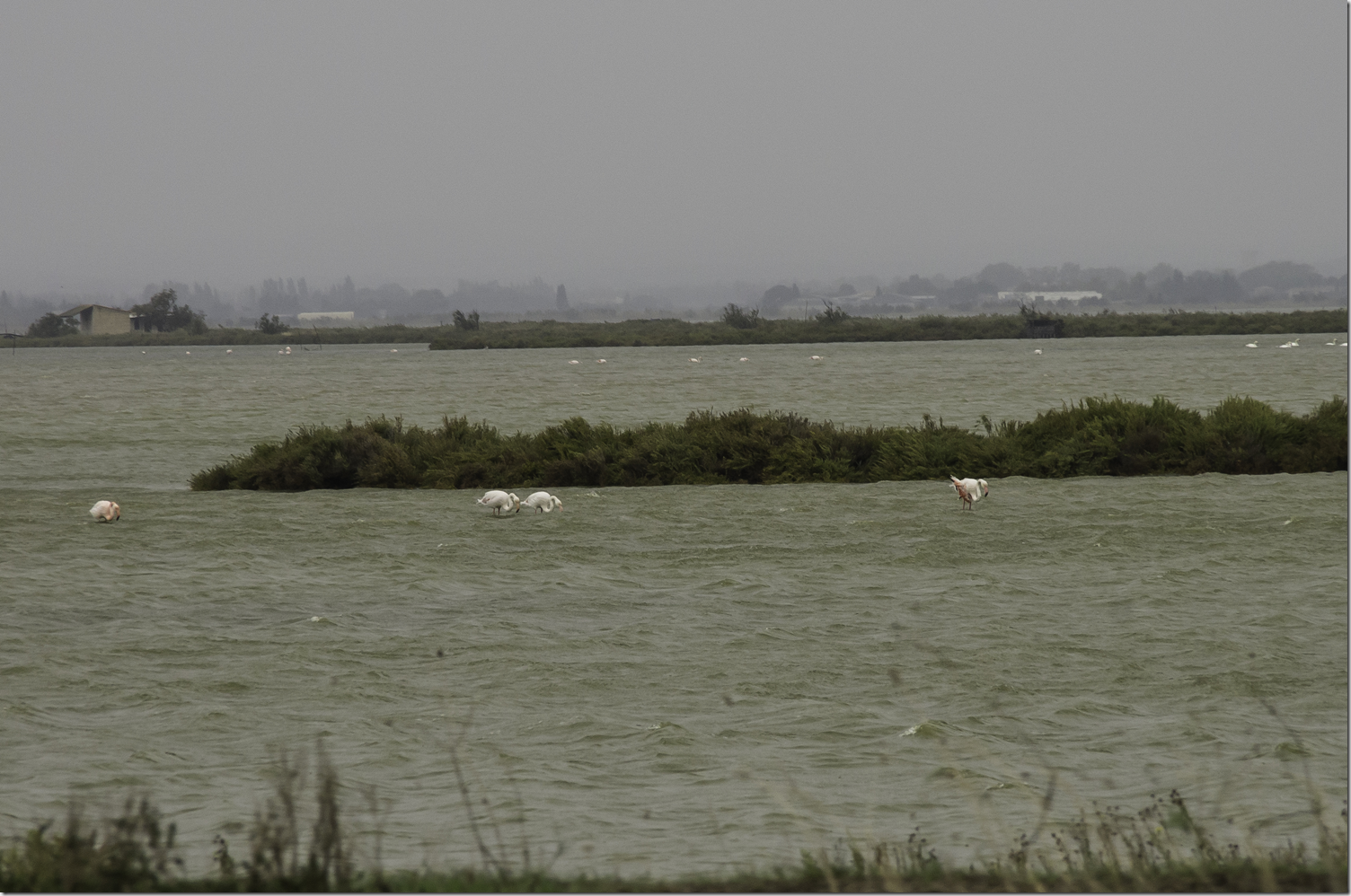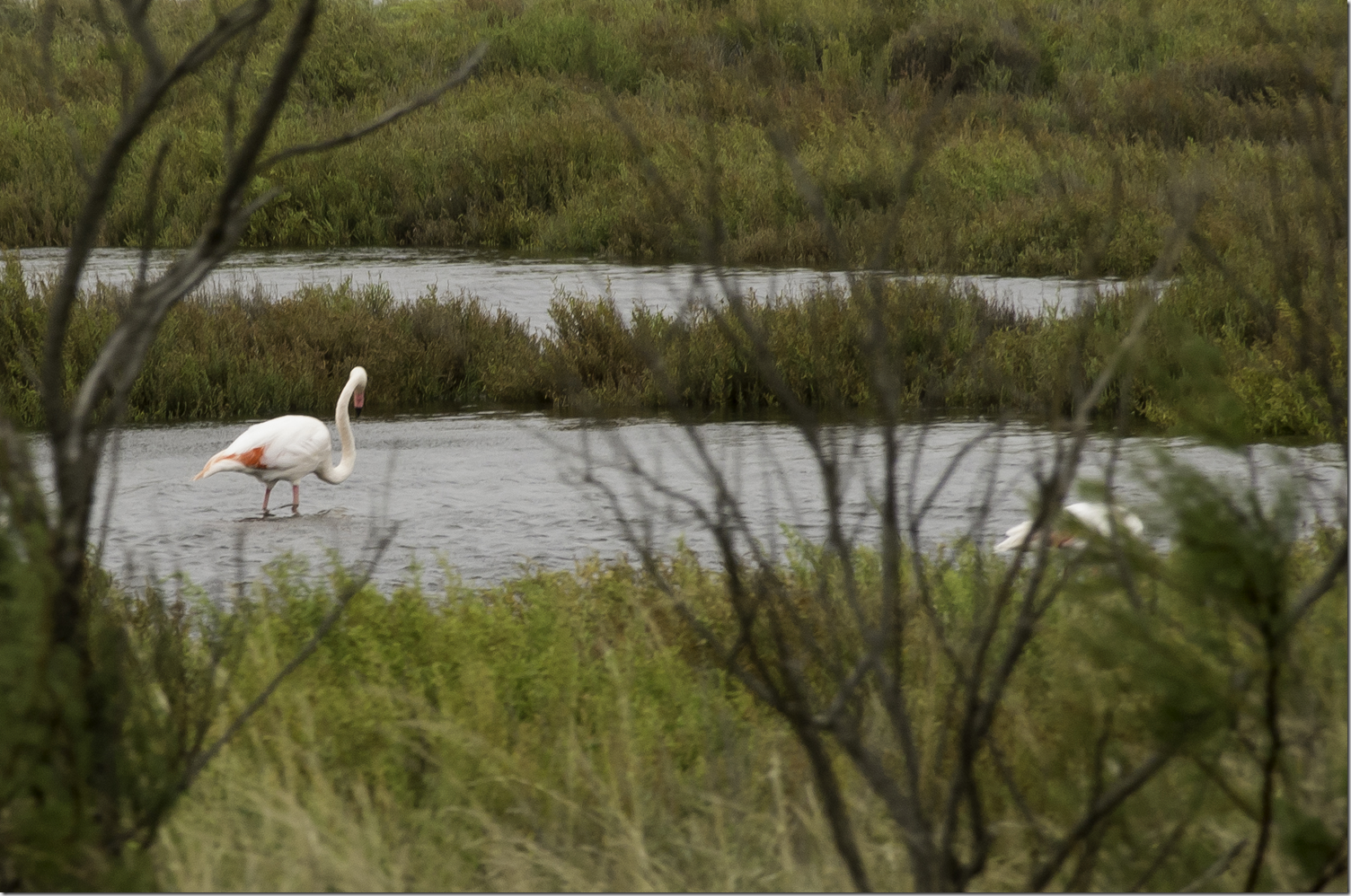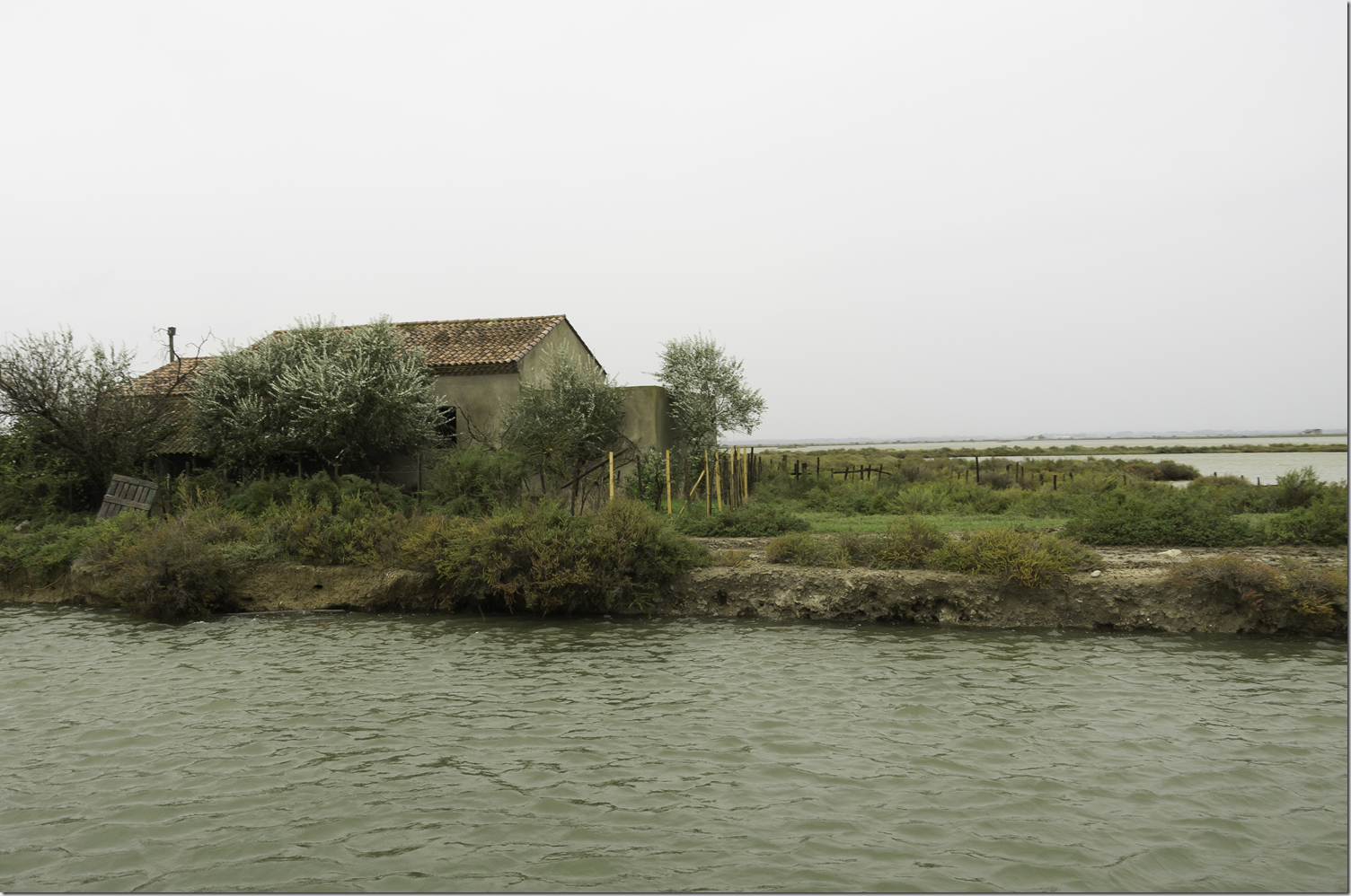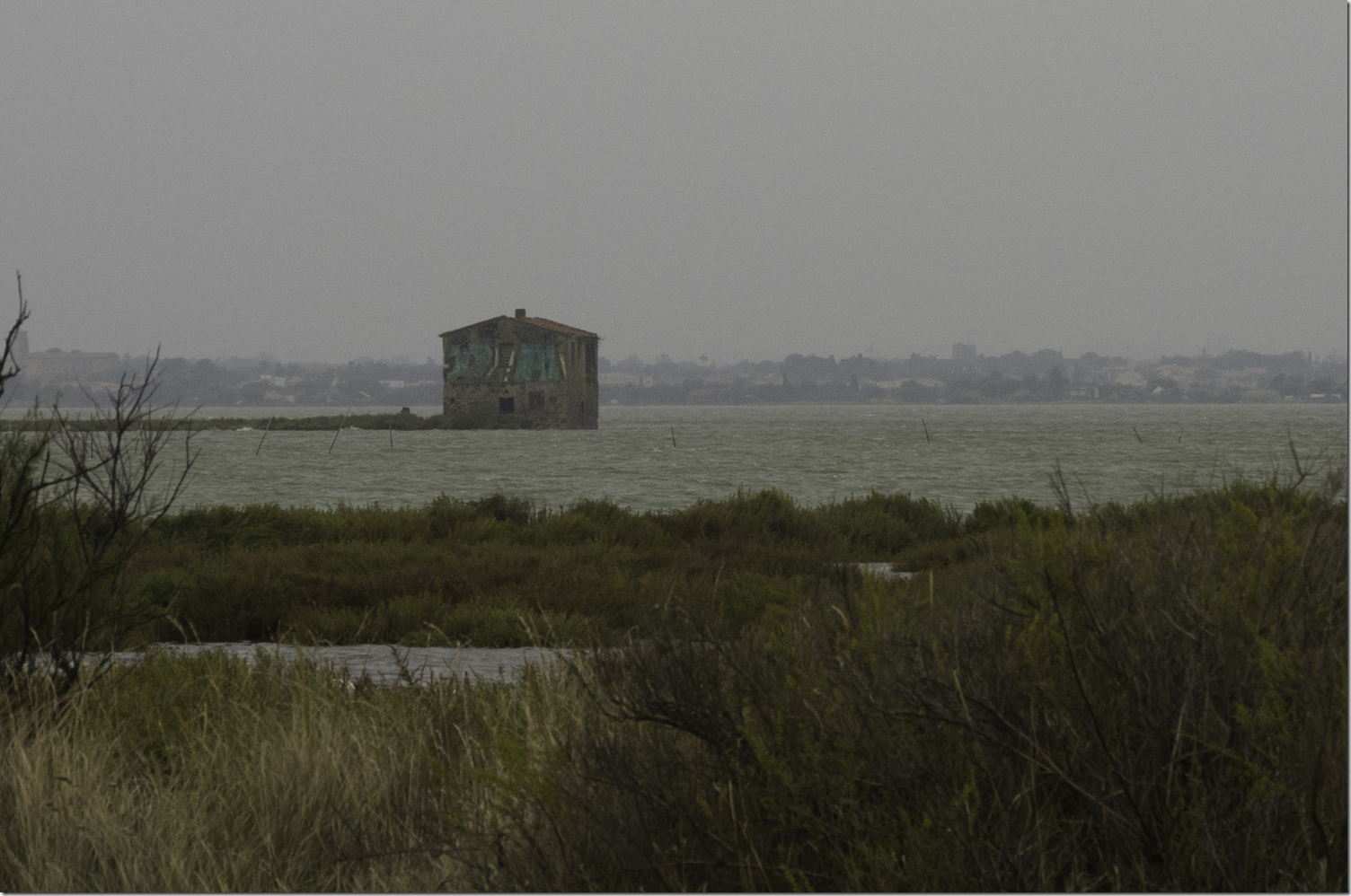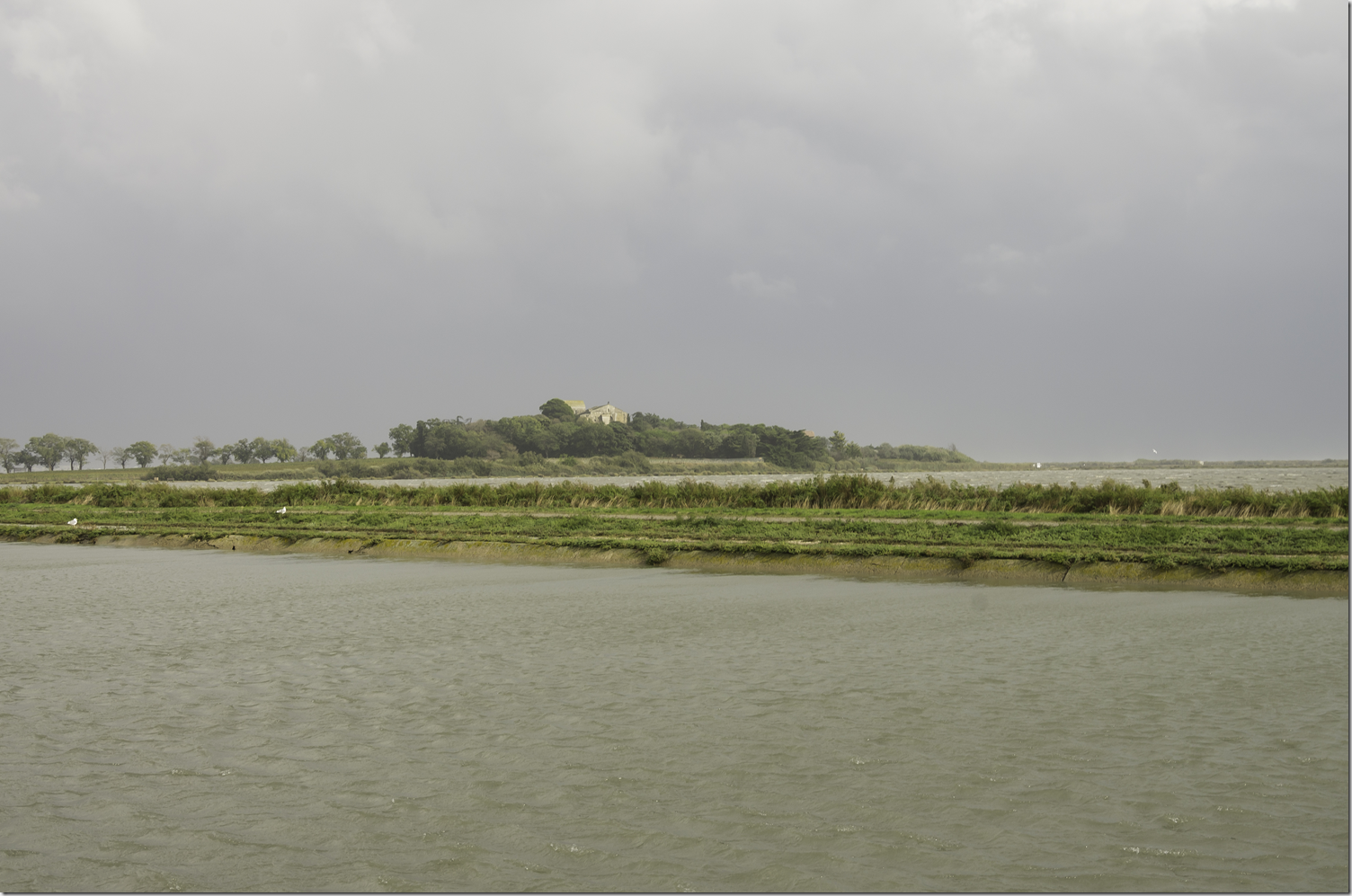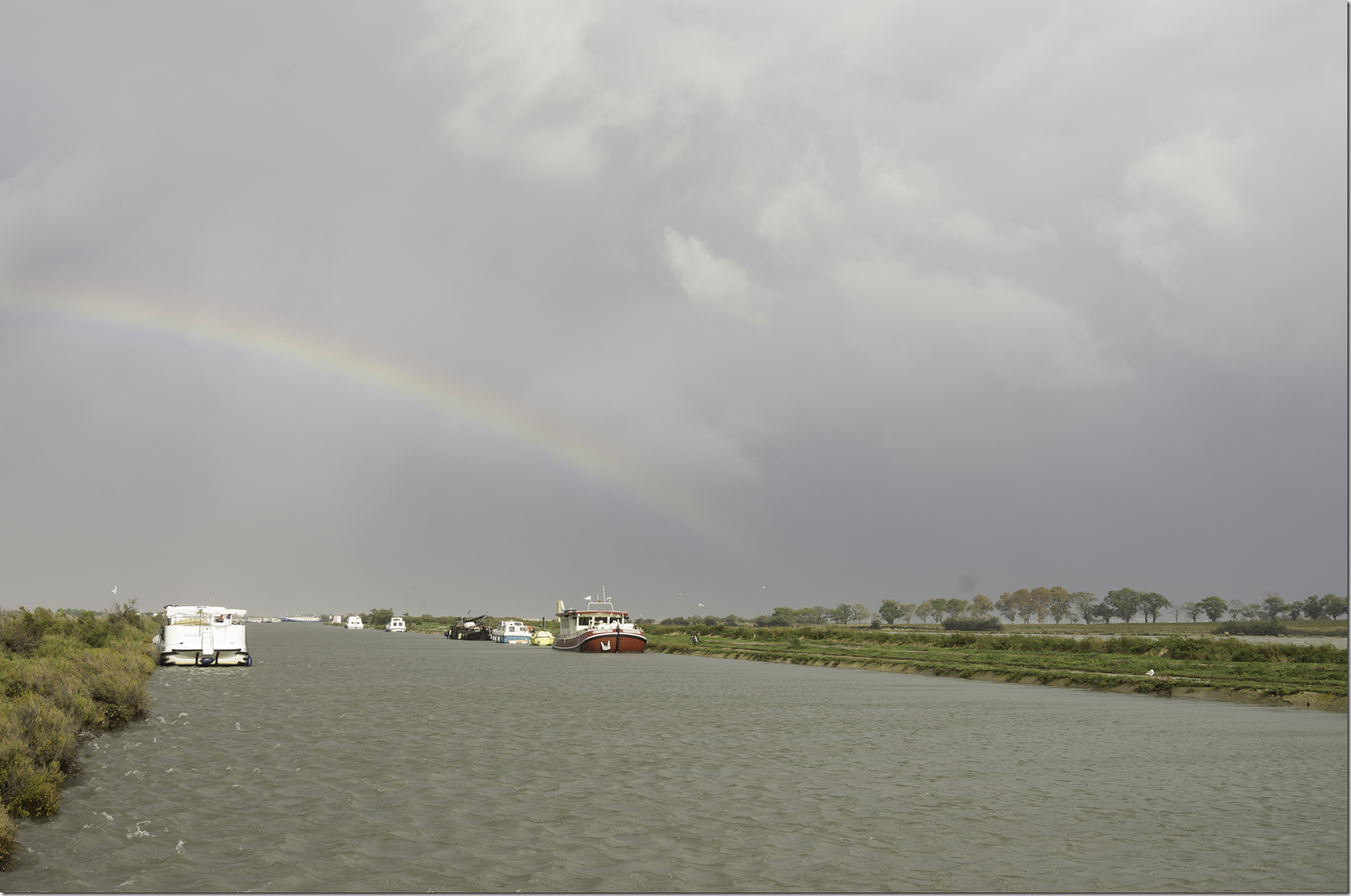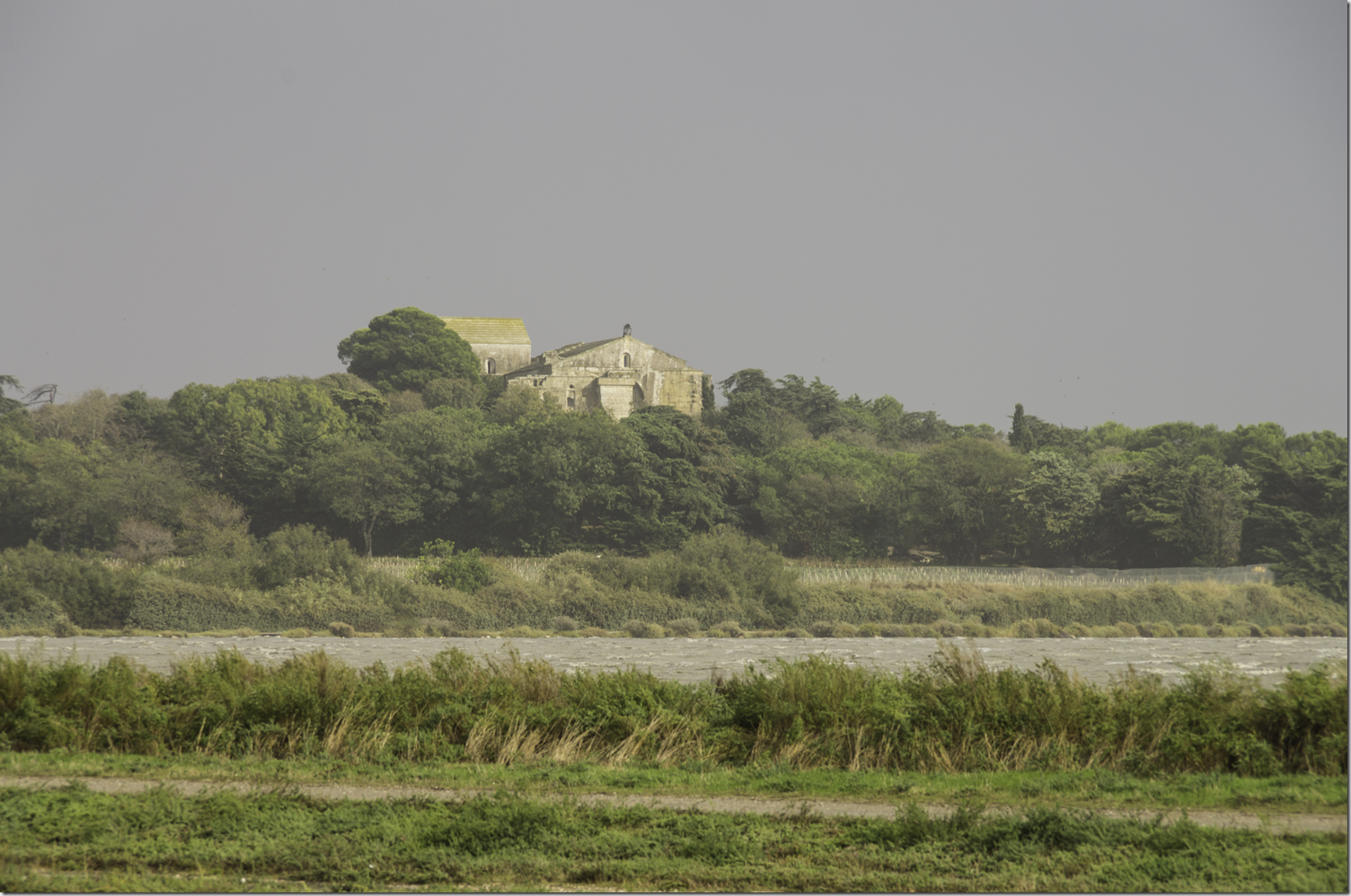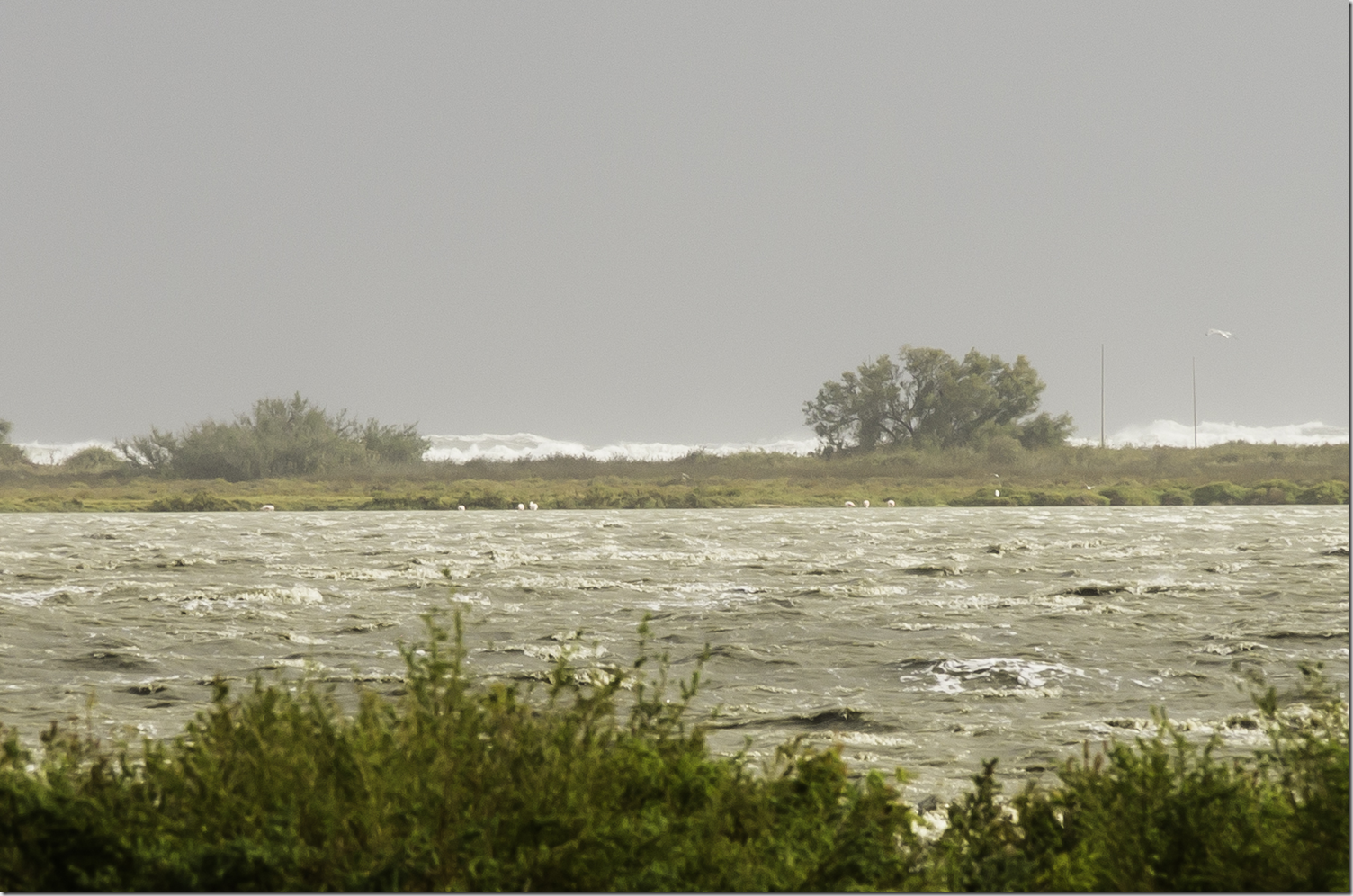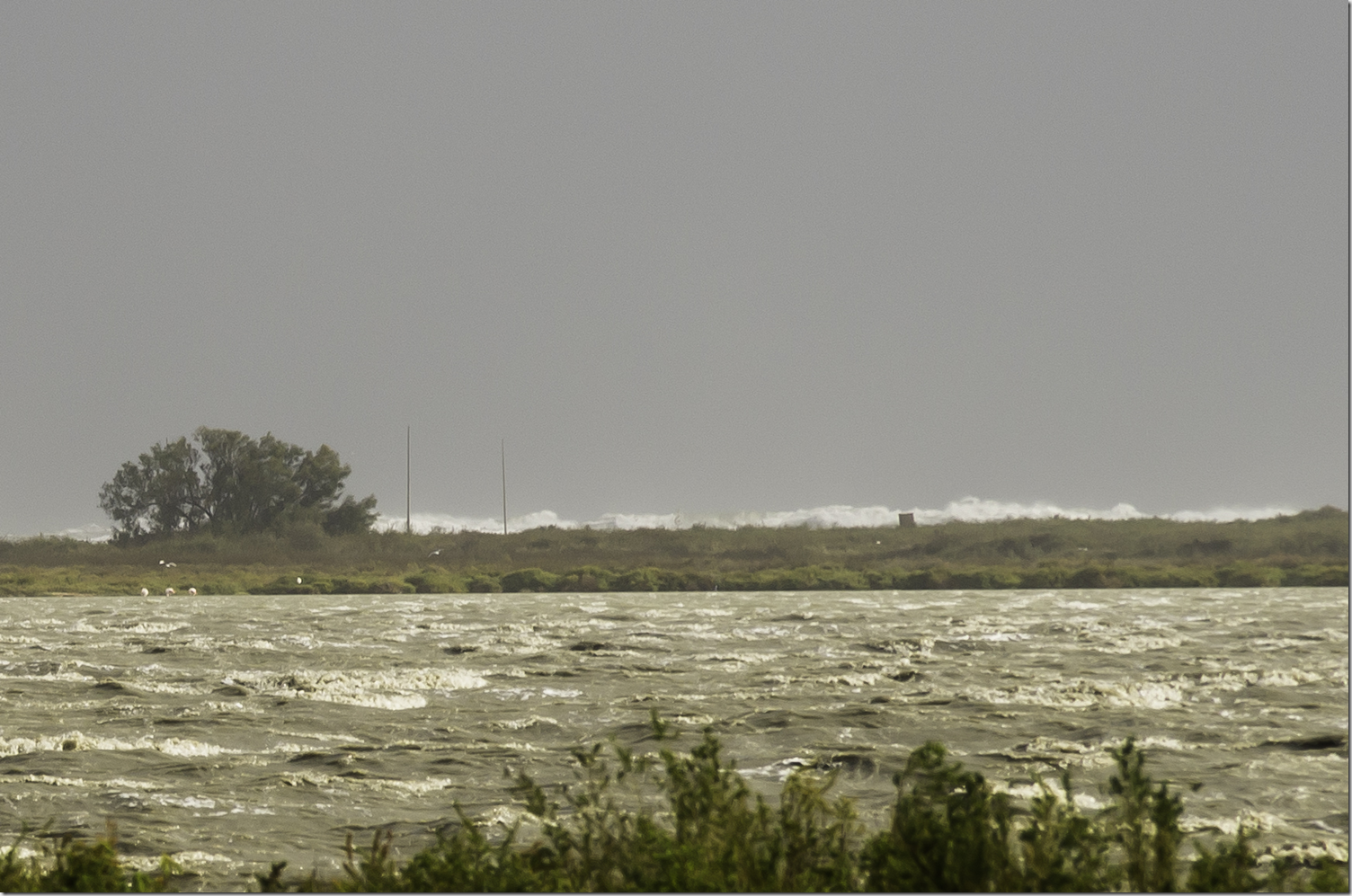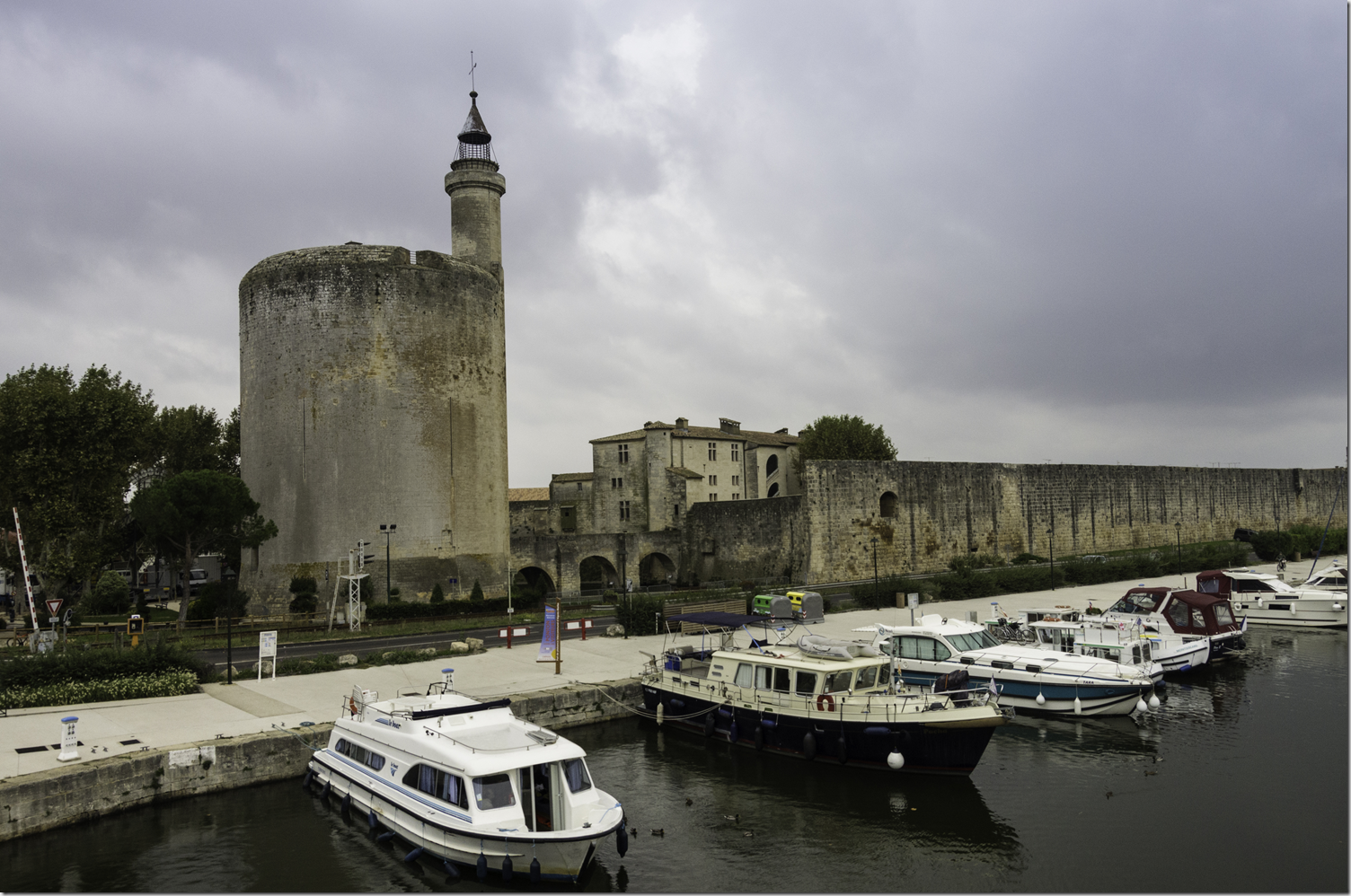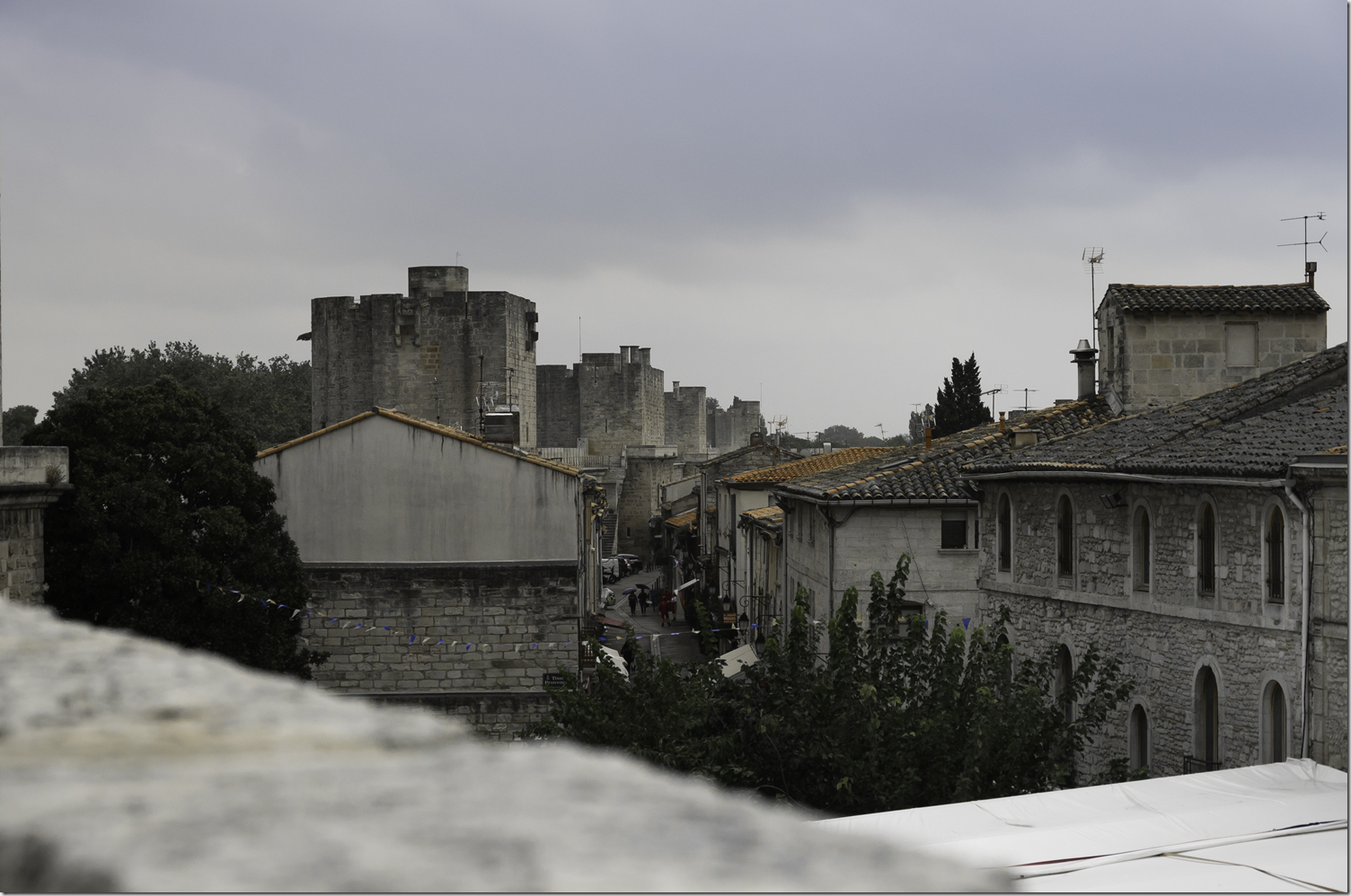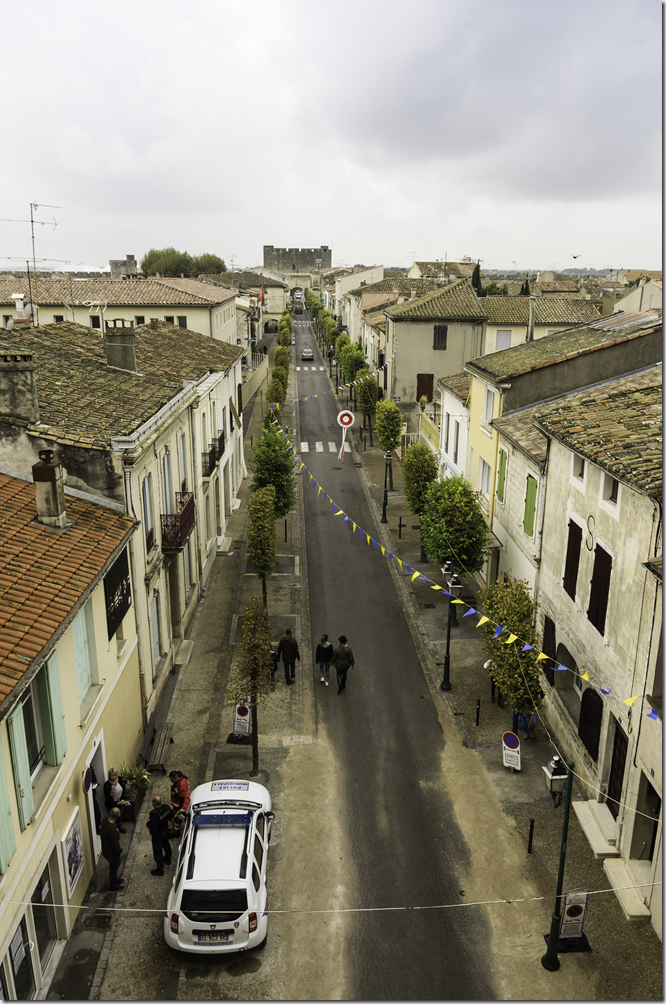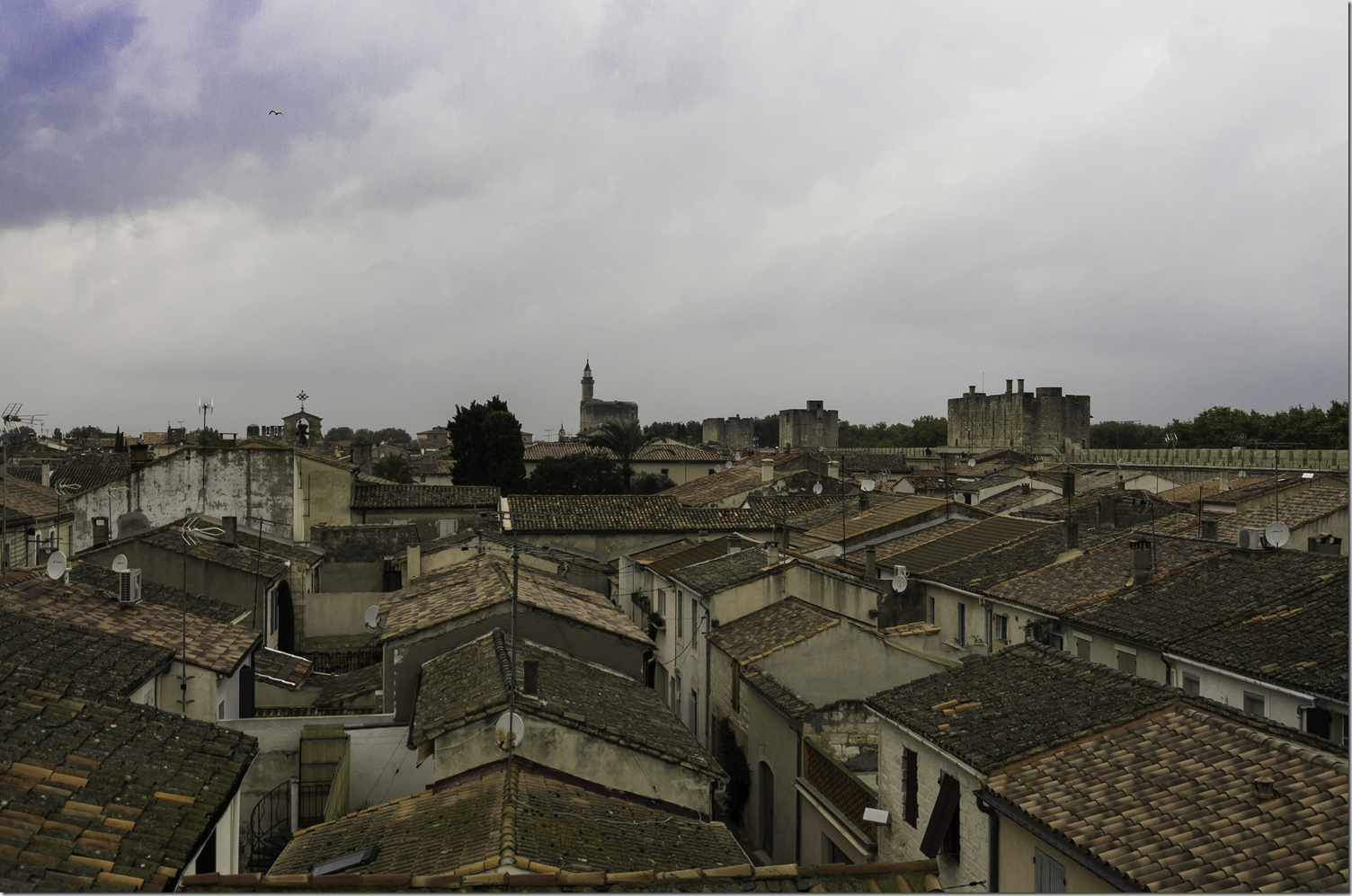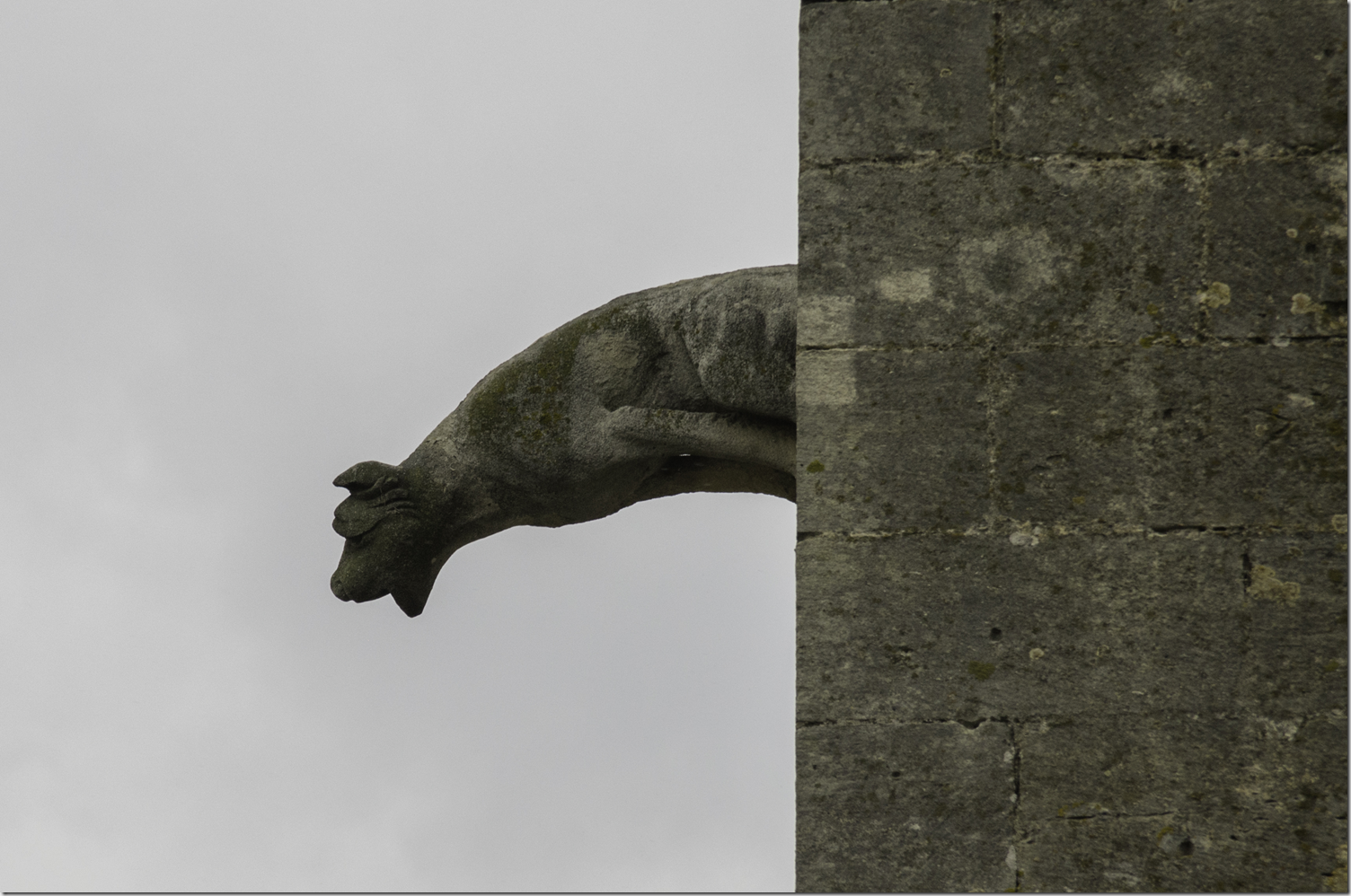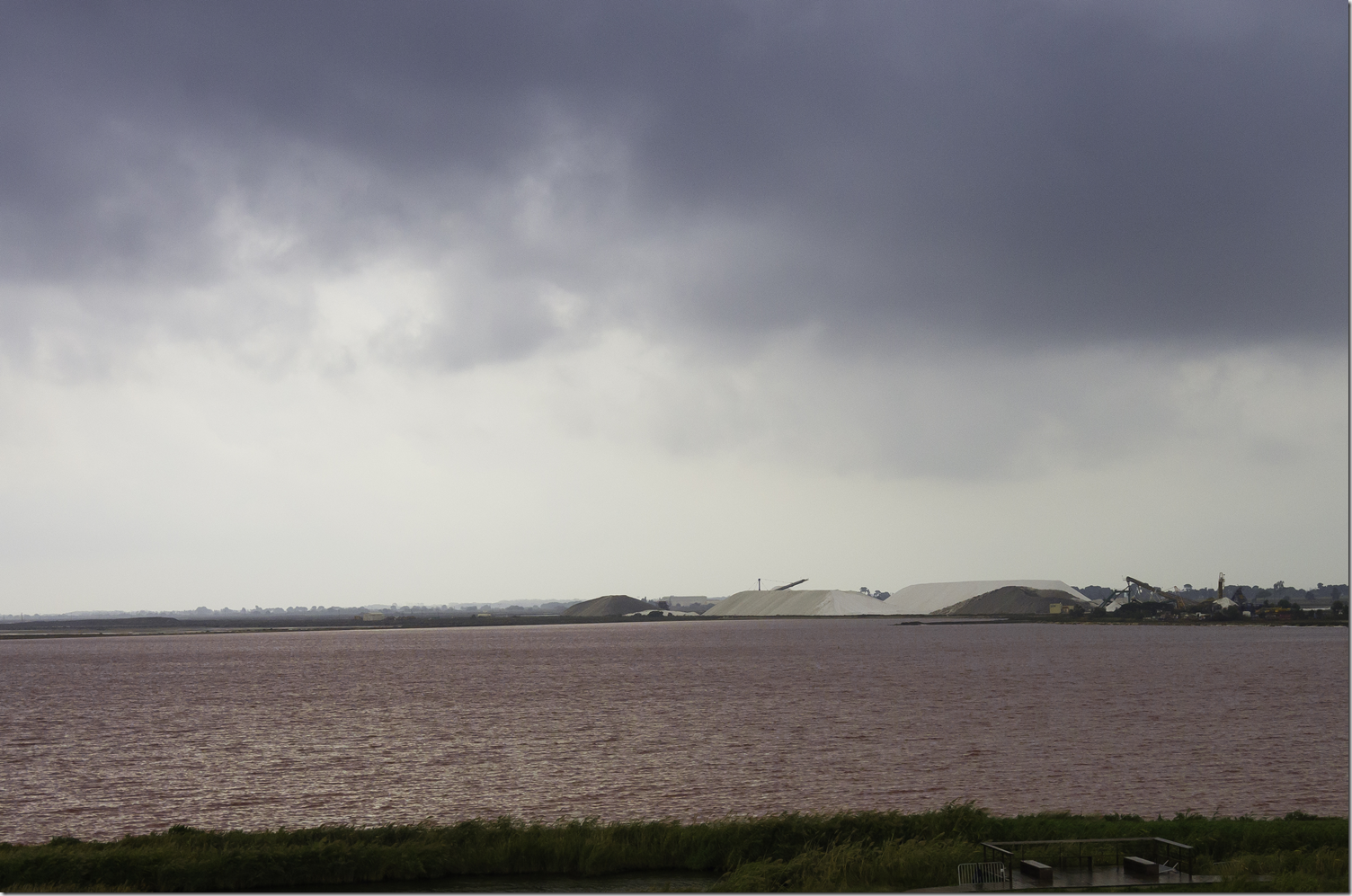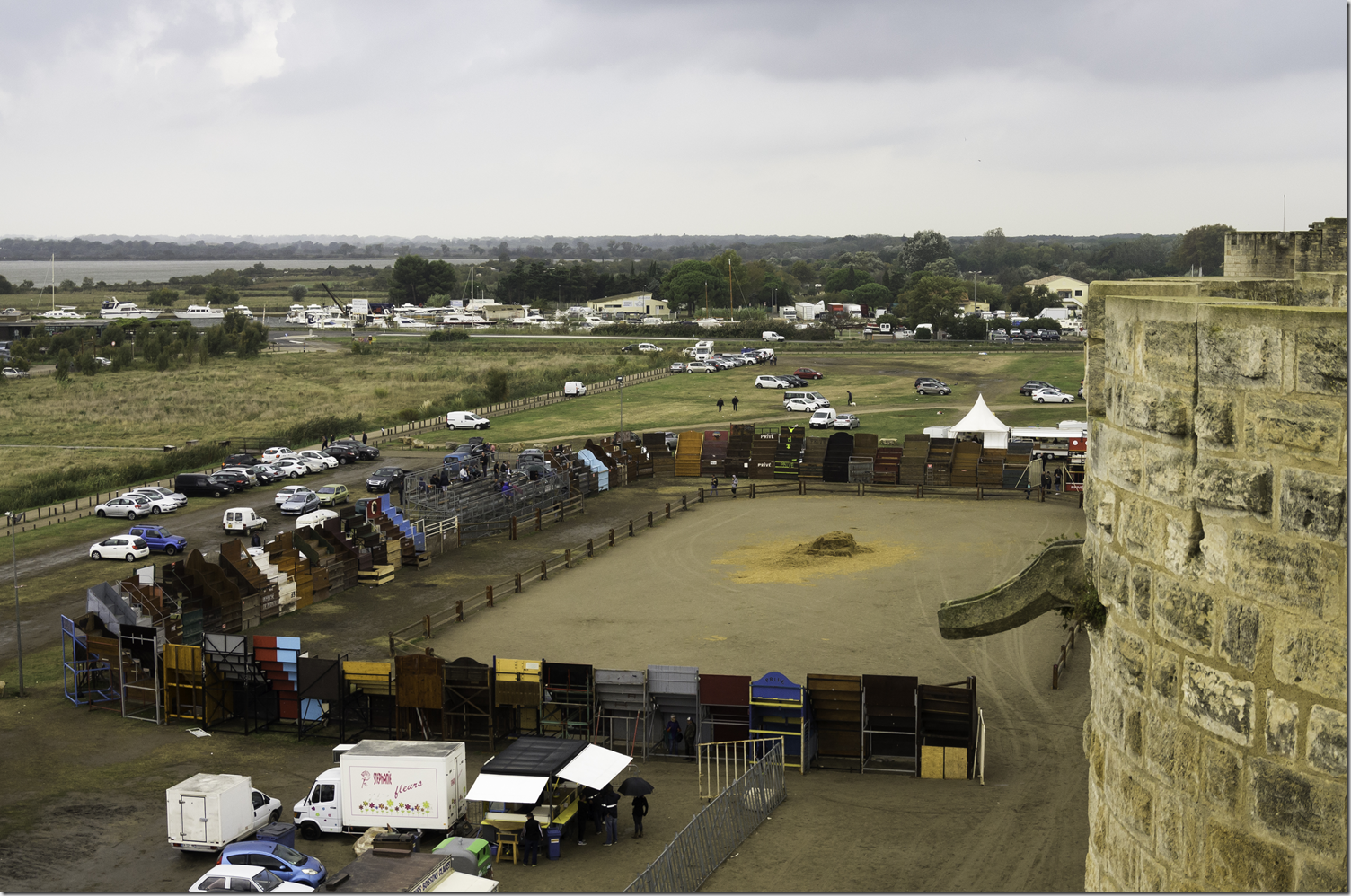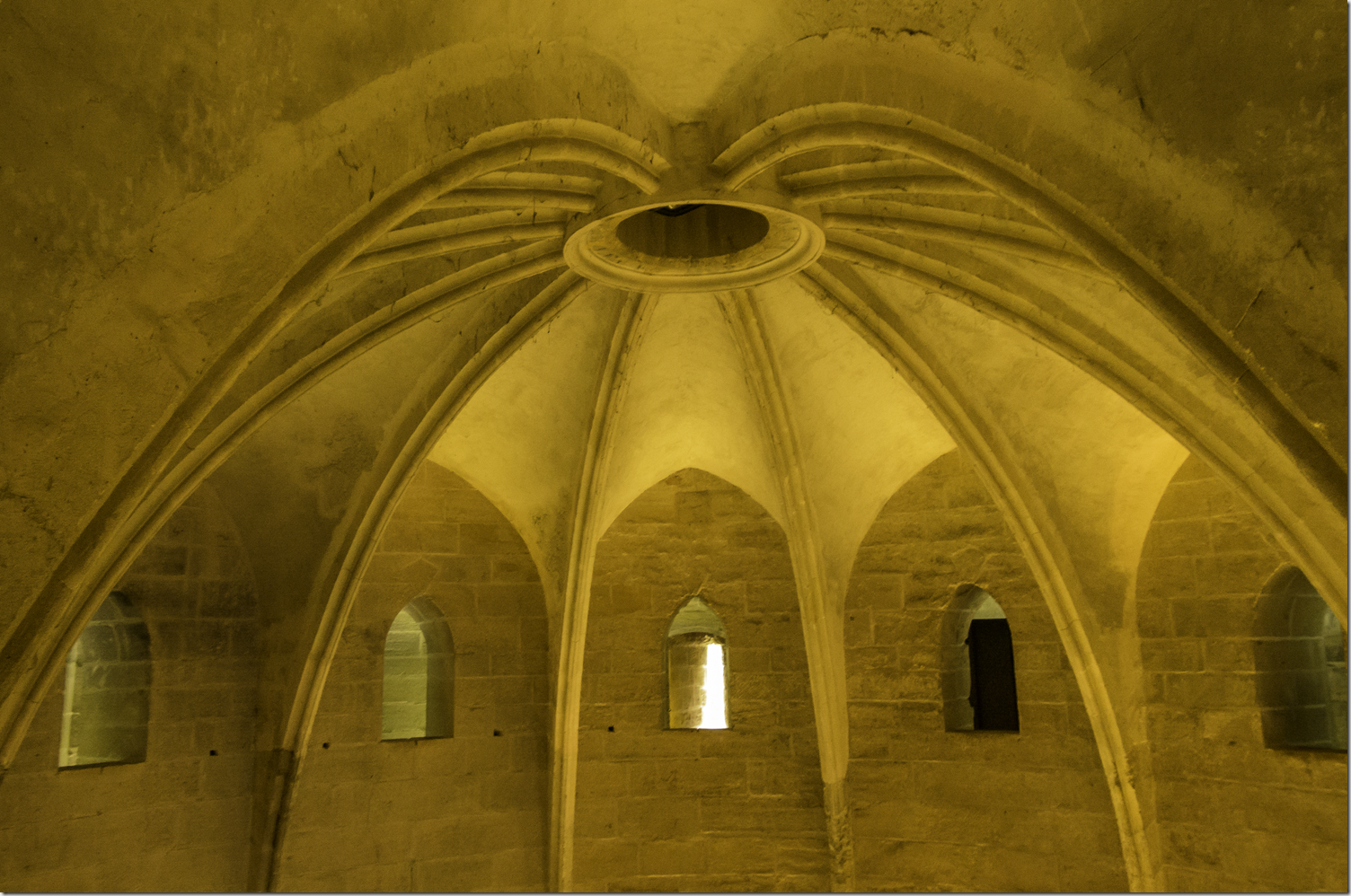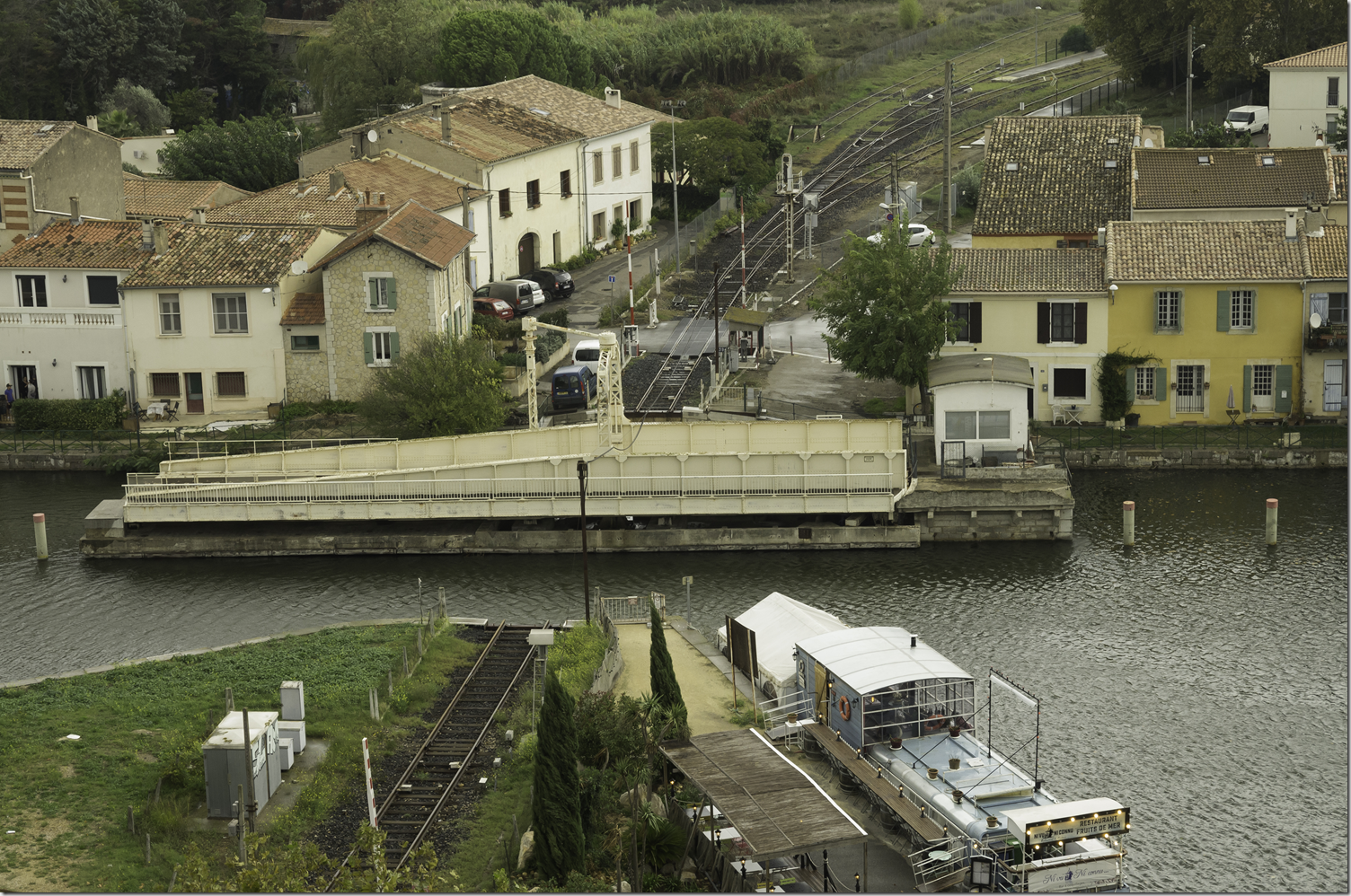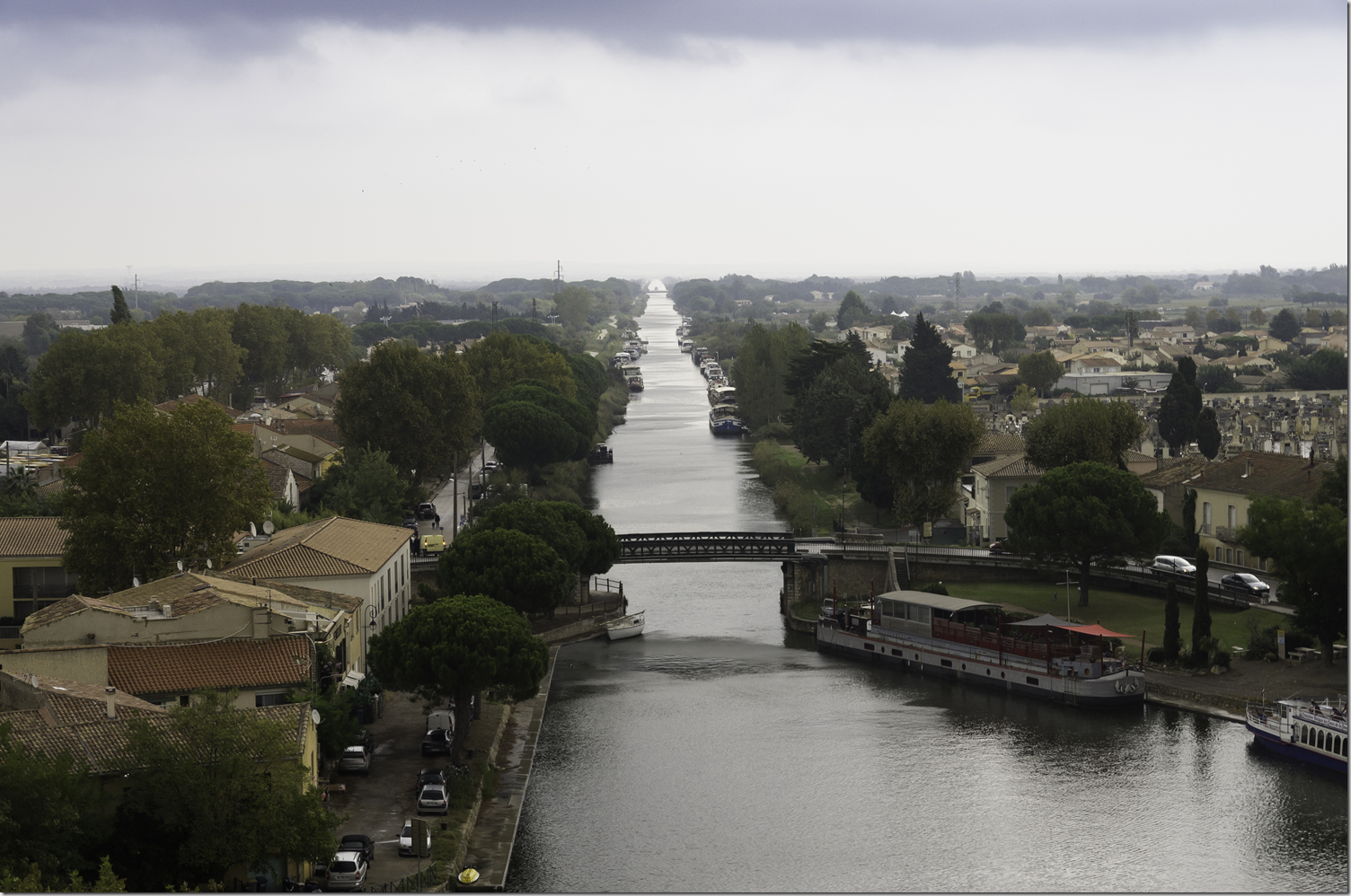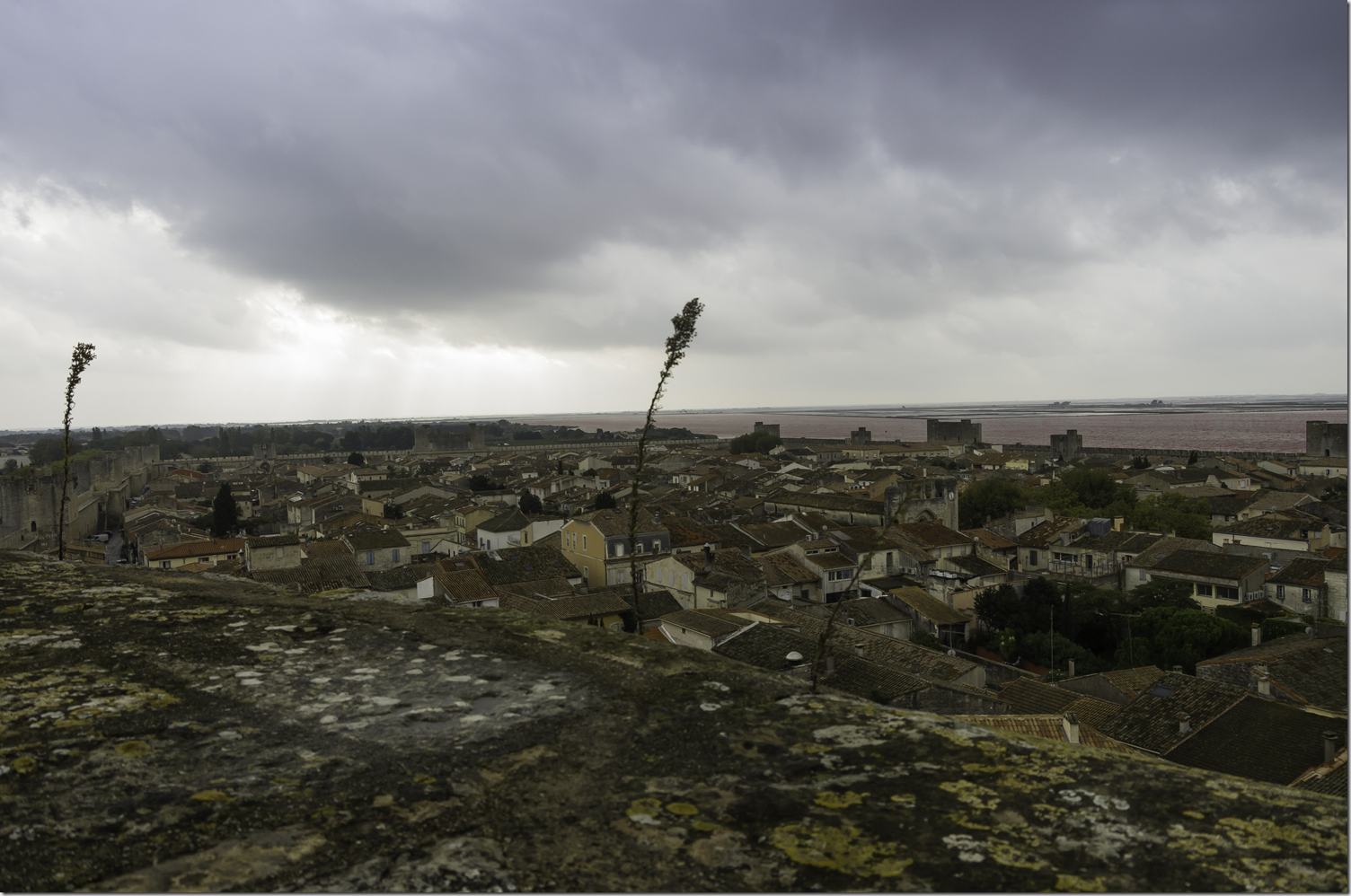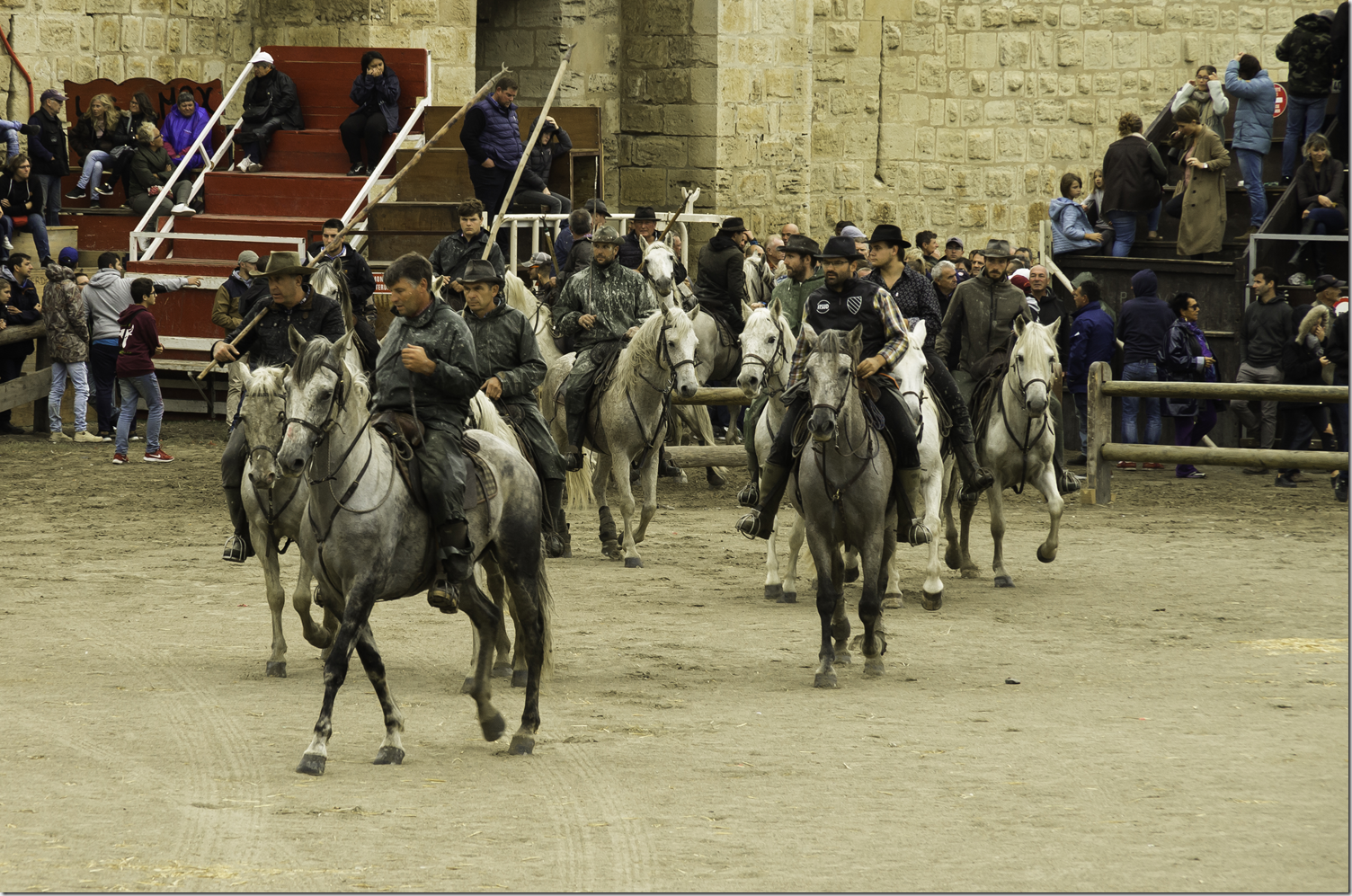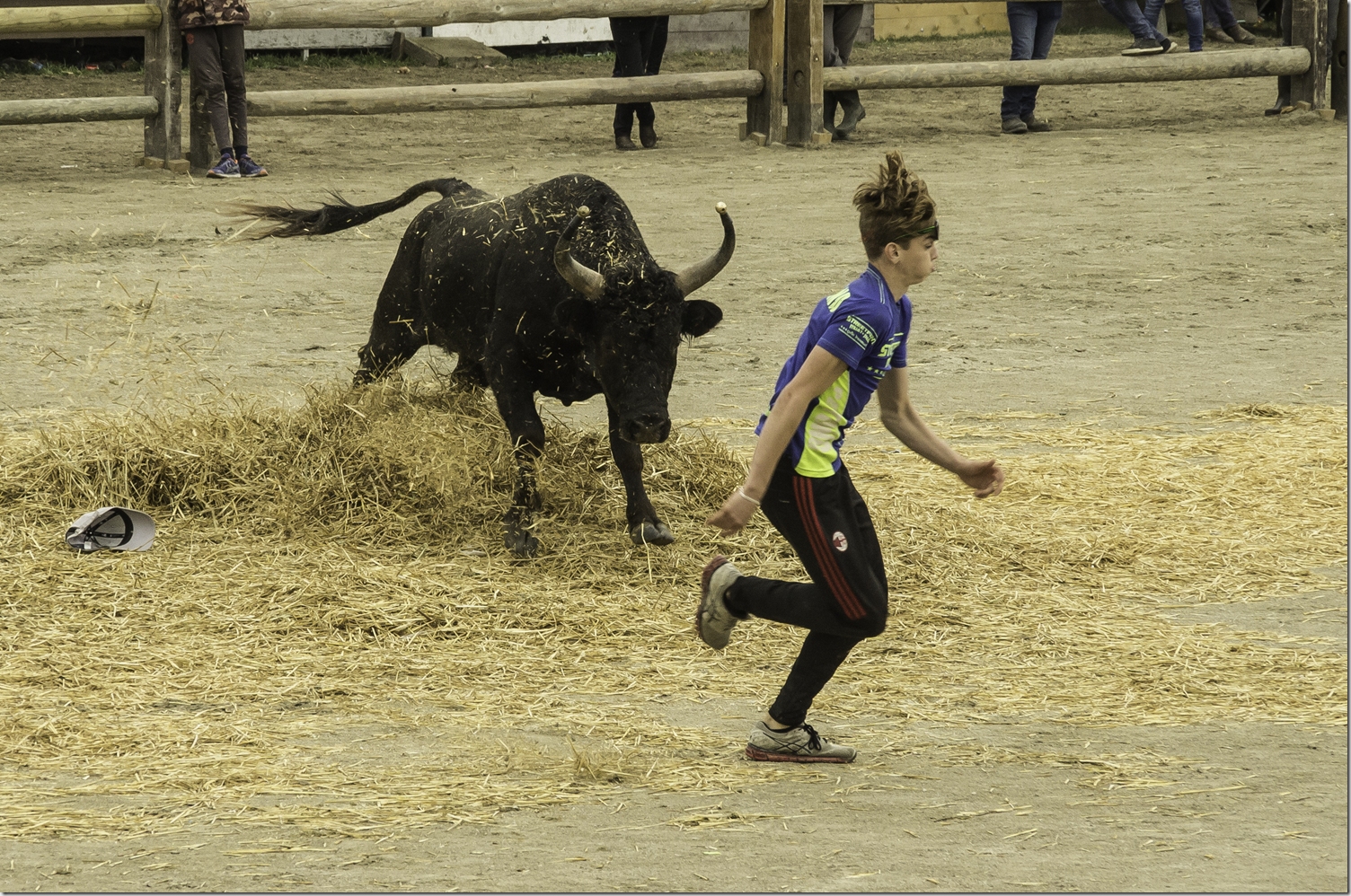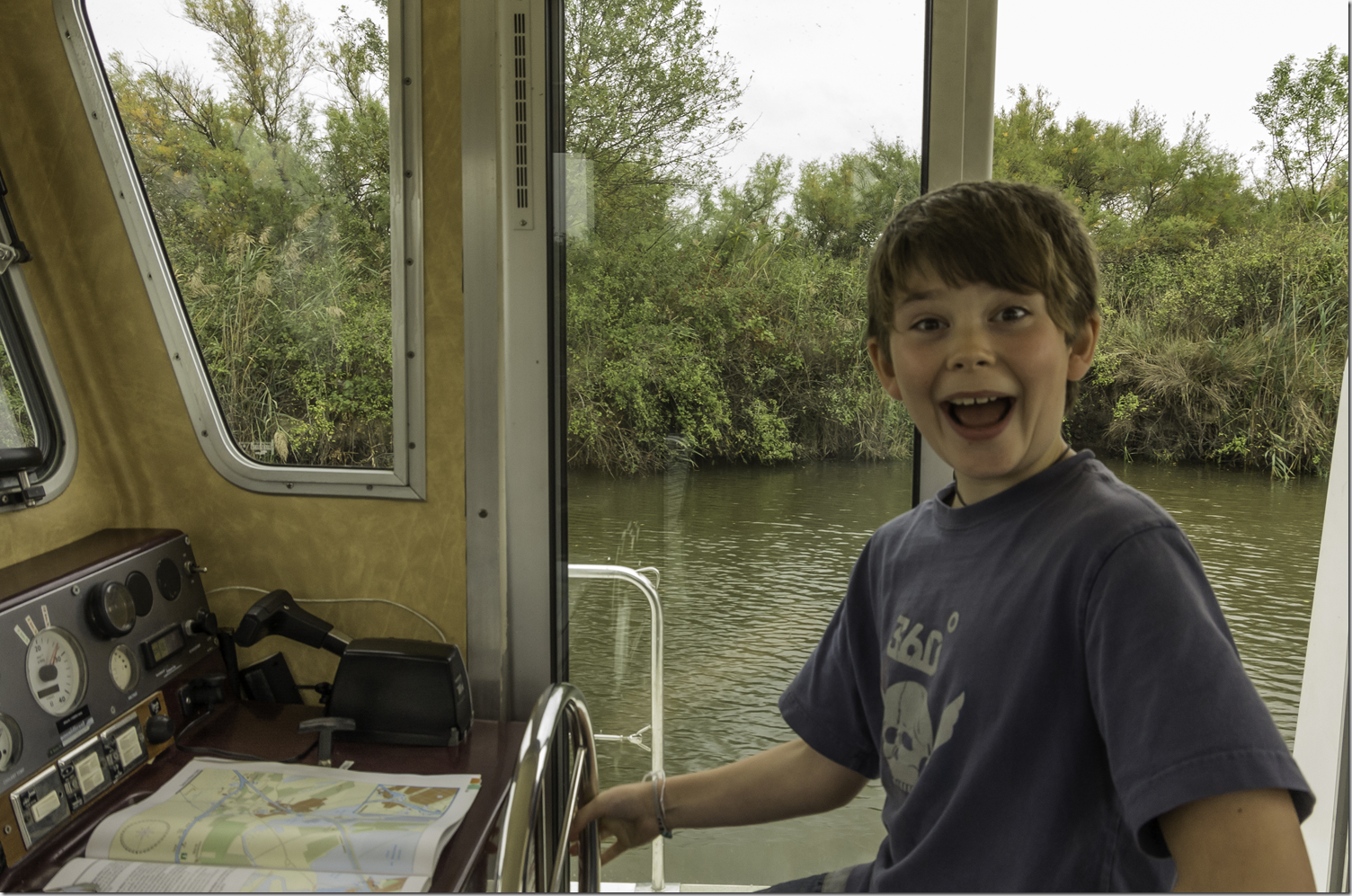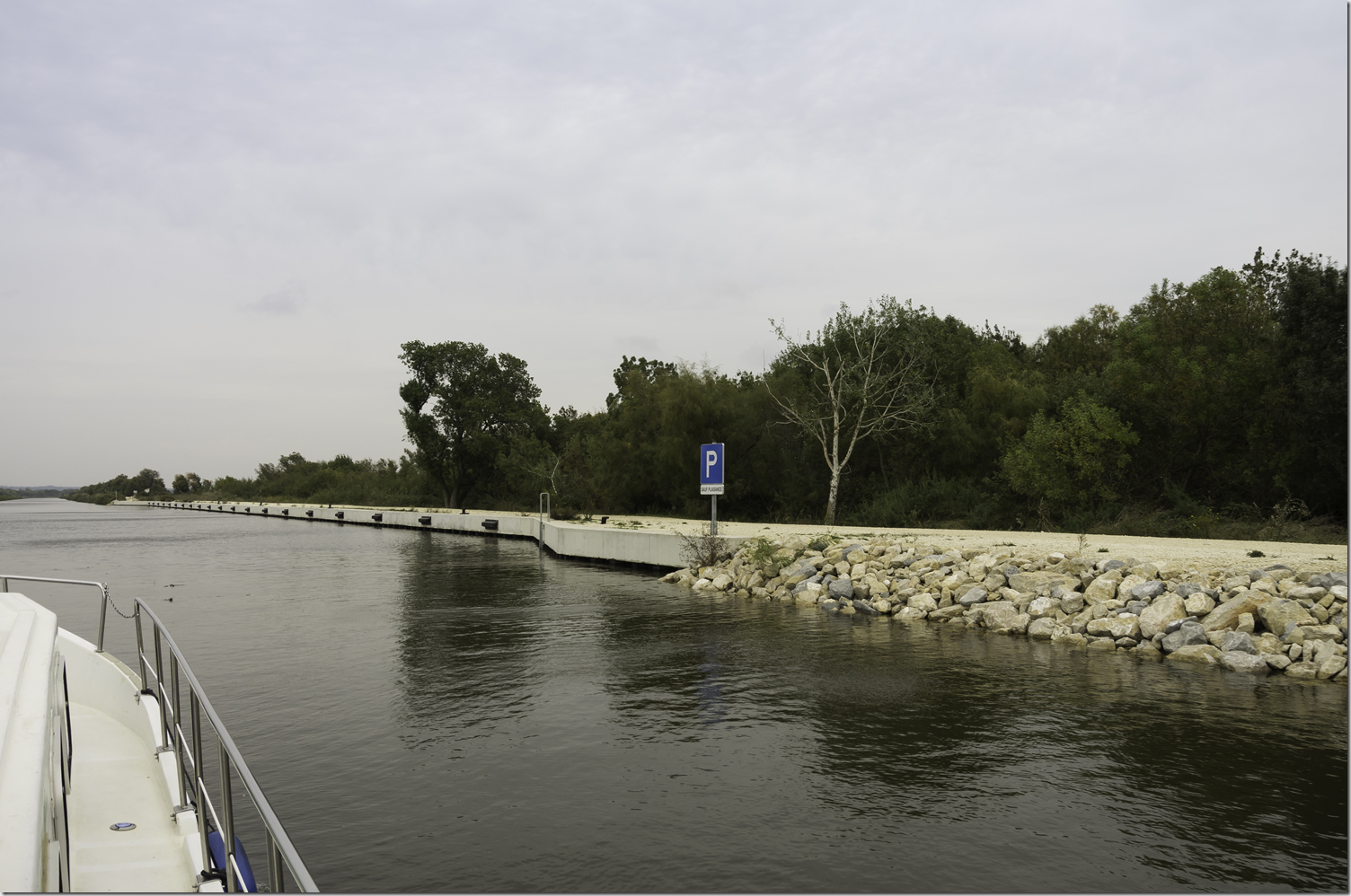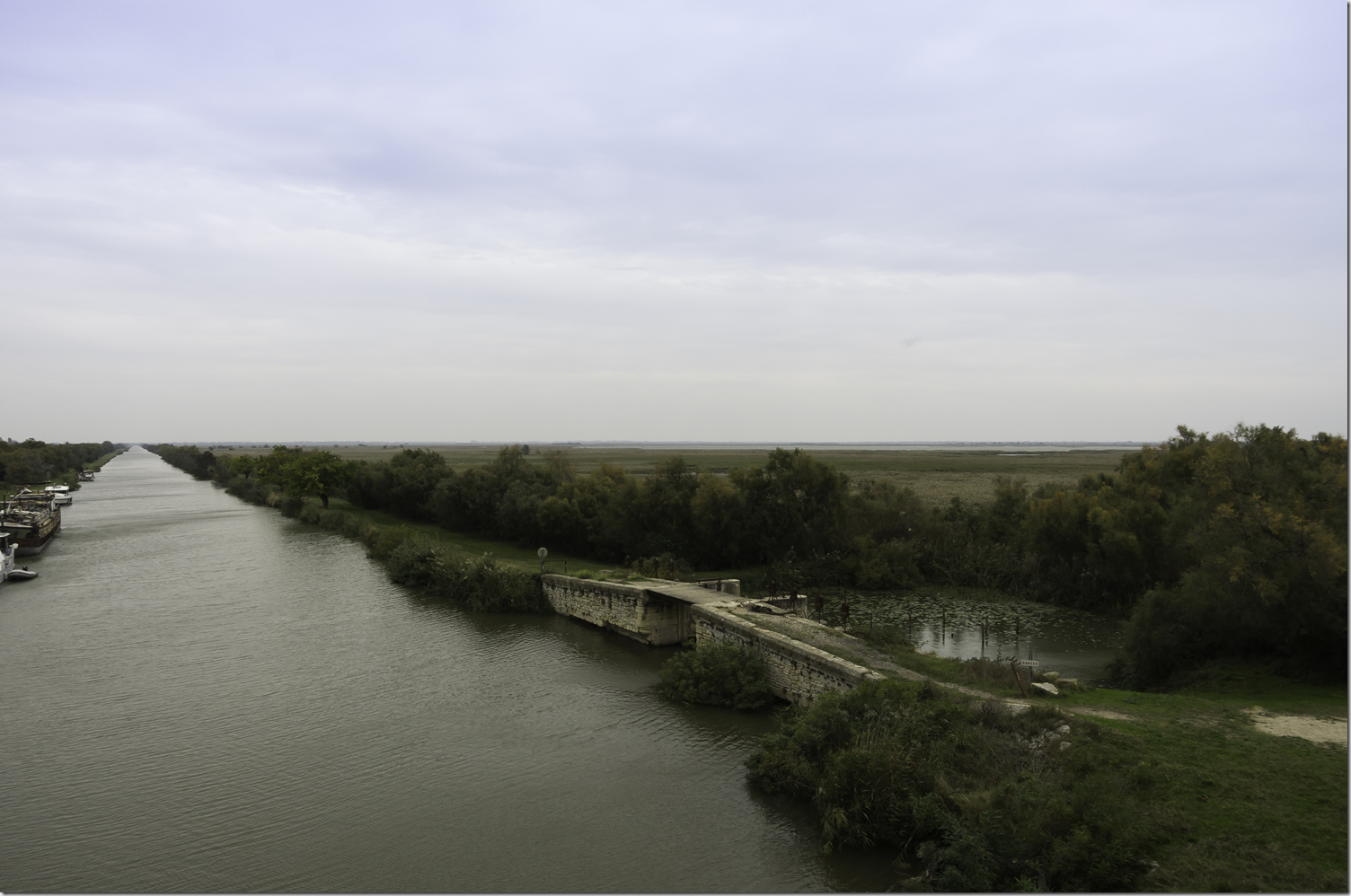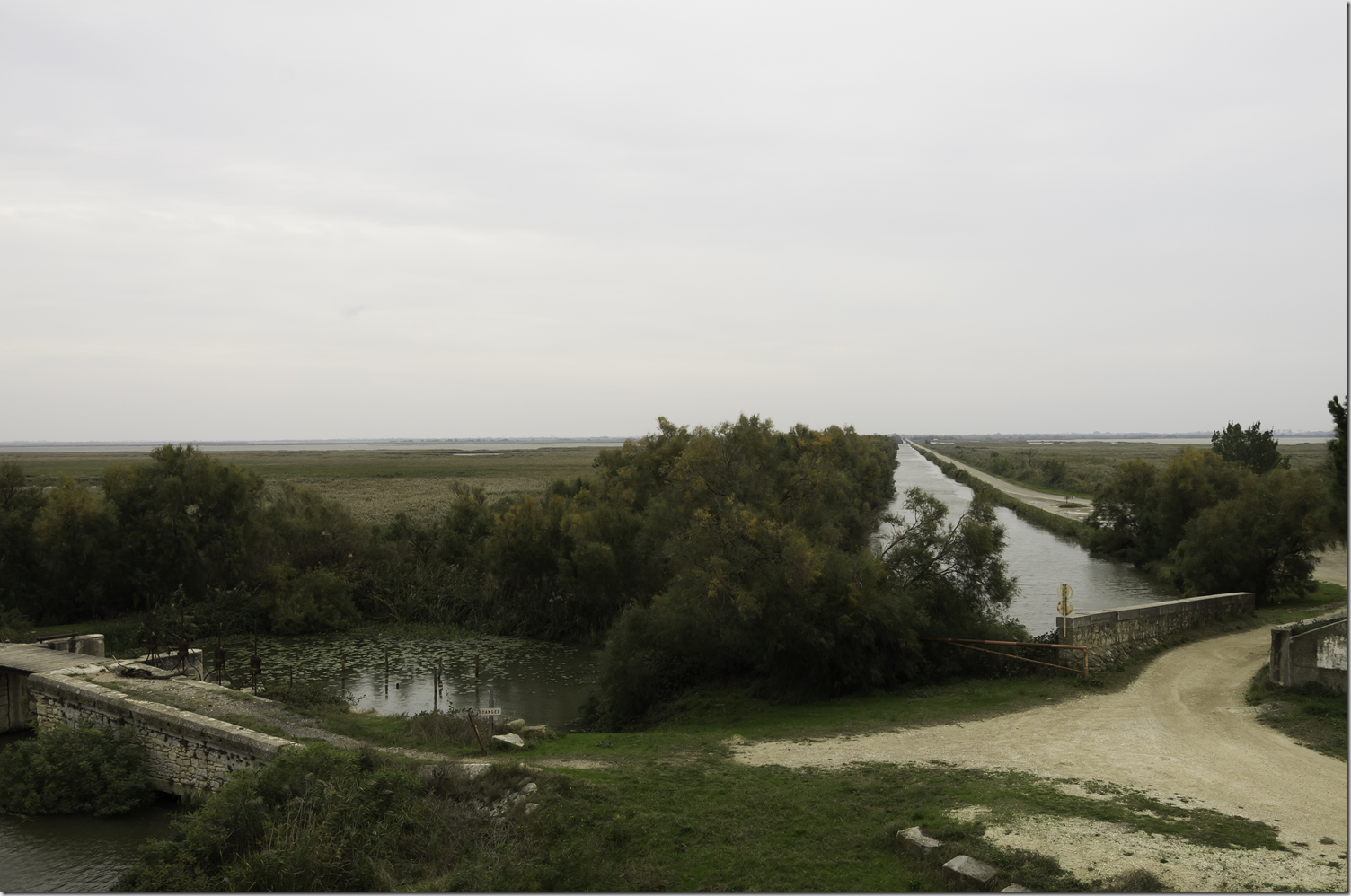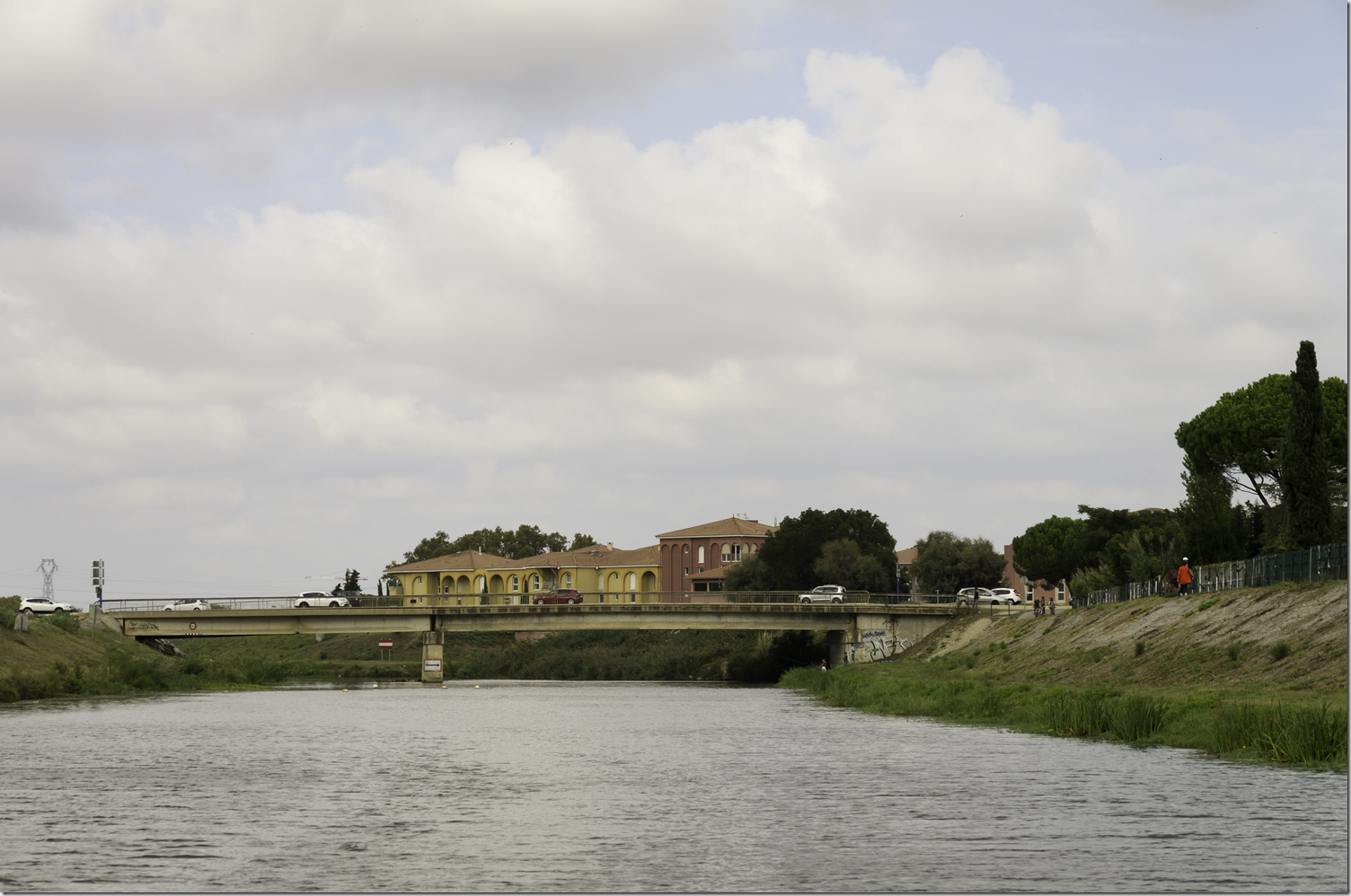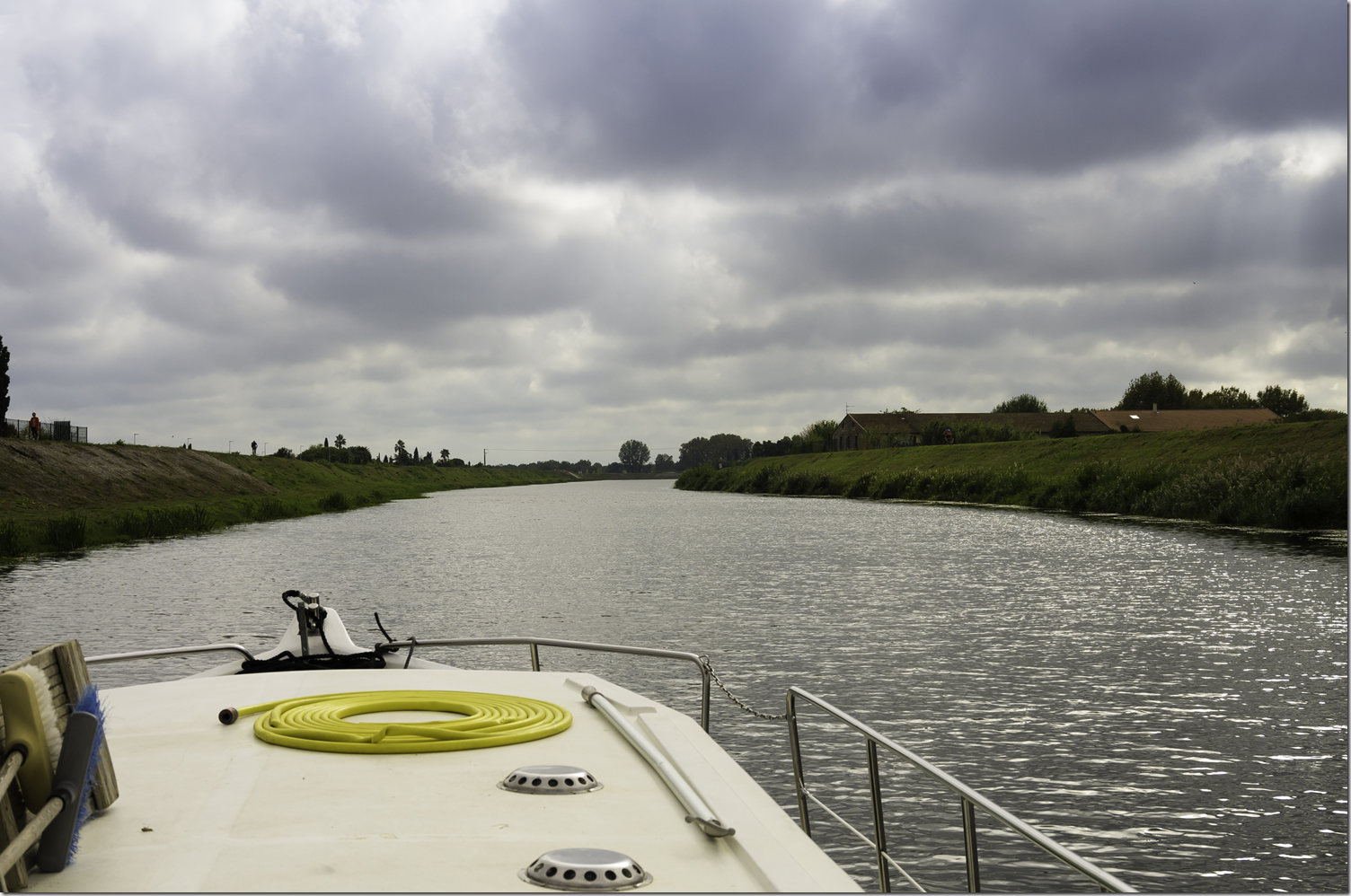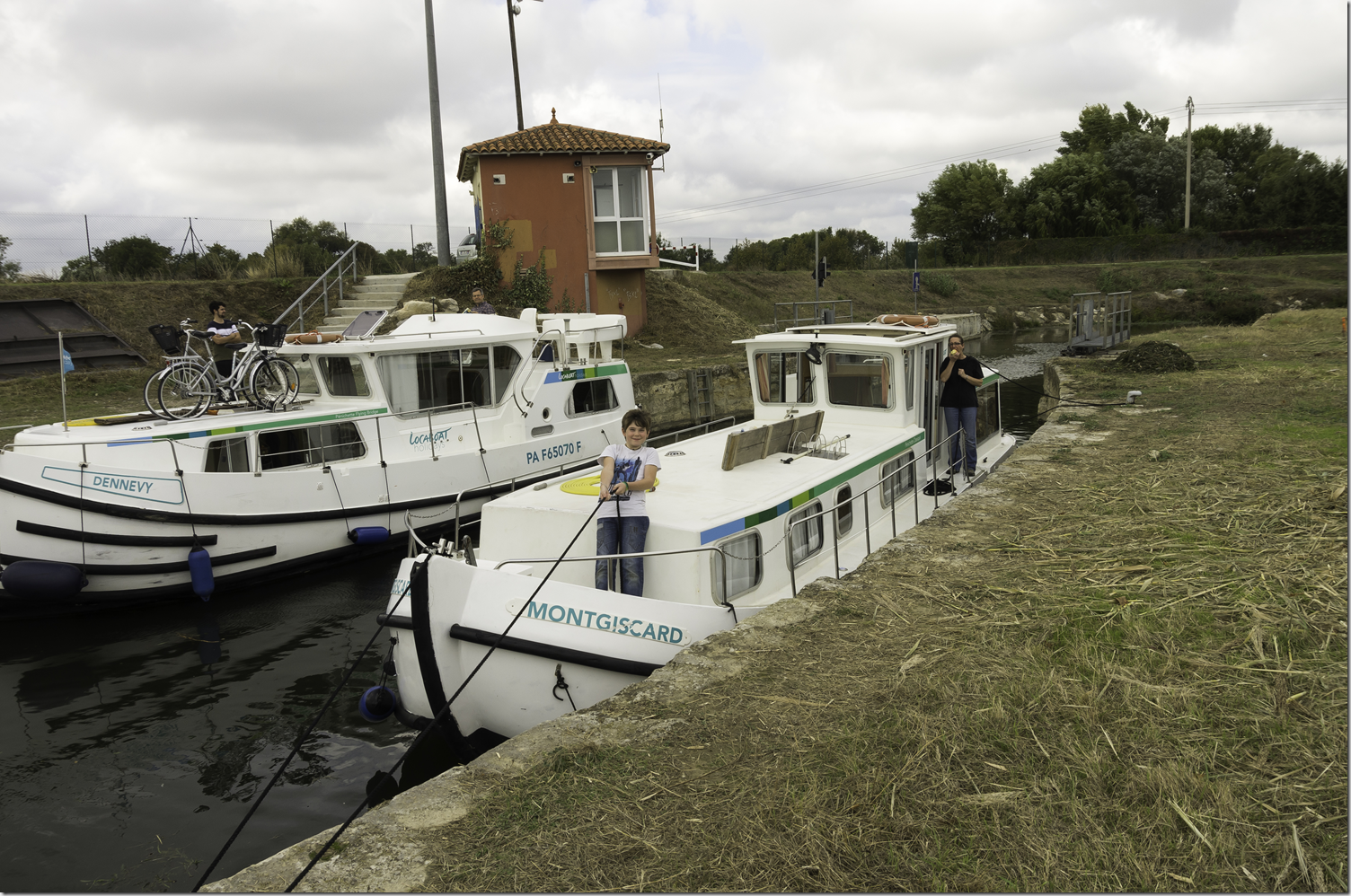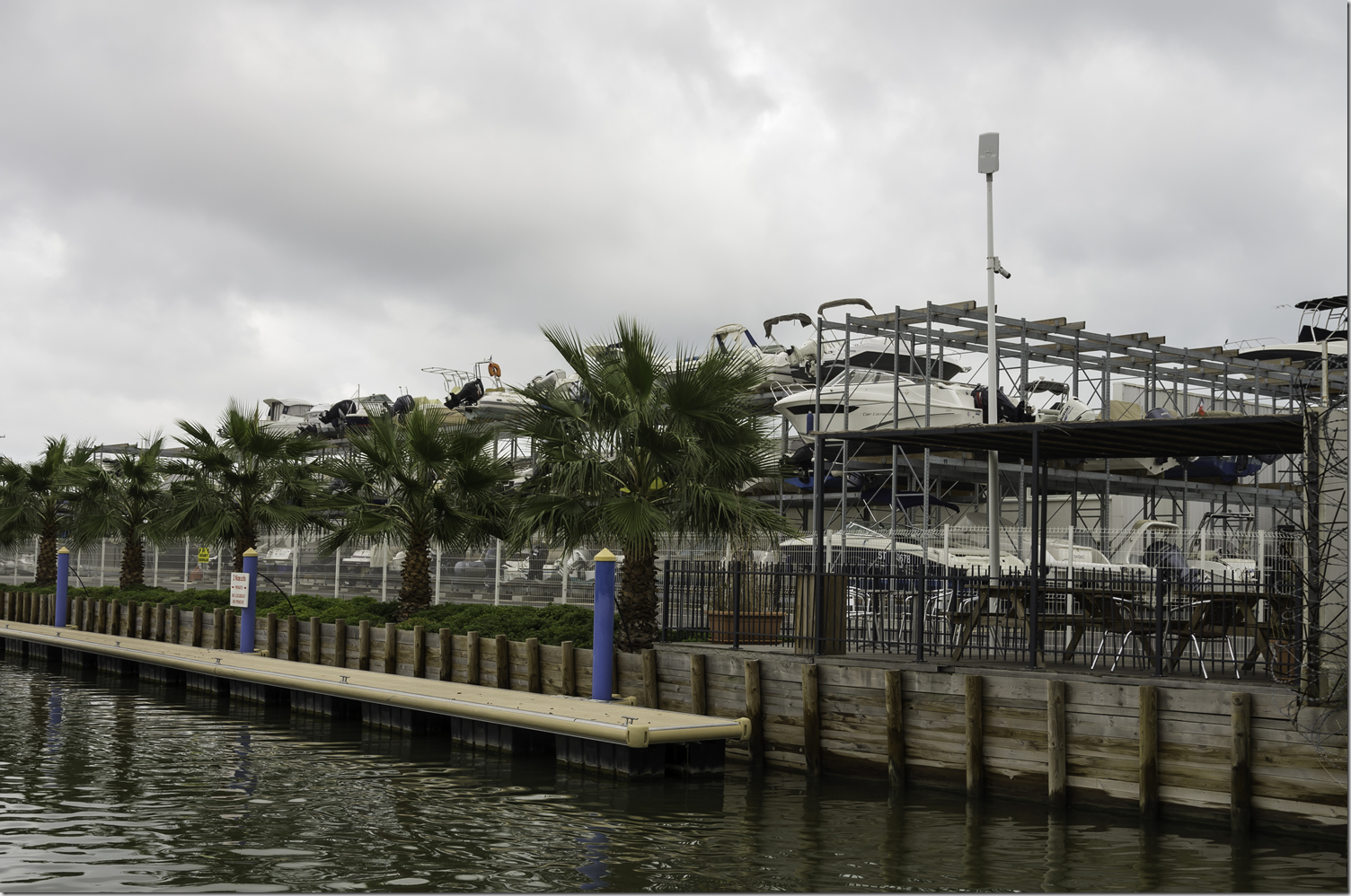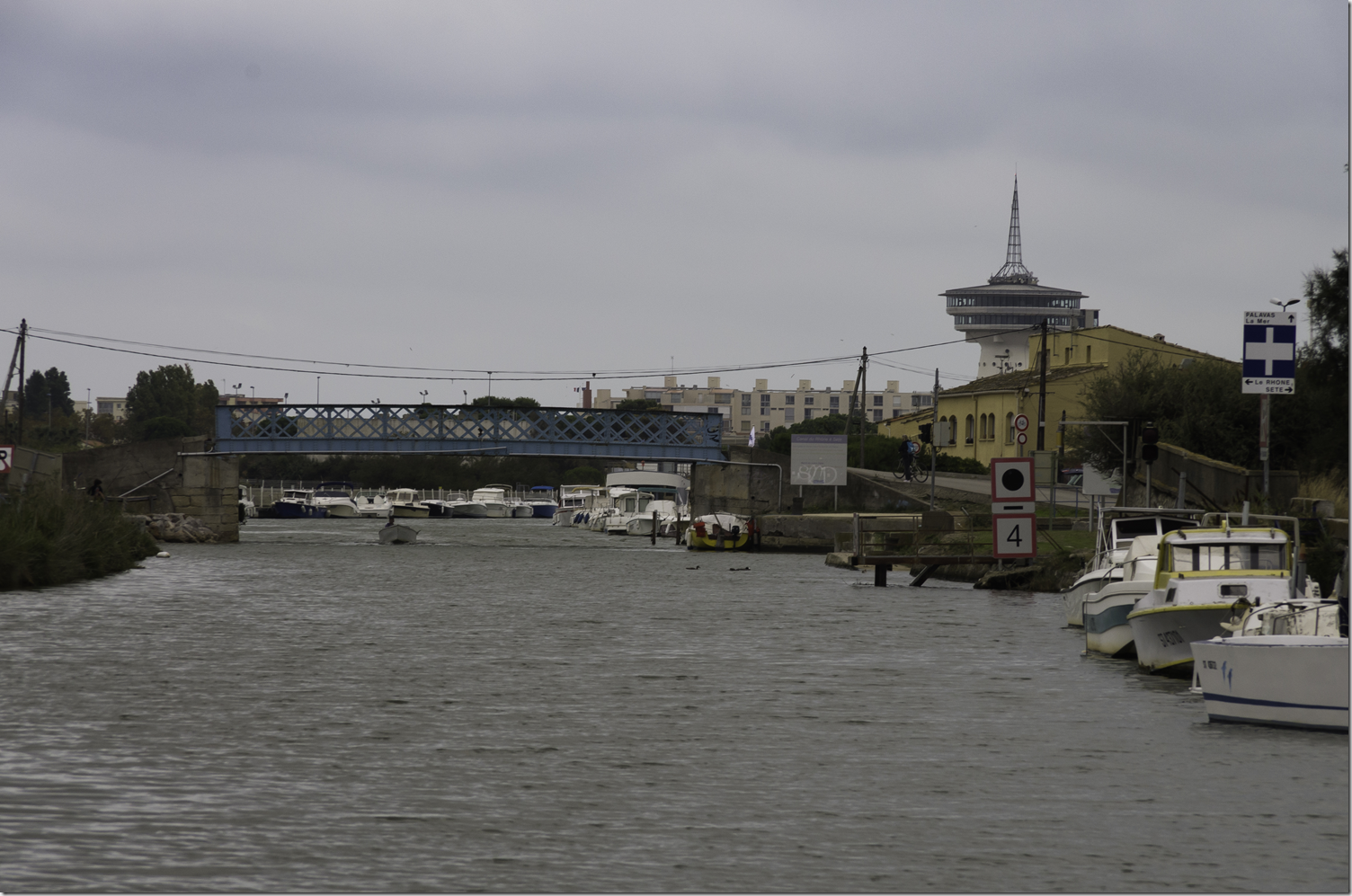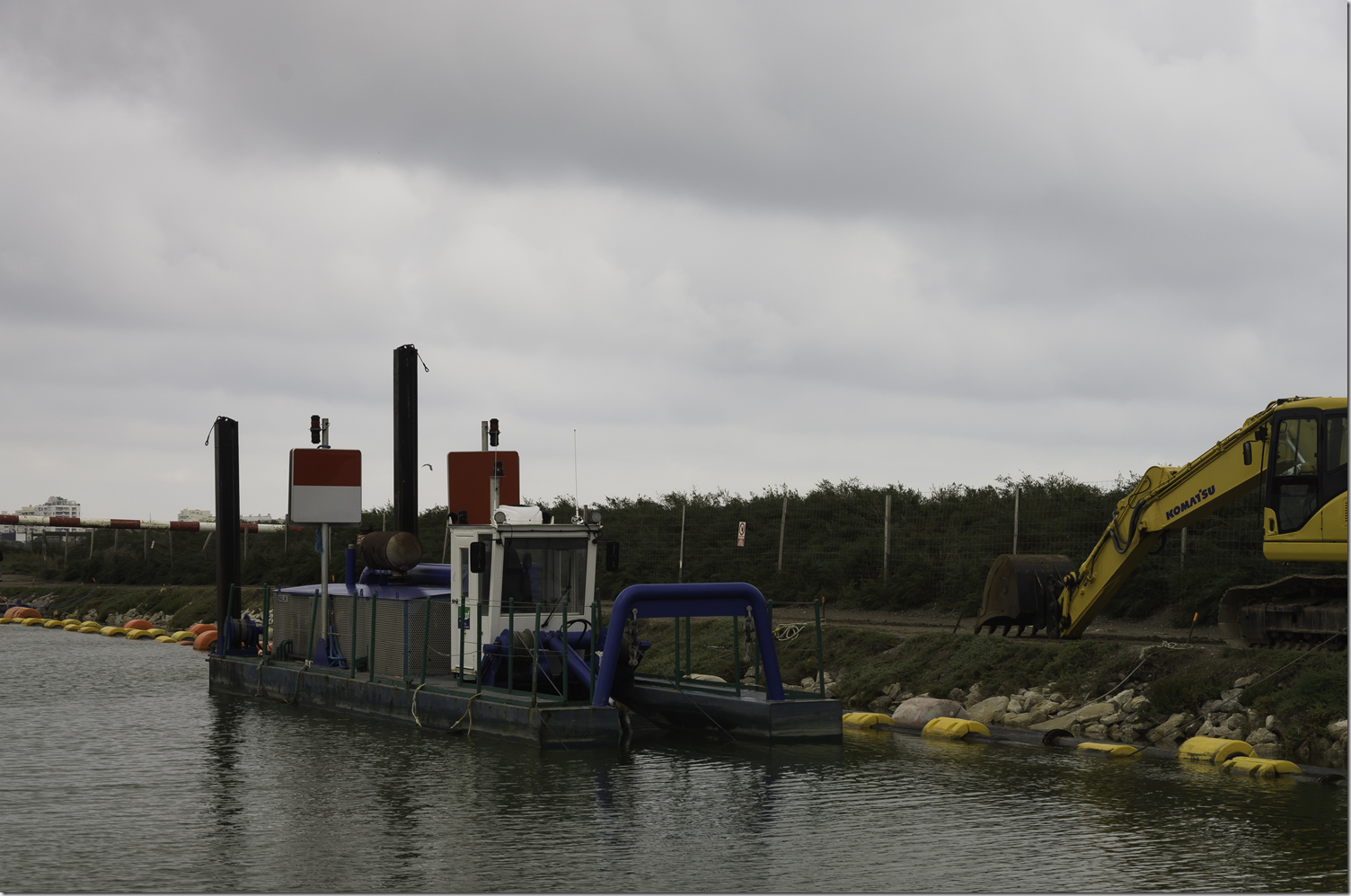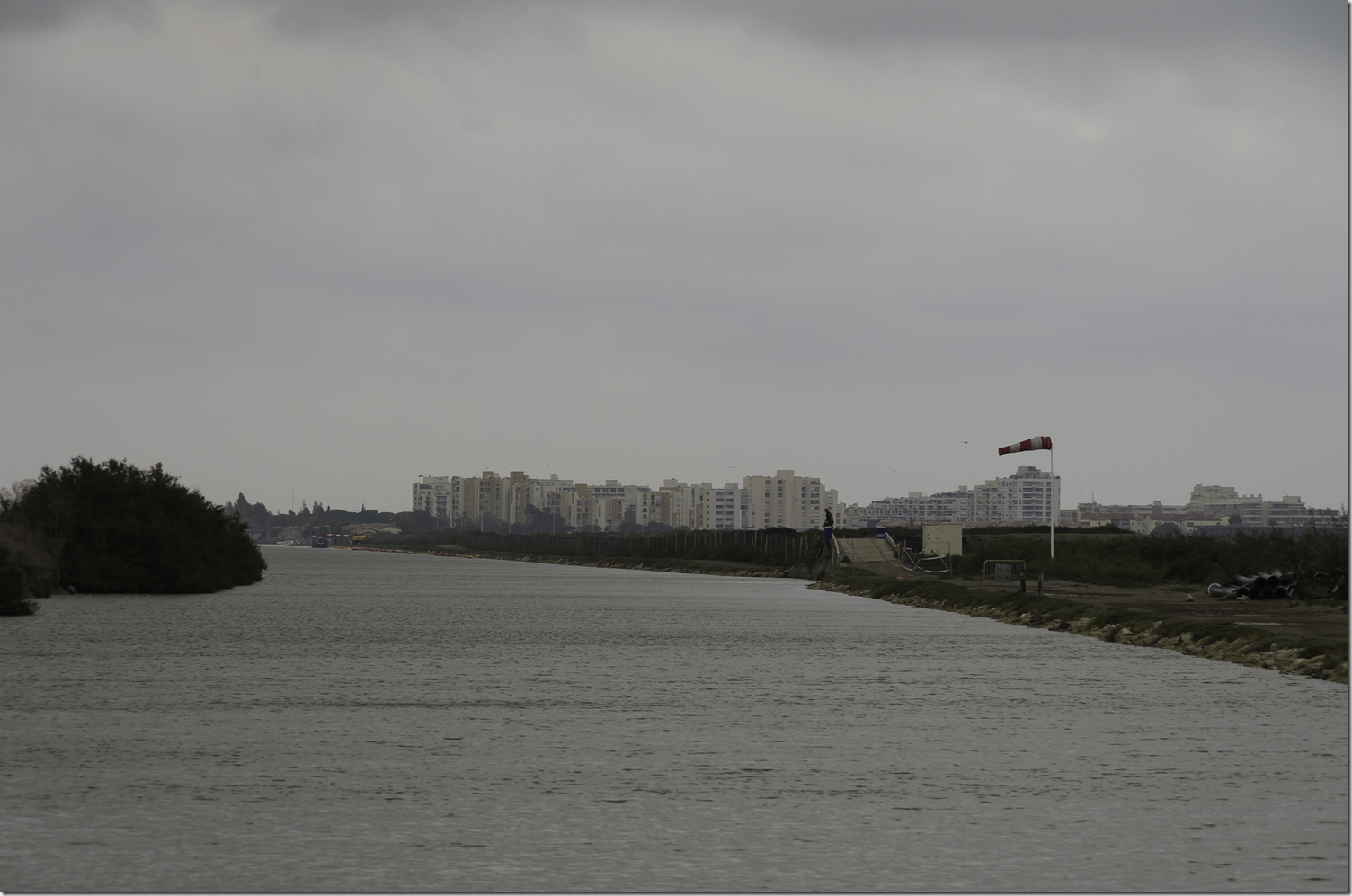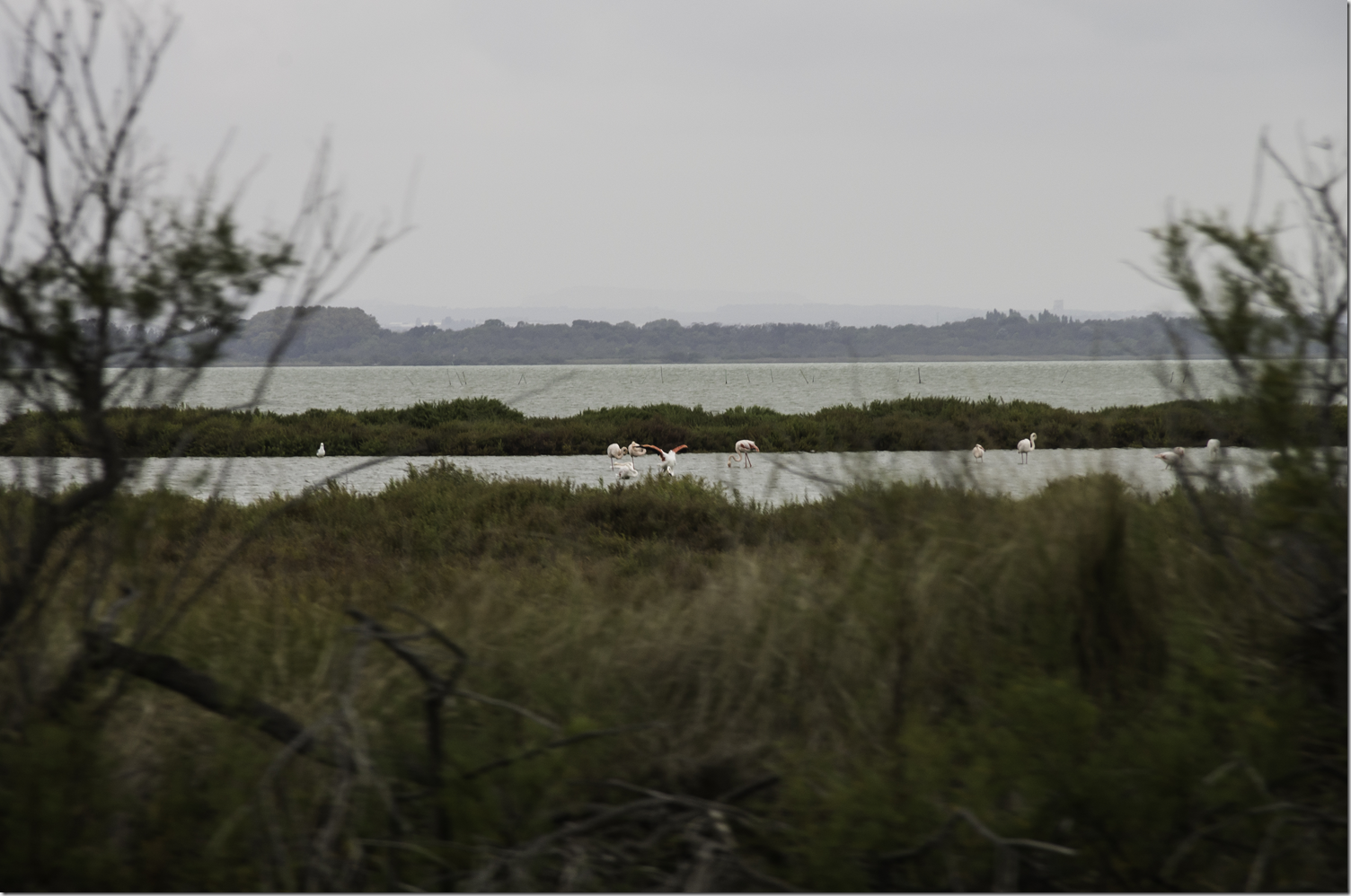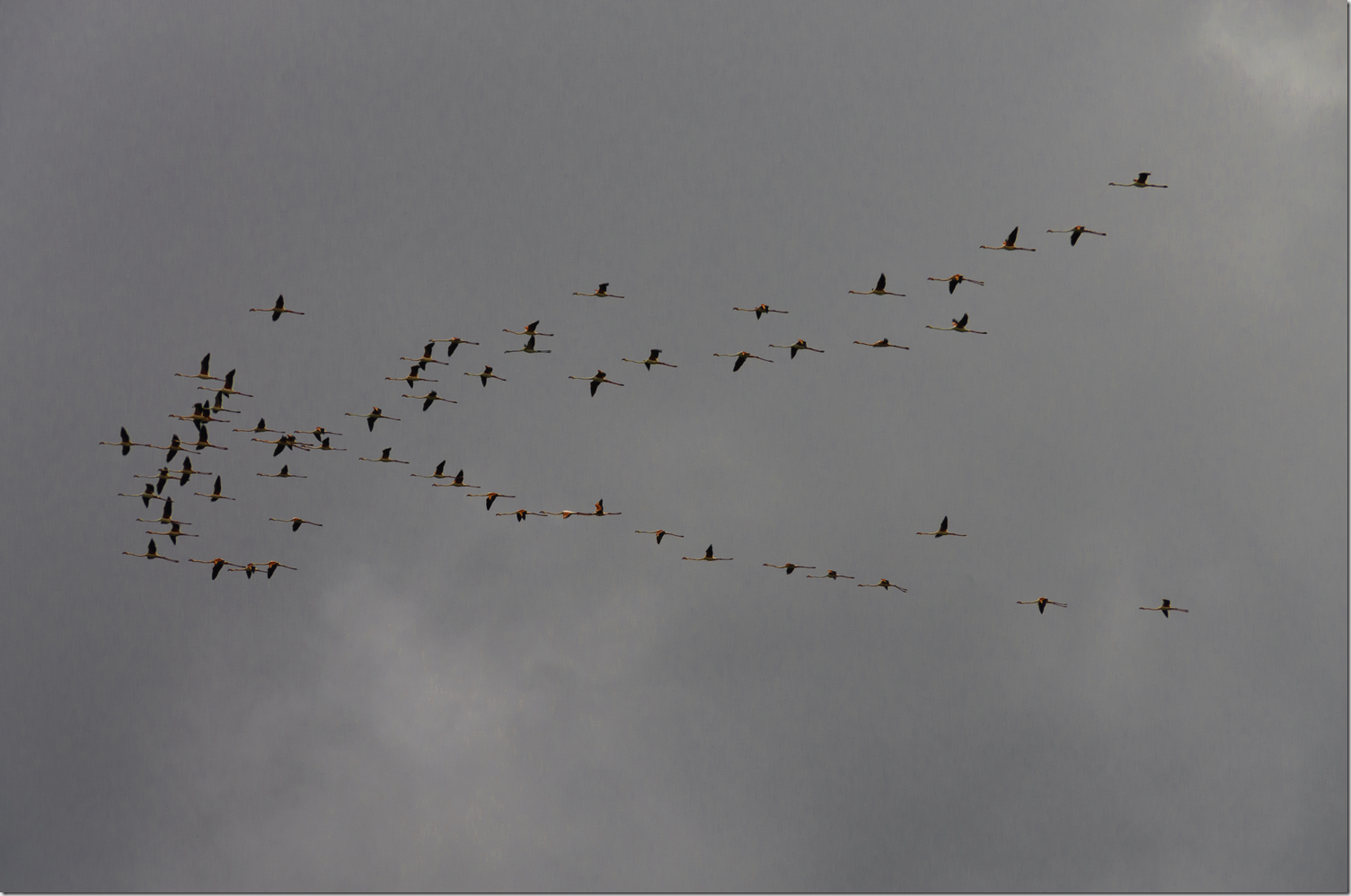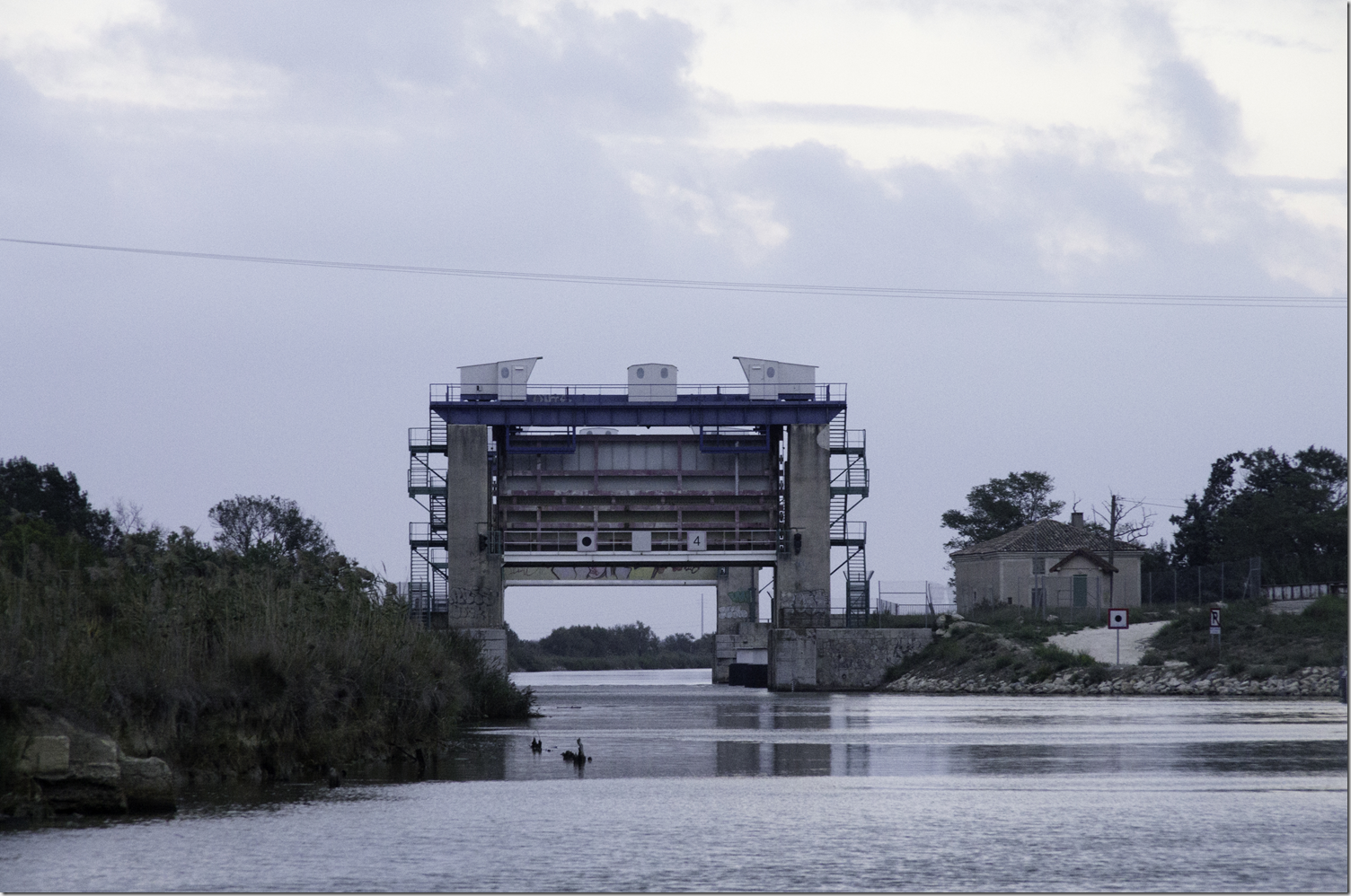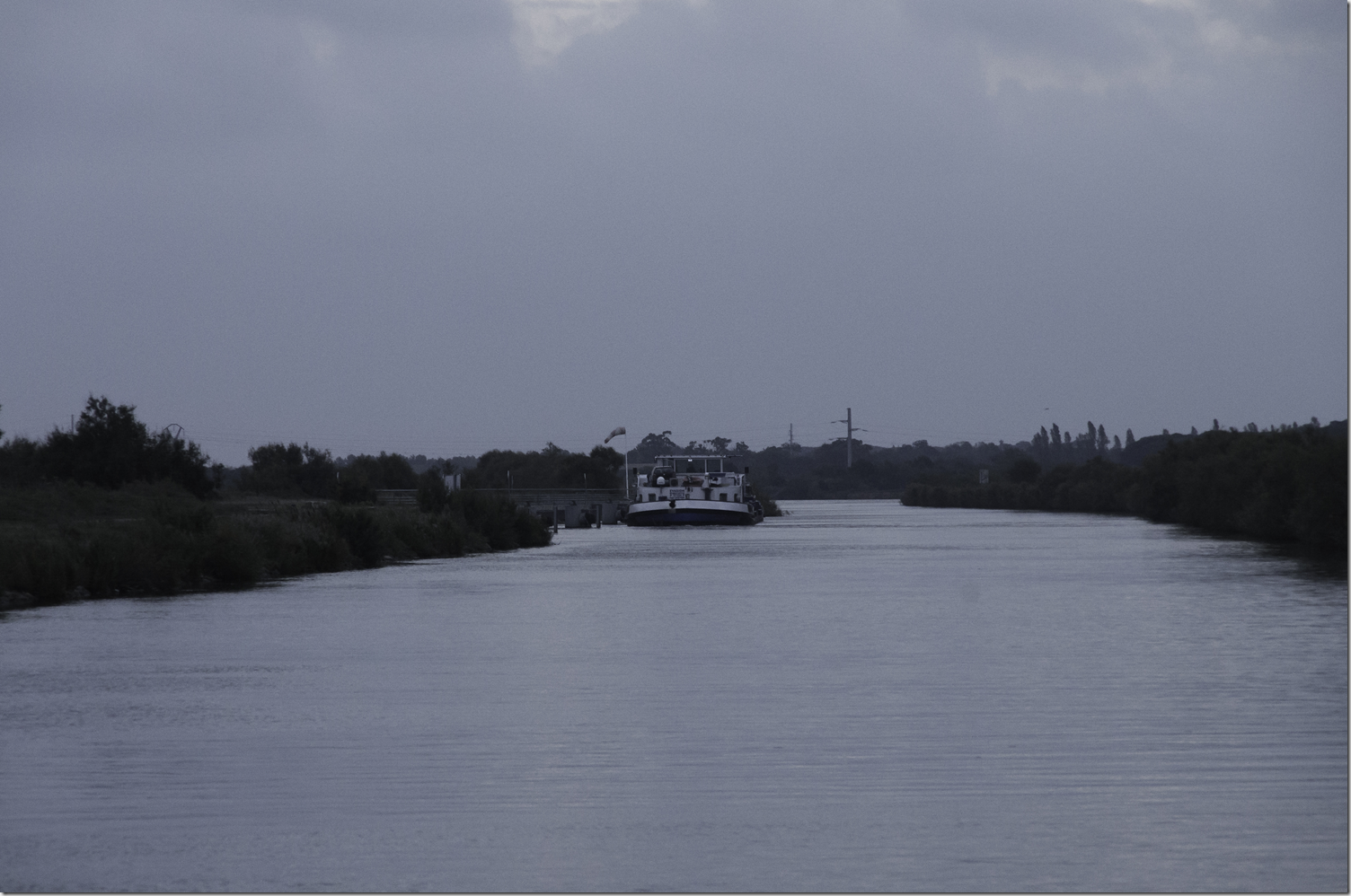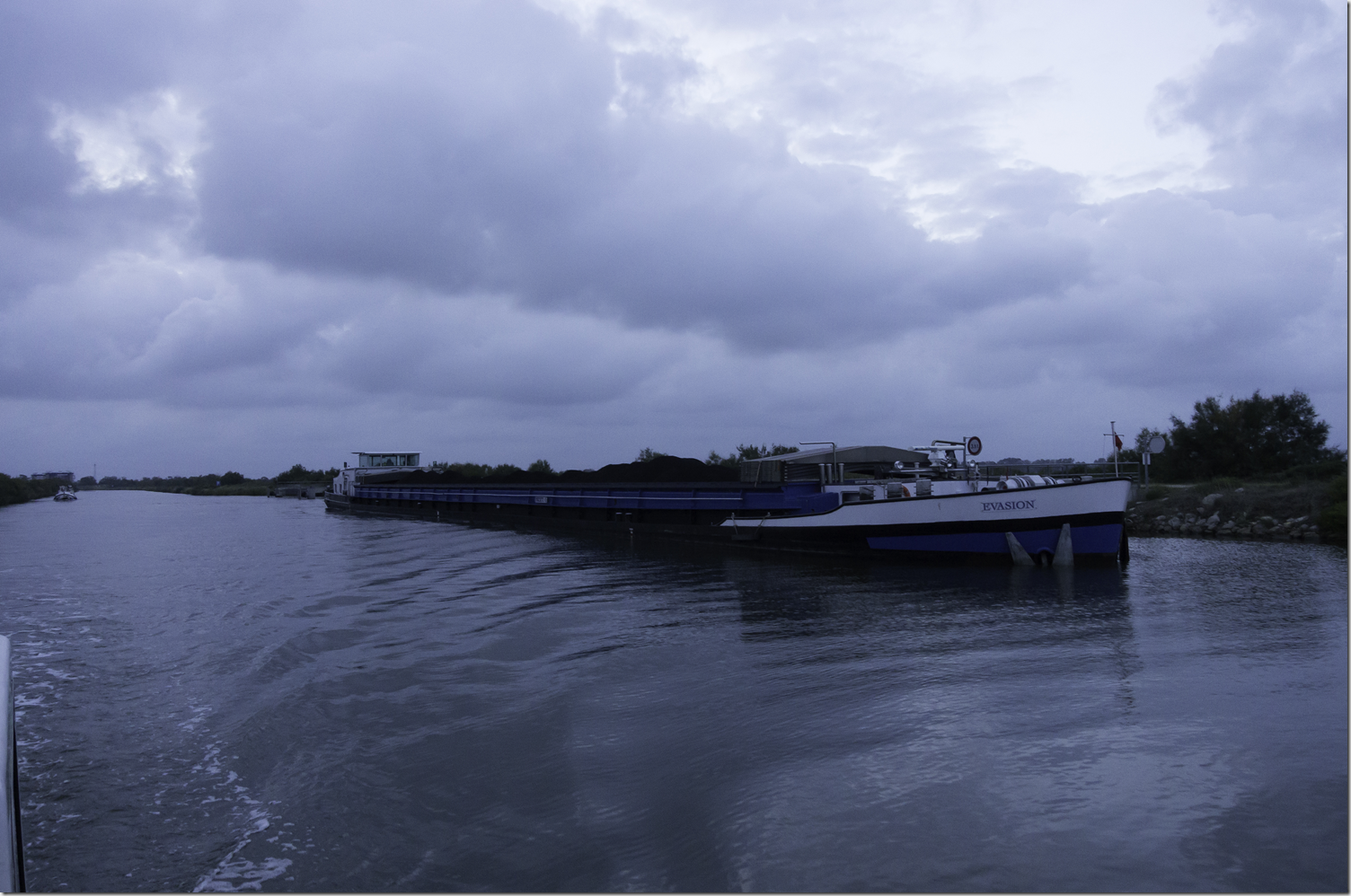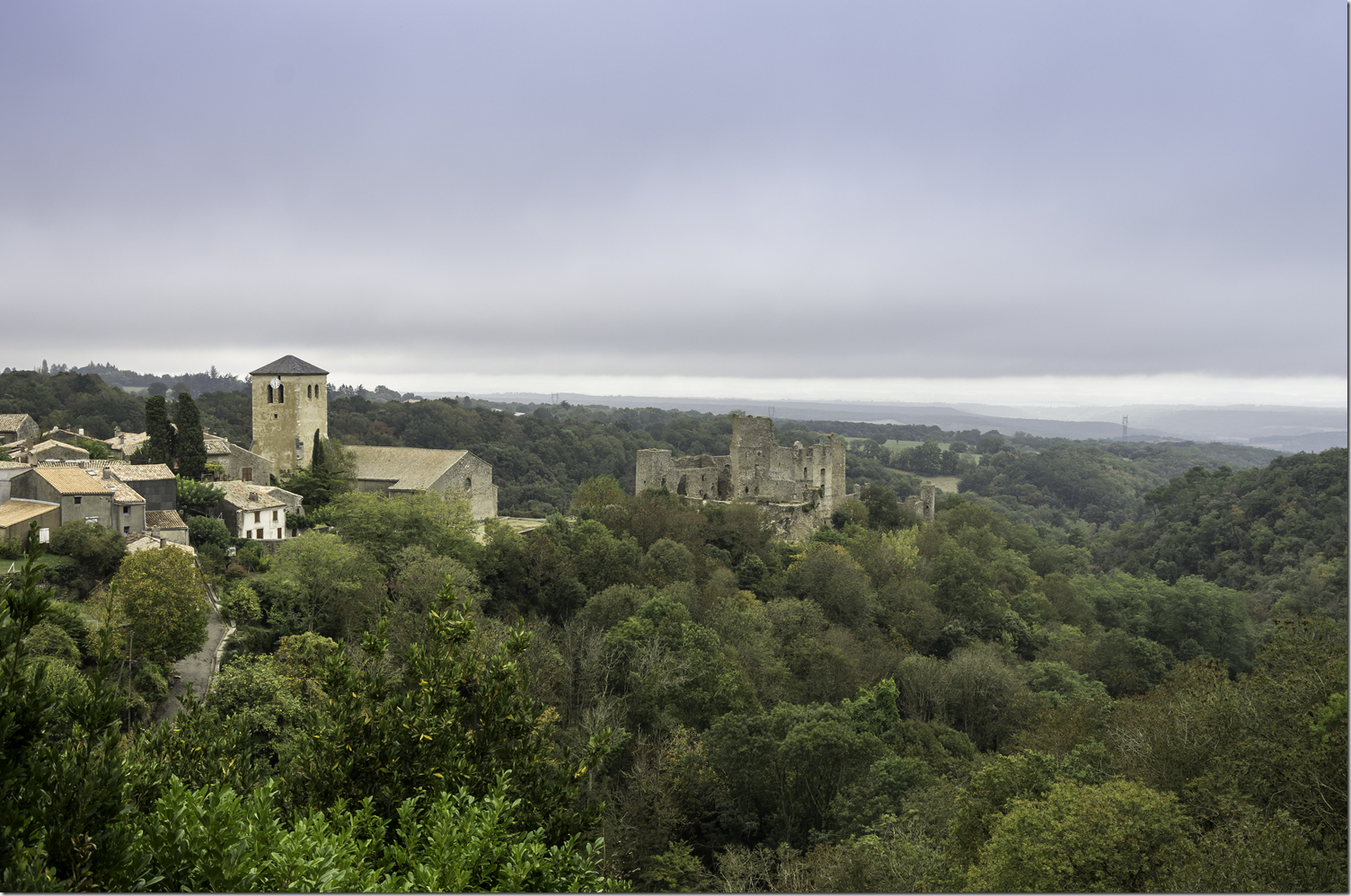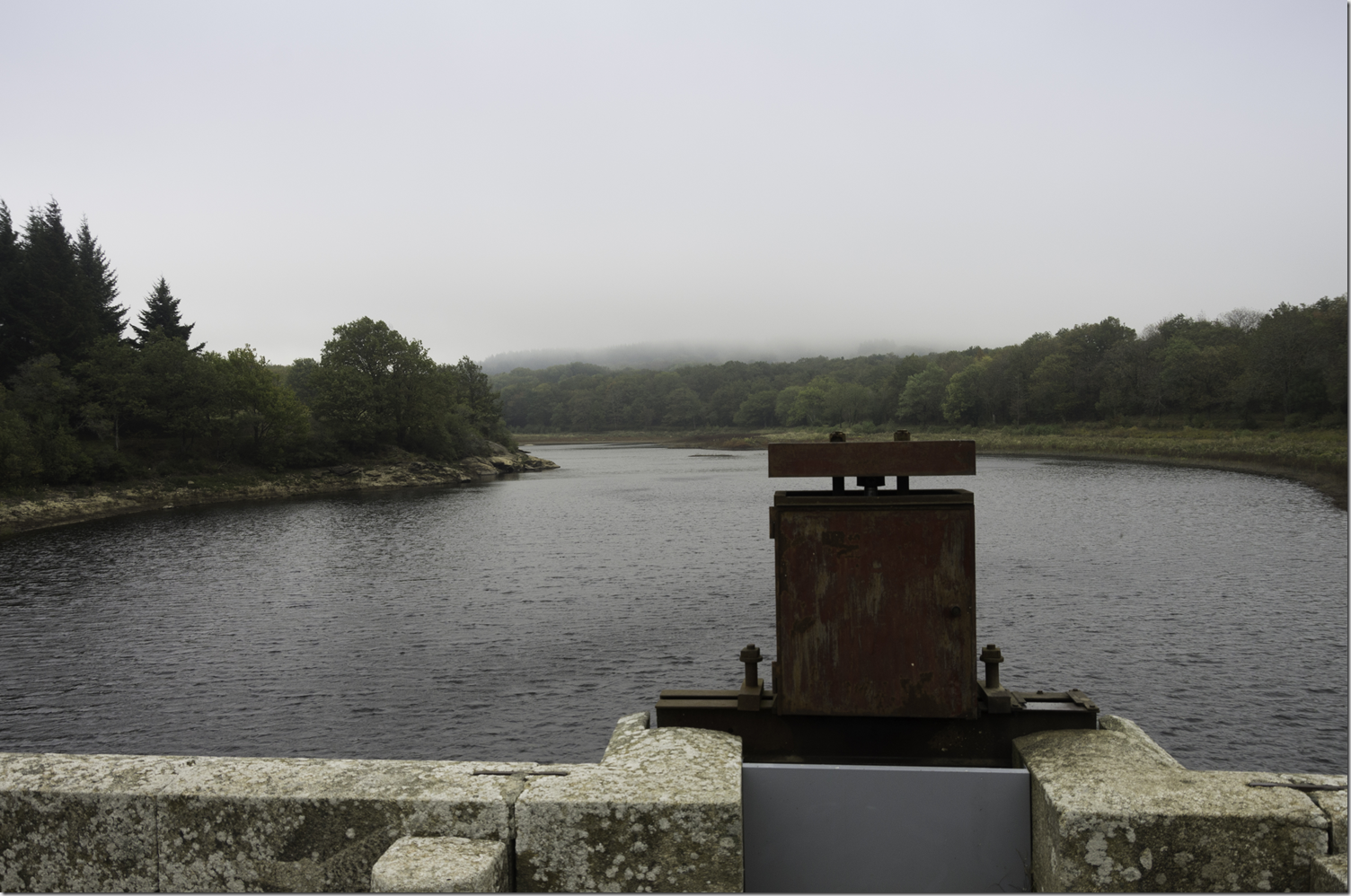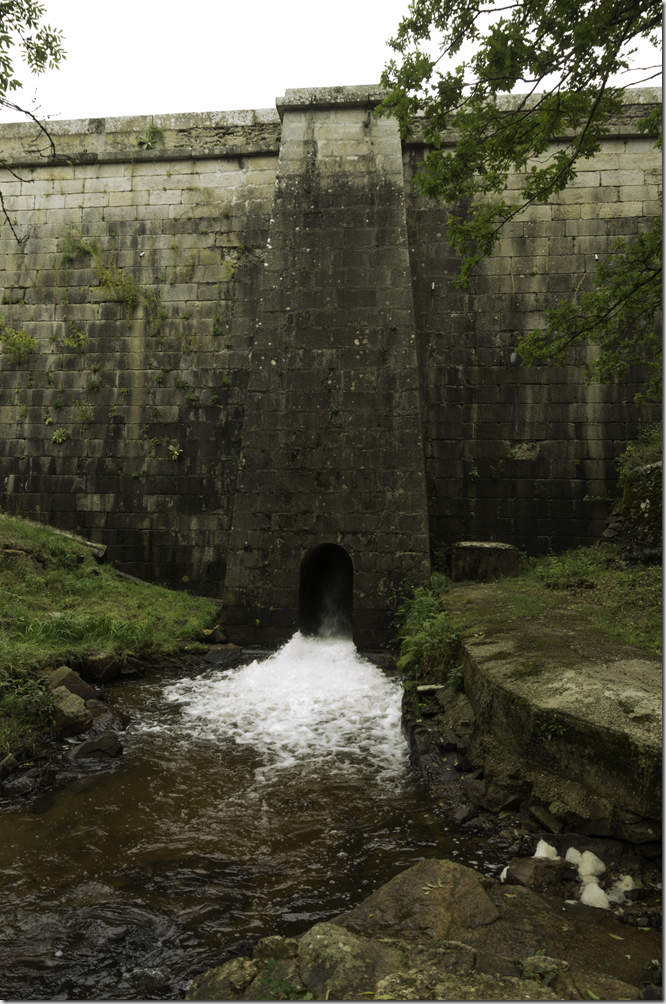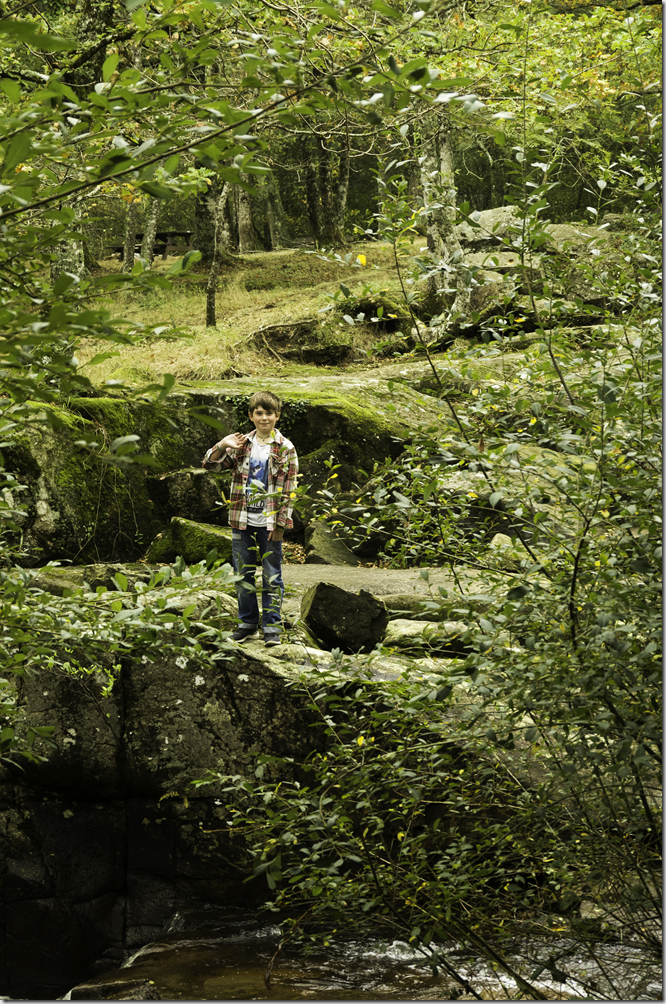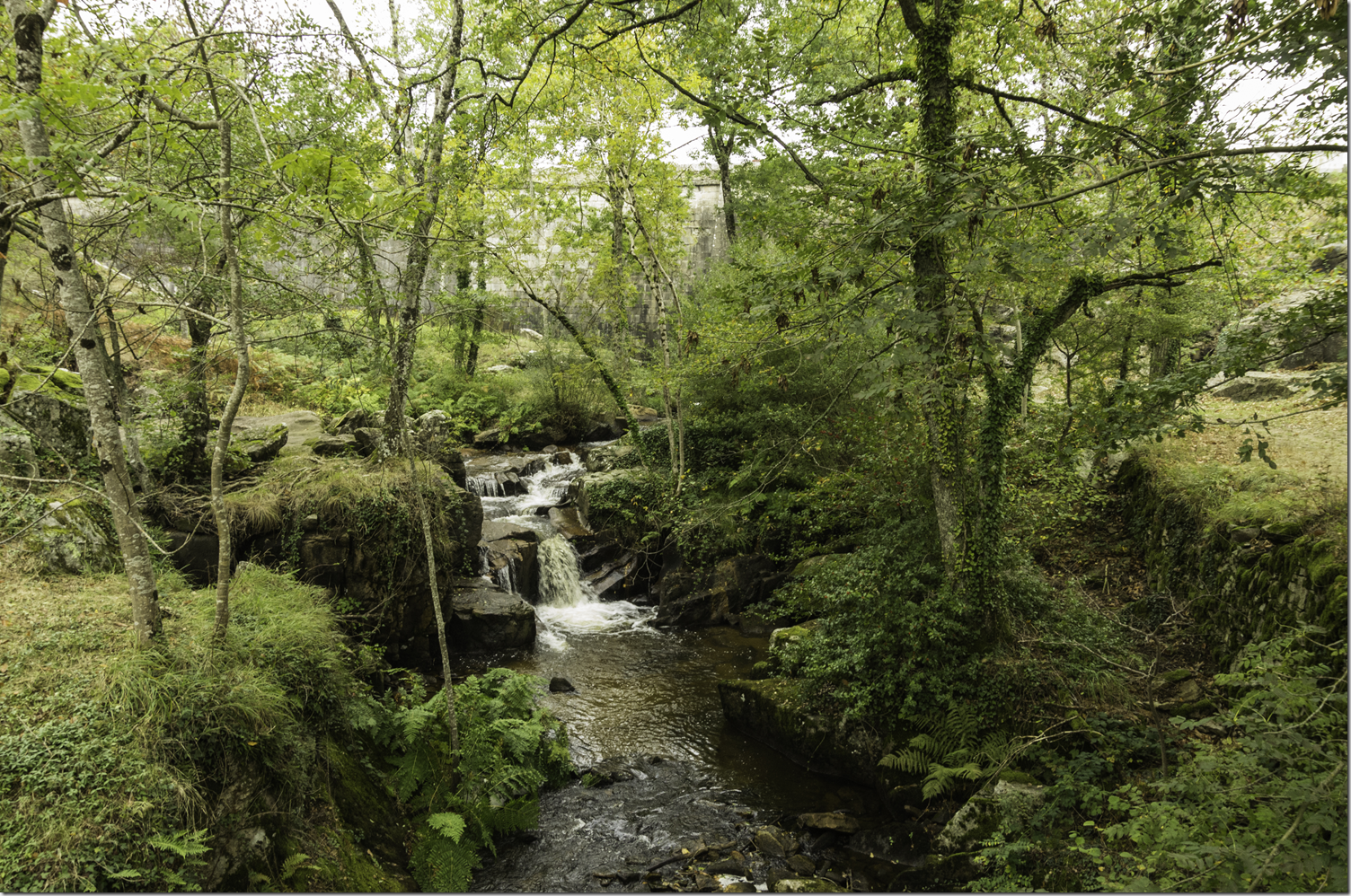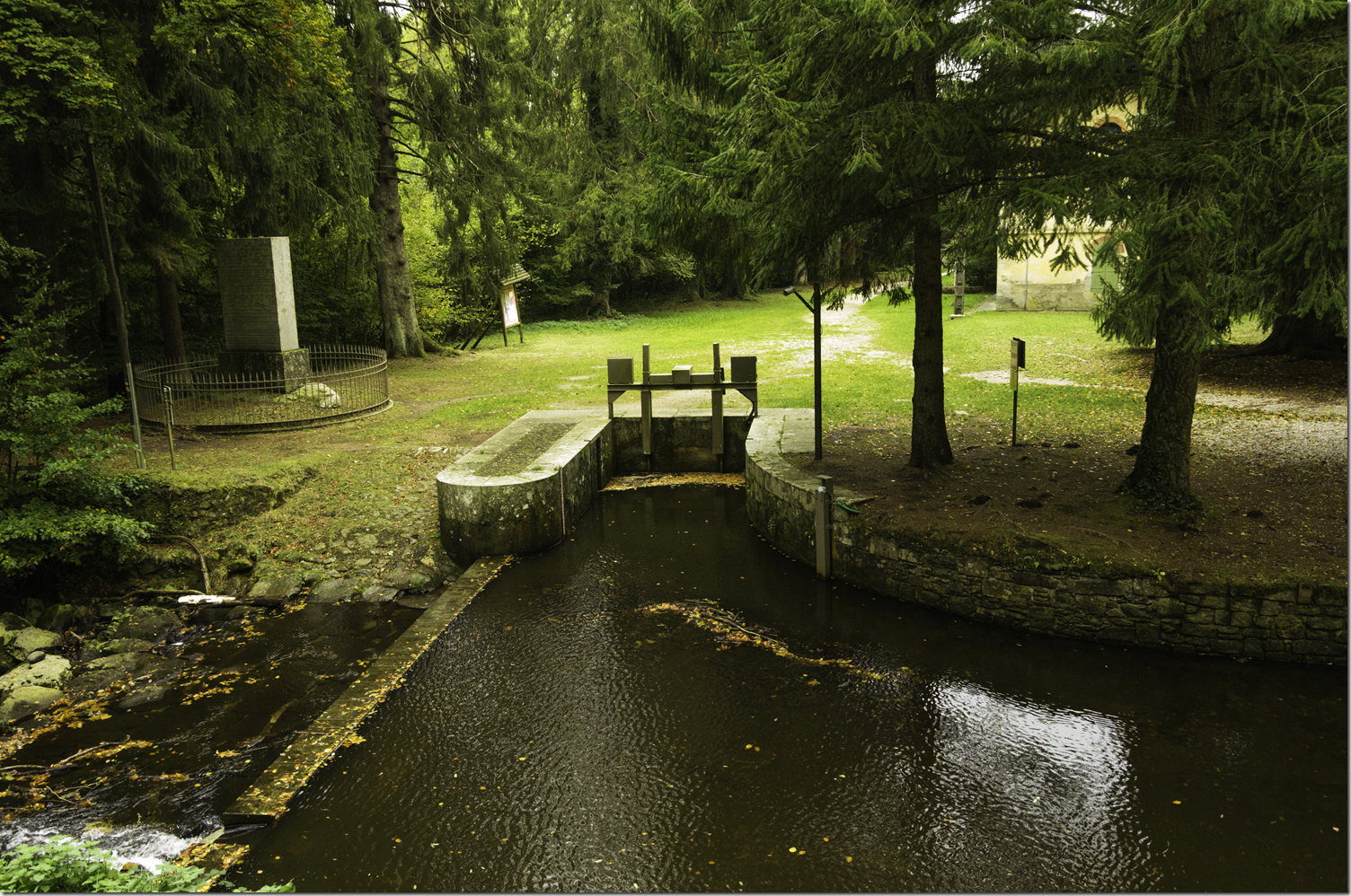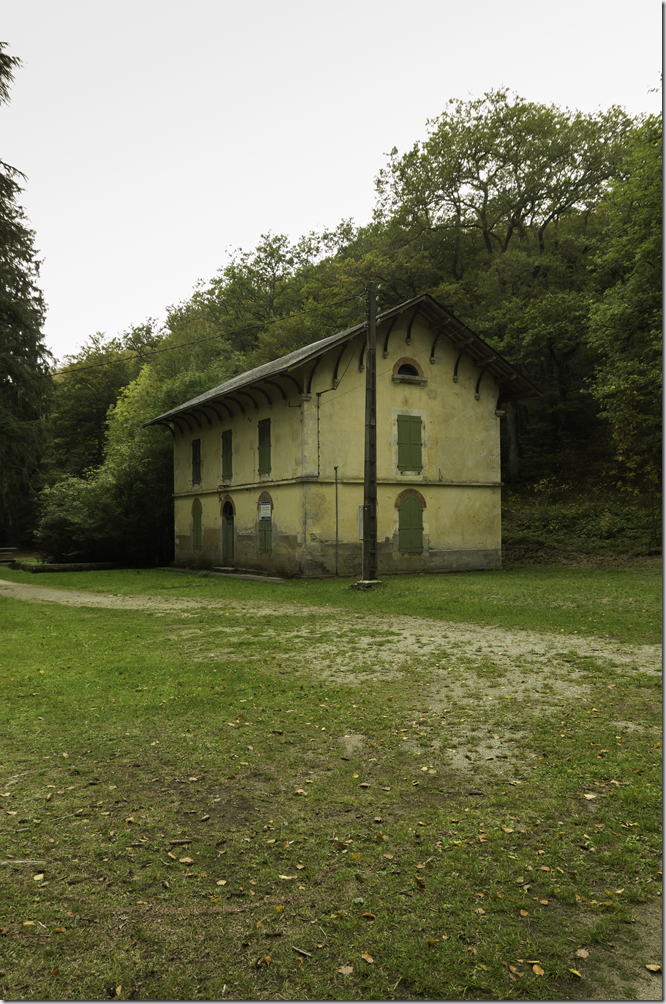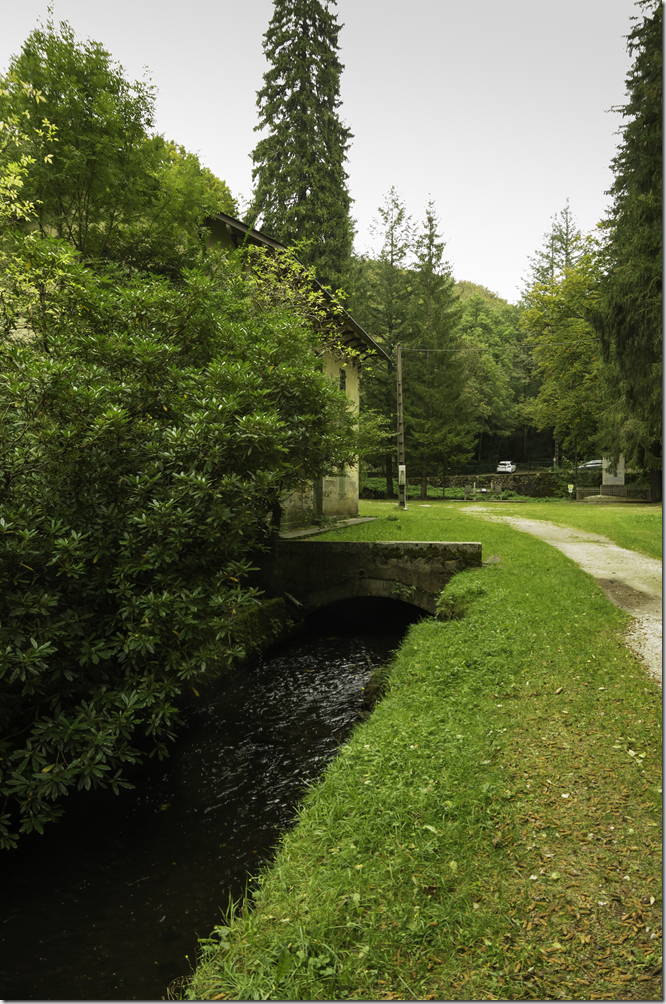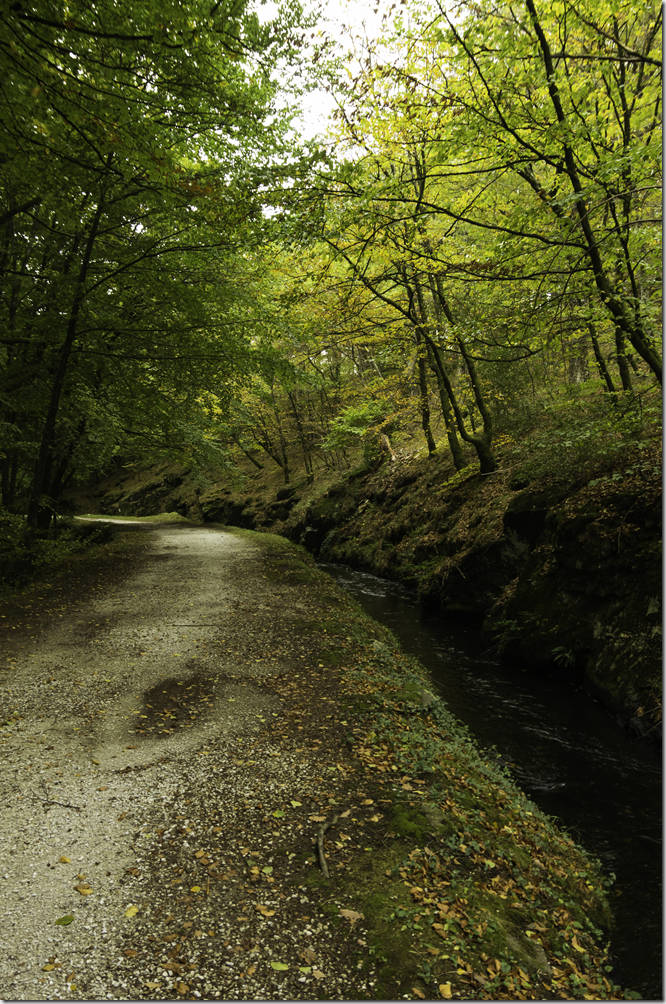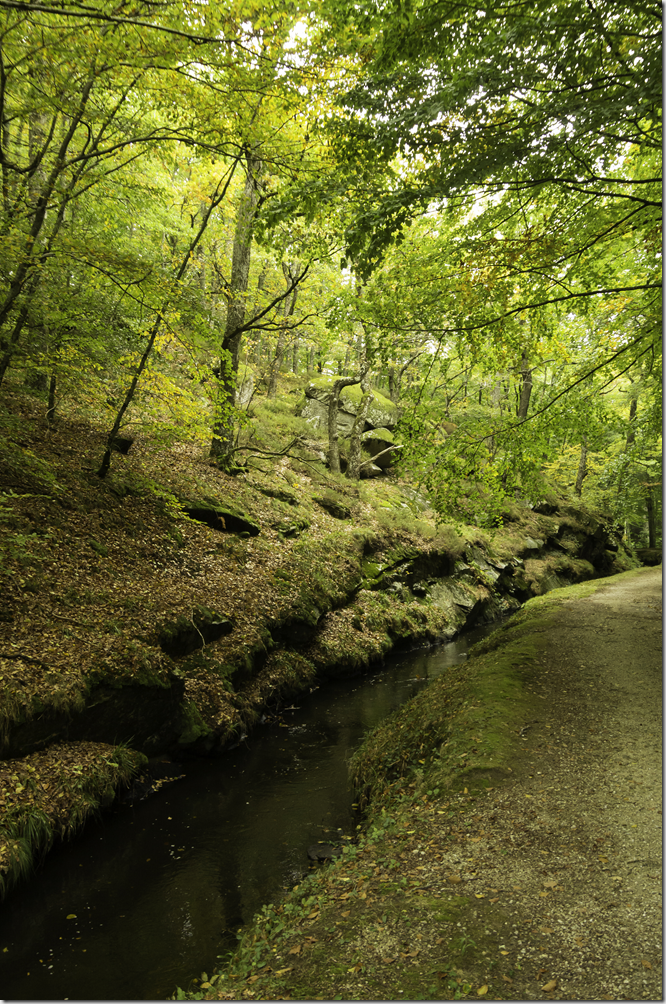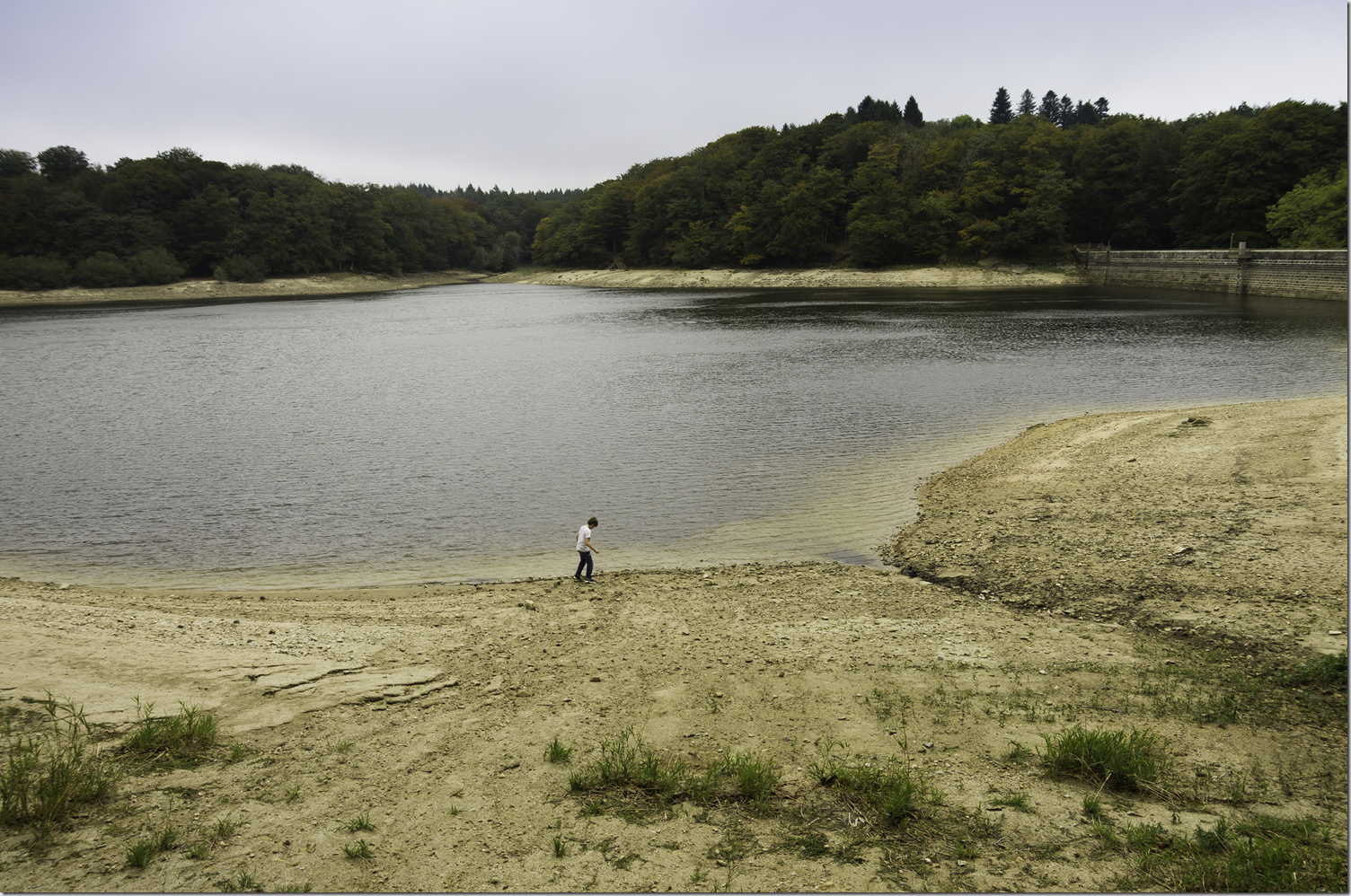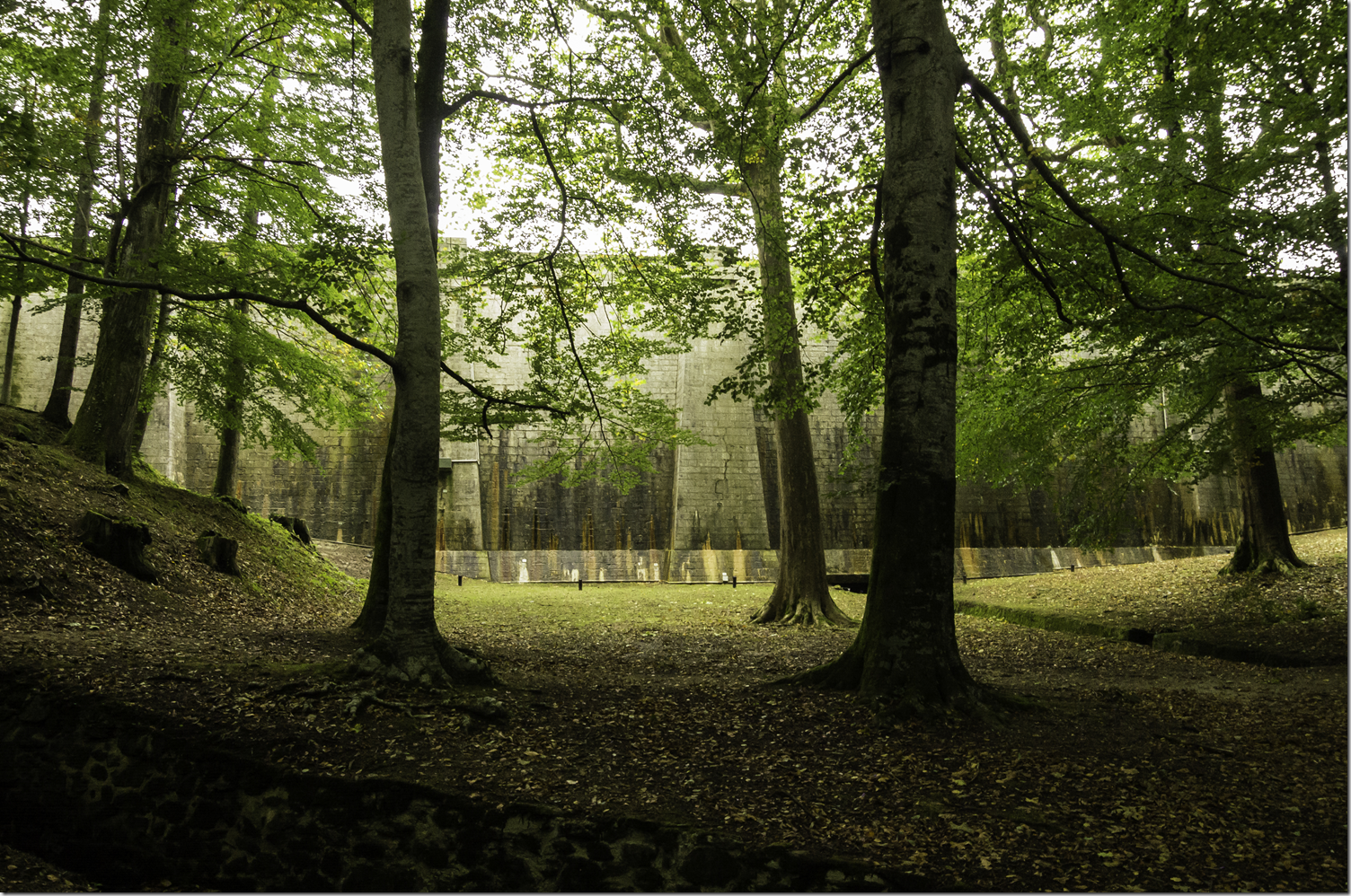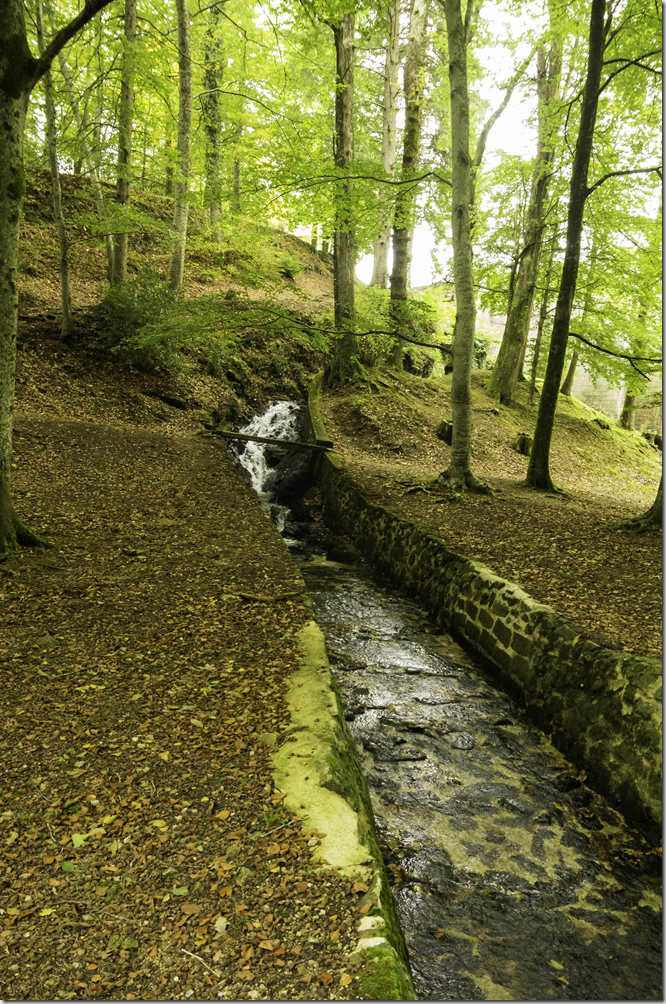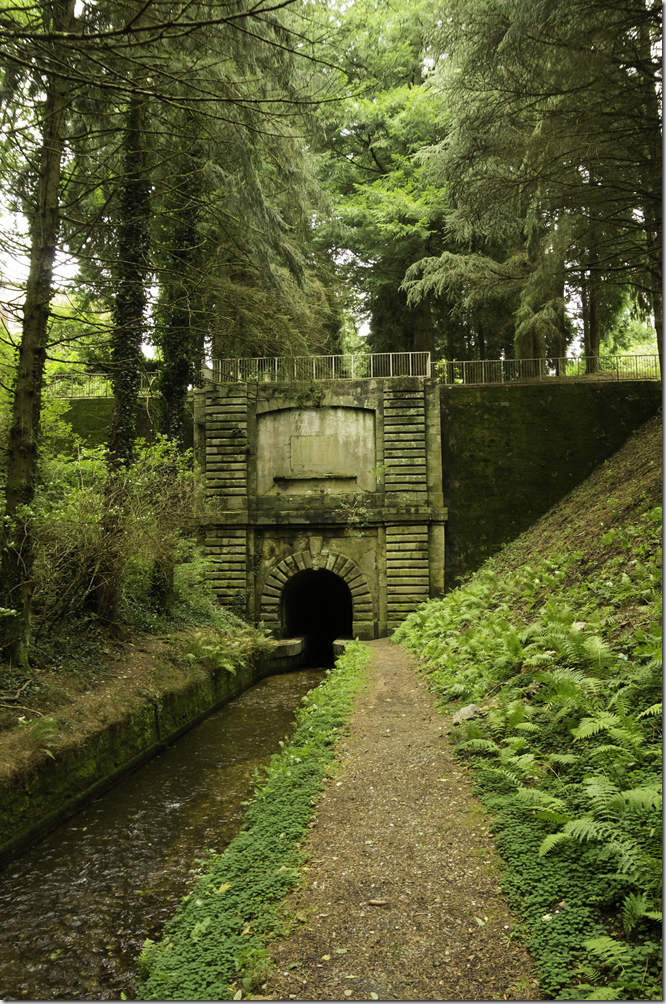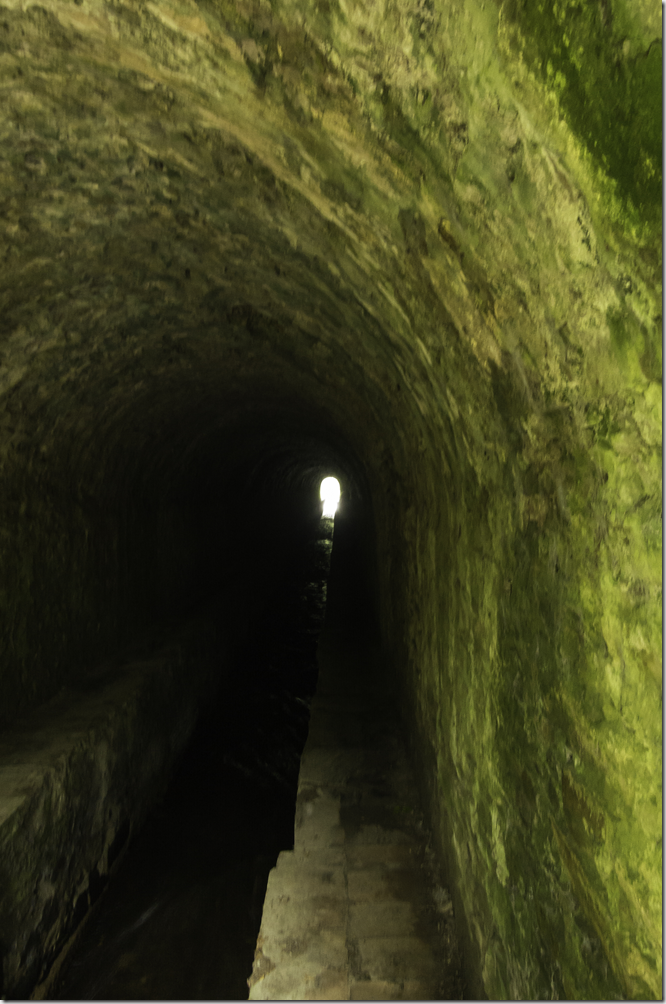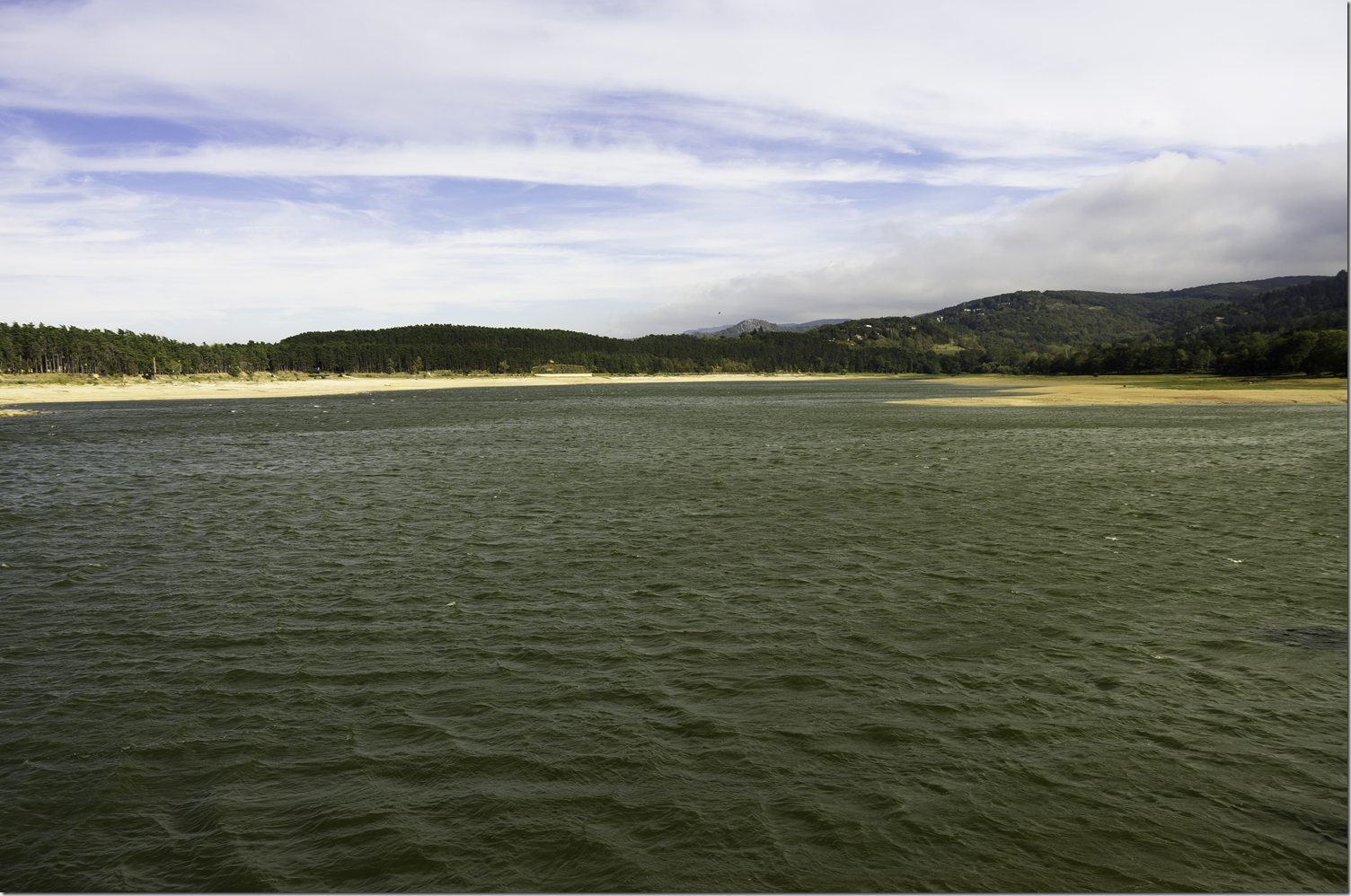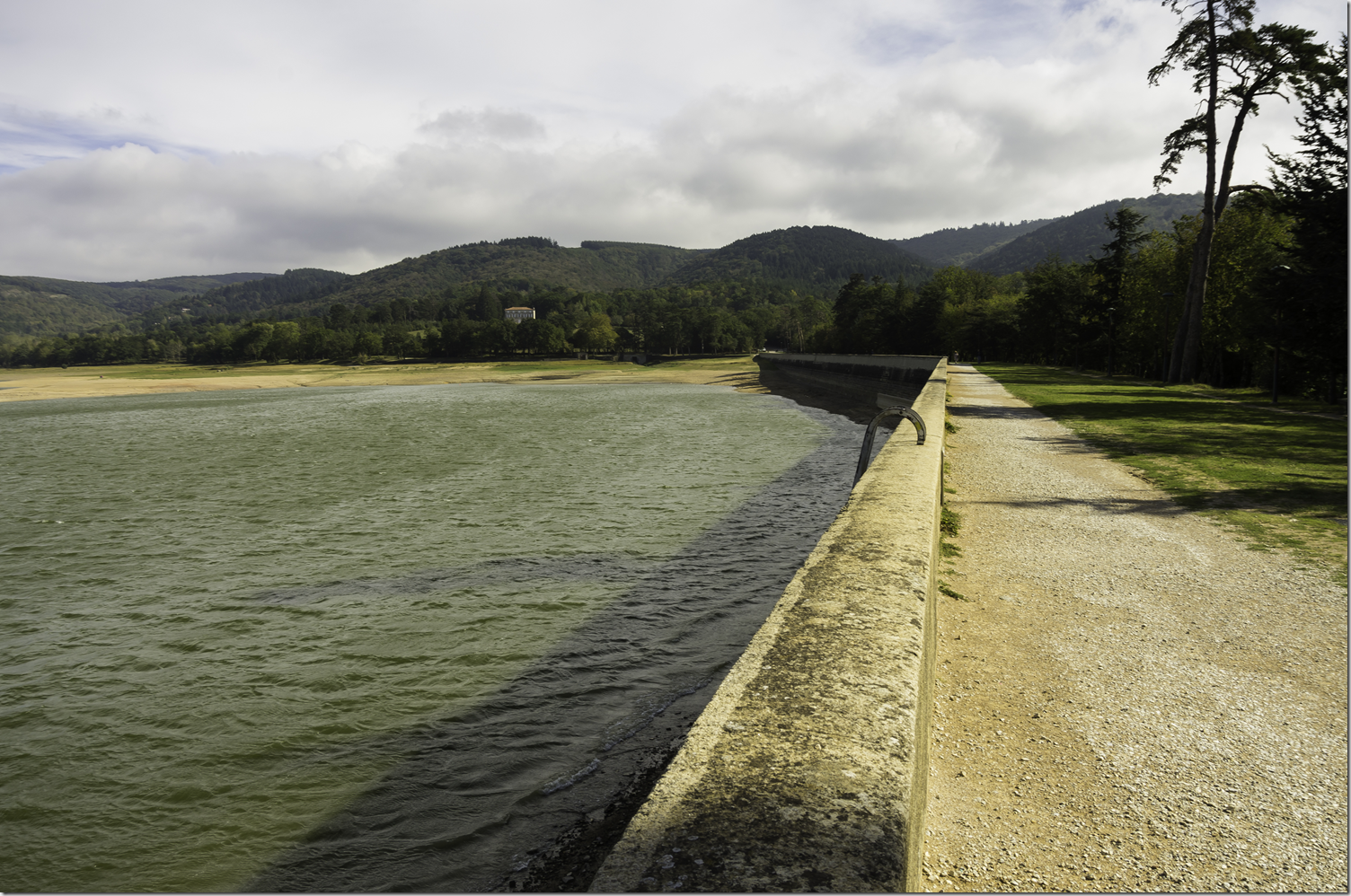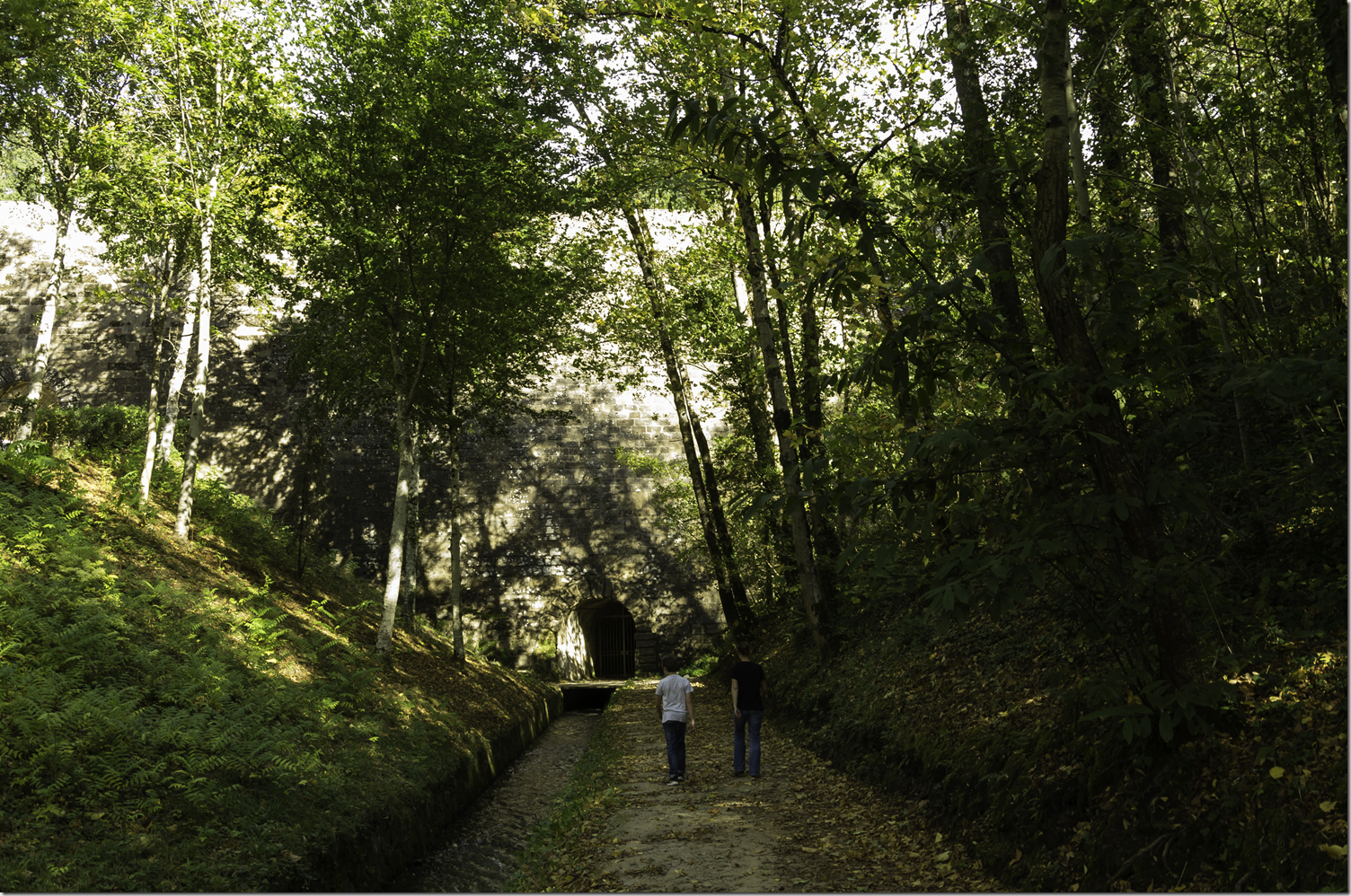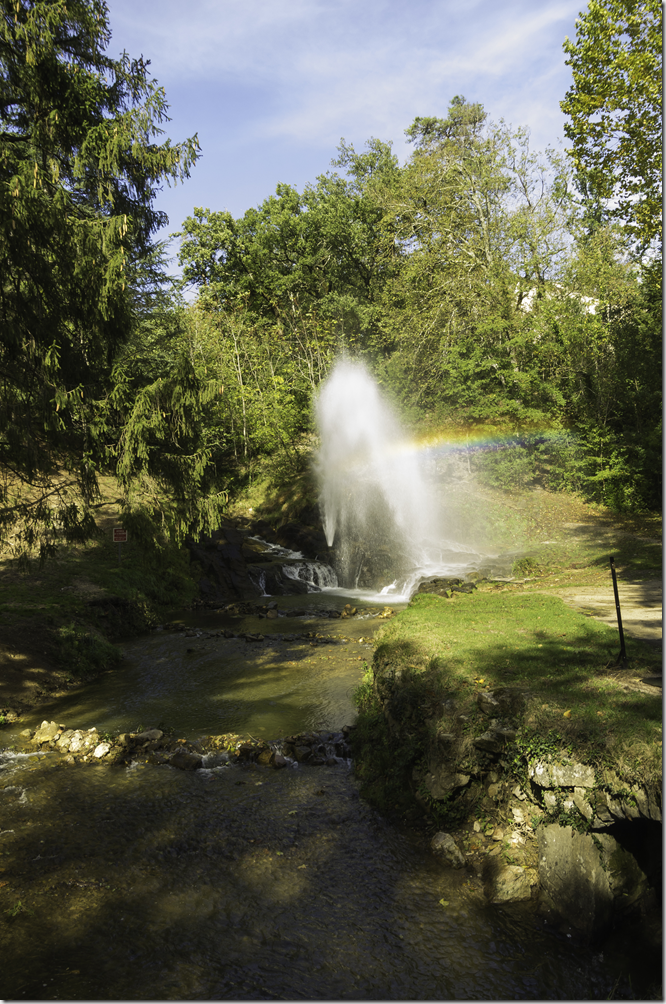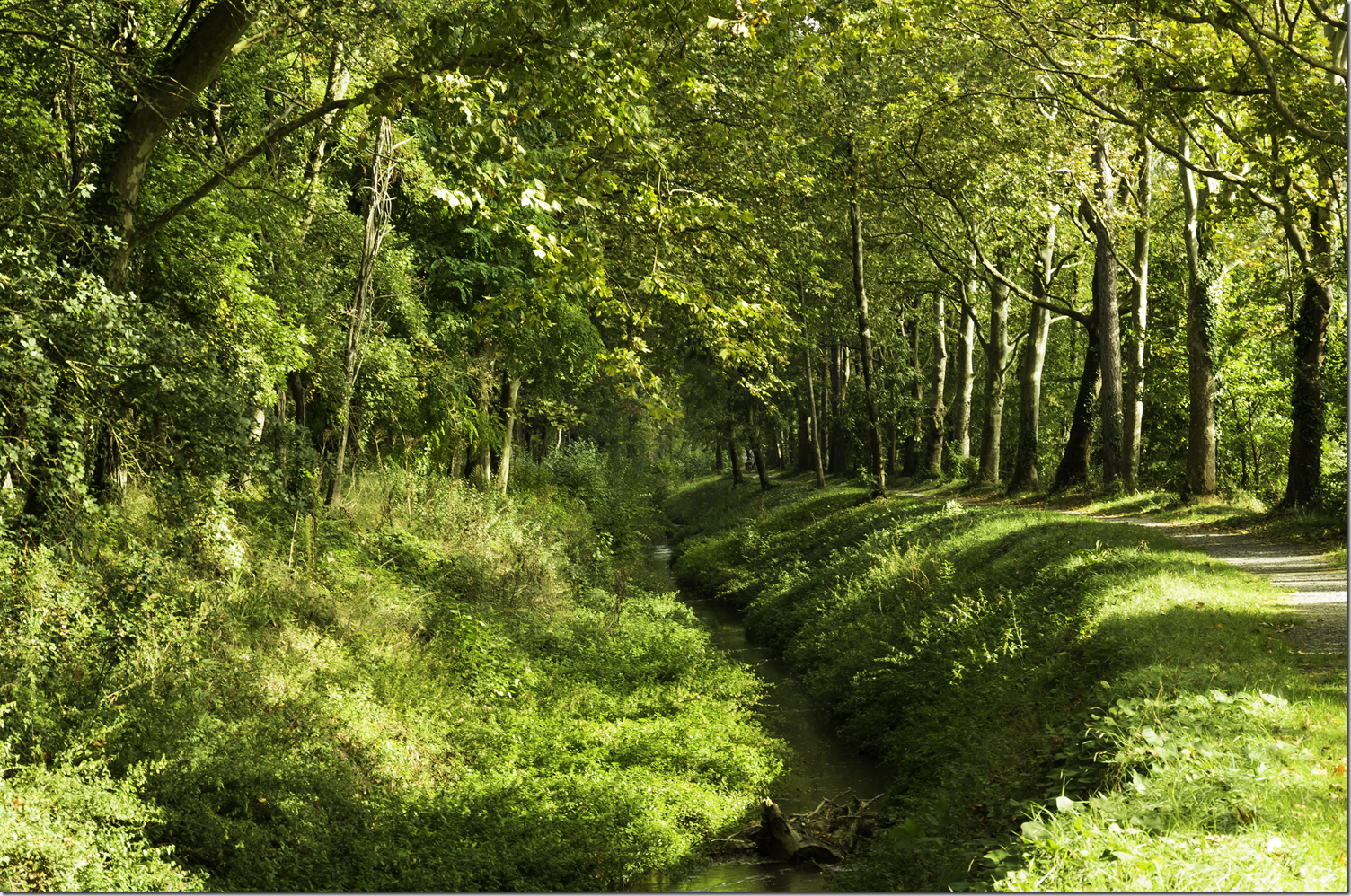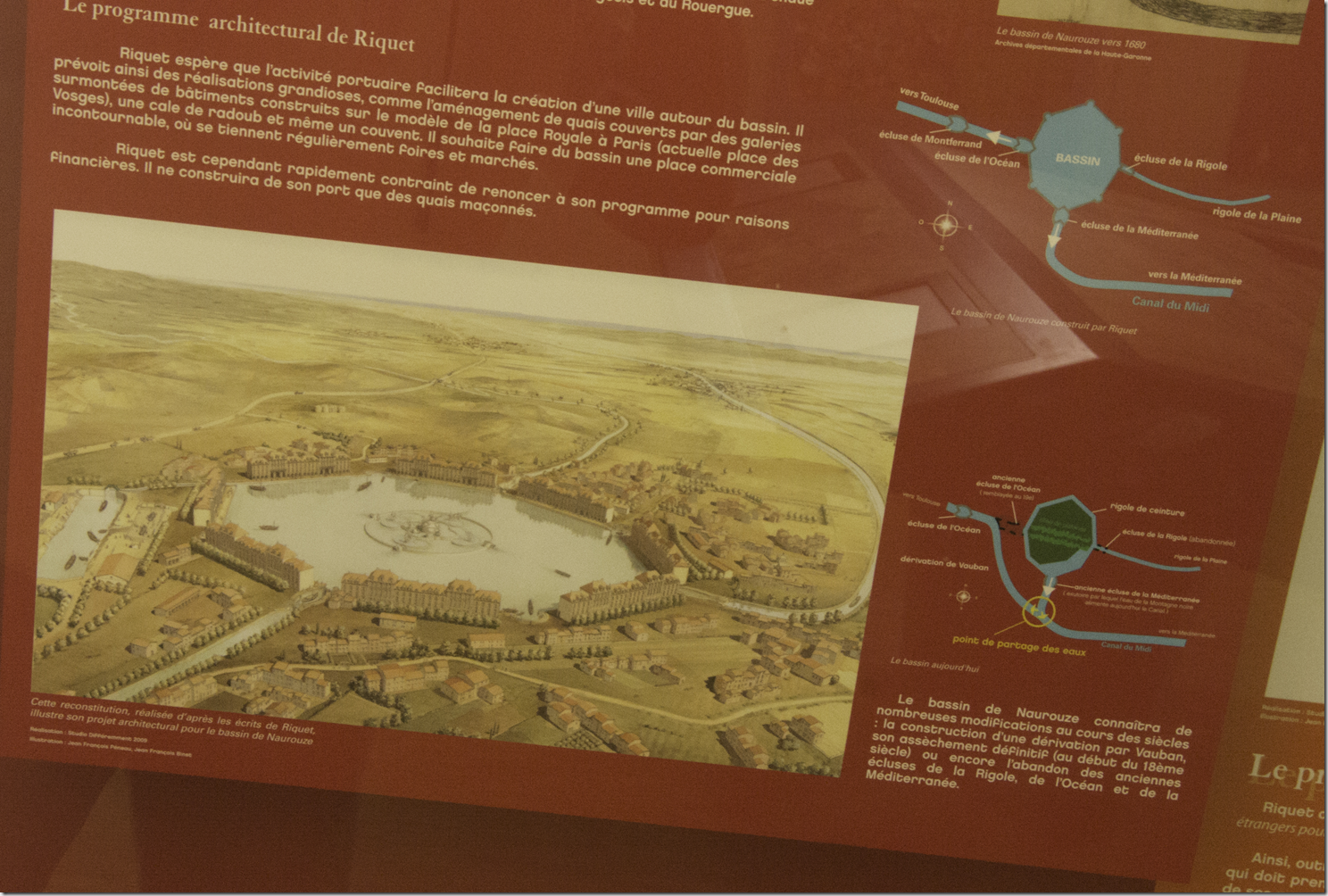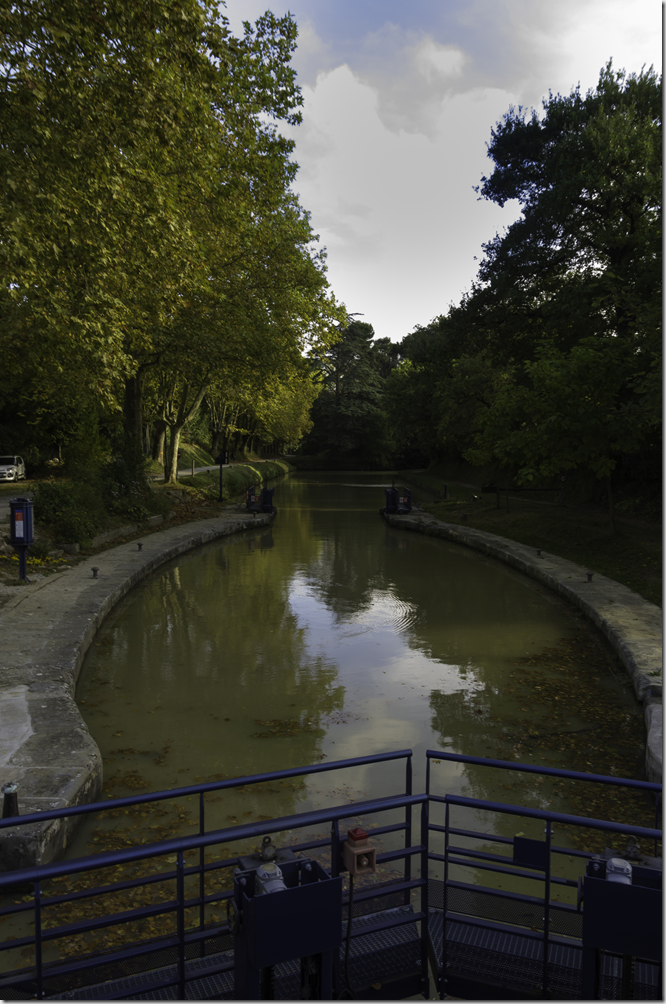Frontignan- Lattes
Malpas and Fonserannes by car
Thursday, 17.10.2018
18 km, 1 lock
Another early morning, ready for the bridge opening at 8.30 a.m. After we have made it through the bridge a stroll into town to get fresh baguette. While we are having breakfast we can hear the roar of an engine in the distance, but cannot make out its source.
Once we leave the town and have a clear view the source of the noise gets apparent. An agricultural aircraft is busily doing its rounds.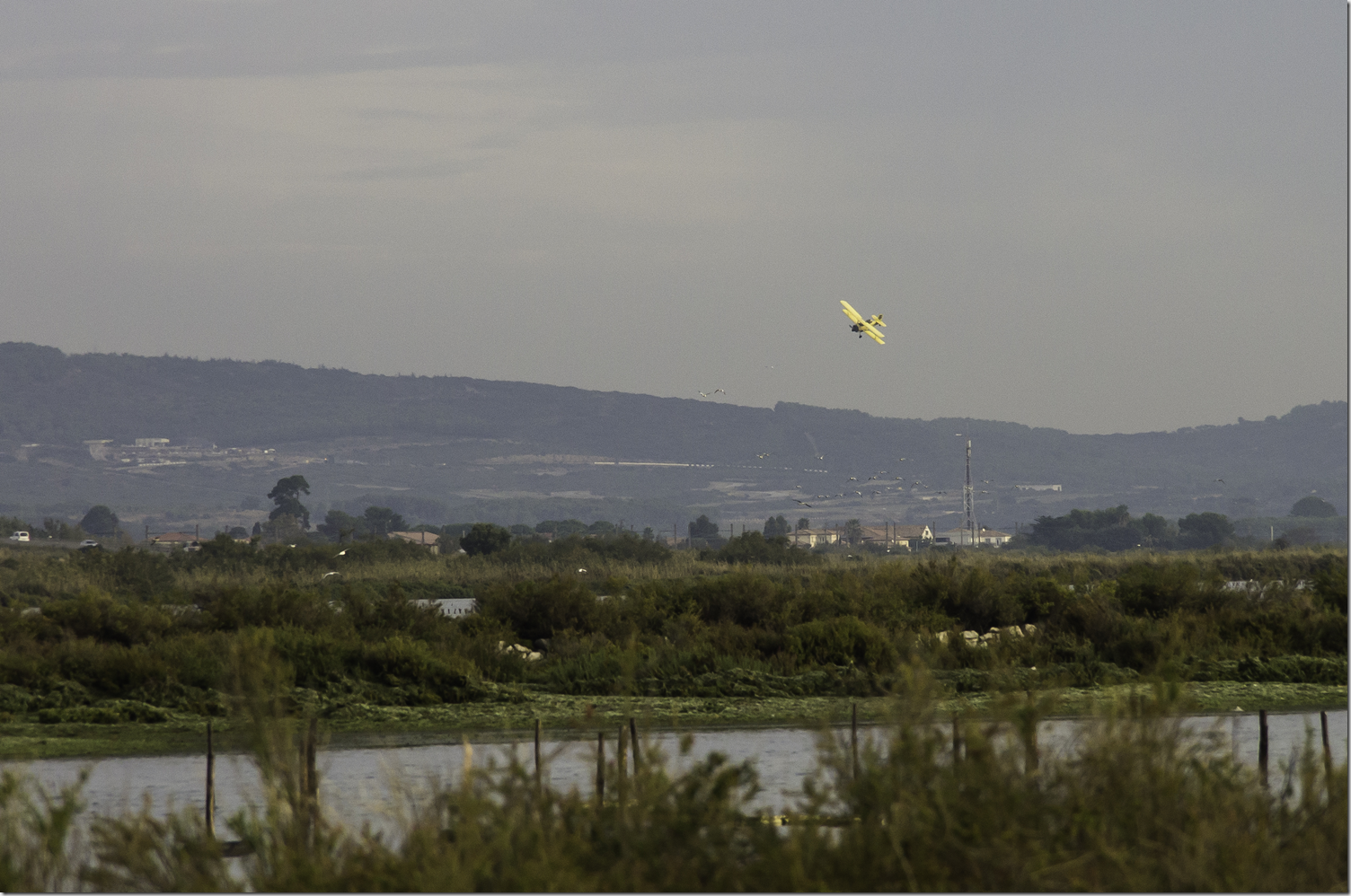
Not only do we get treated to a free air show. Also the flamingos get excited about it.
Further on the canal gets quiet again and is a far cry from the mayhem two days ago.
With the good weather we also manage to moor up at Manguelone. Ready to visit the island and its cathedral. It is closed, of course.
At least we make it to the beach, at long last.
And that is almost the end of our boating trip. We stop on the Lez, where there is a Carrefour with a boat filling station right by the canal. Very handy.
Again we wait an hour for the lock keeper on the Lez lock to arrive, moor up at the marina, turn off the engine, plug in the electrics and prepare to use the boat as a stationary holiday home for the next two nights. Not the greatest outcome, but a very good reason to come back.
But it is not the end. We fire up the hire car in a quest to visit at least a few highlights we missed by boat.
First stop is the Oppidum d’Ensèrune. The hilltop of Ensèrune has been inhabited from 800 BC well into roman times. With it unique location it must have been hugely wealthy at the time, as it was able to control trade on the main routes in this part of the world. And thus there are traces from Celts, from the Greeks and Romans. All very well presented.
From up here the floods of the last few days are well visible.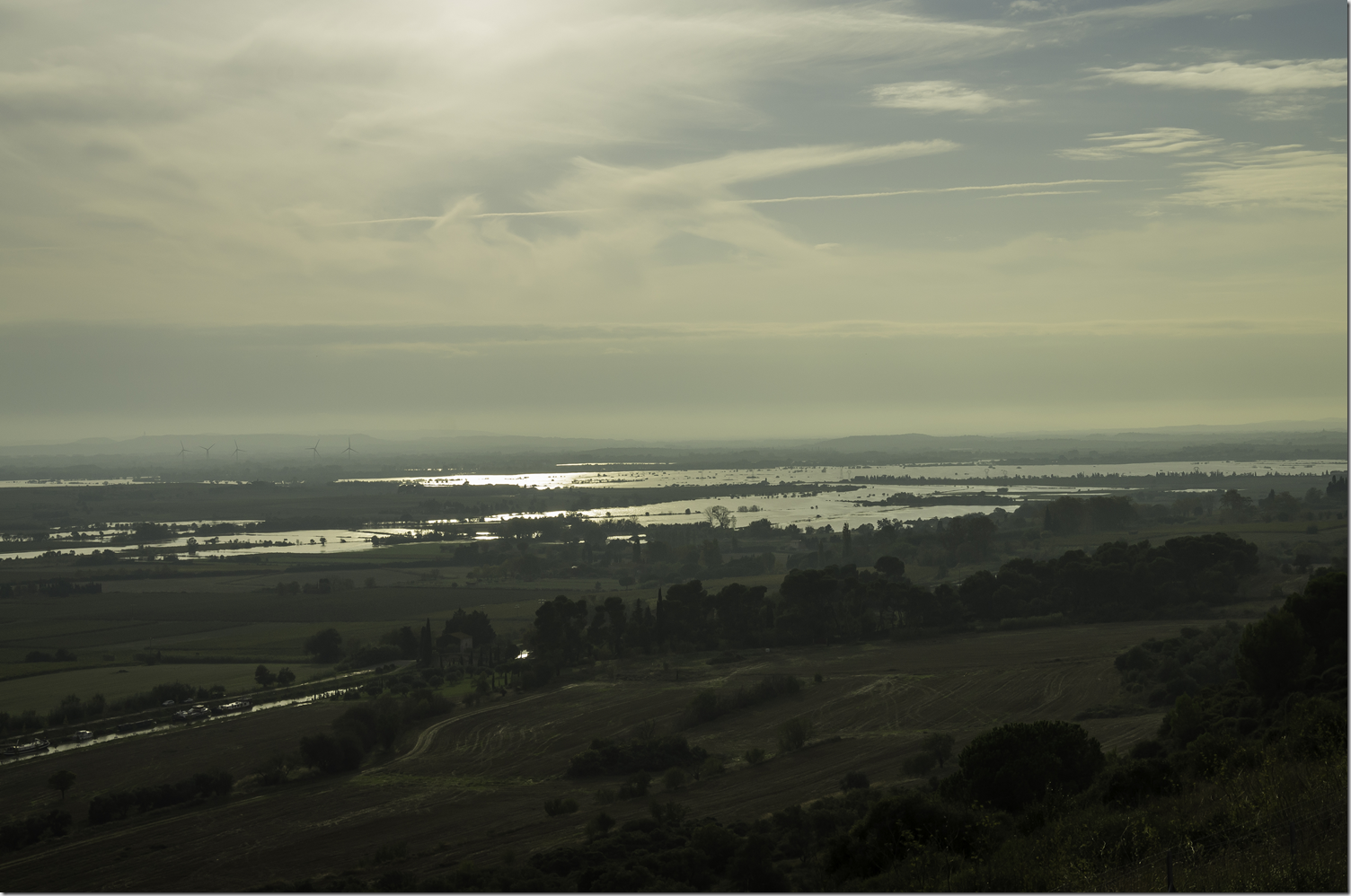
And also to be seen, the Ètang d’Montady. This land was drained by 13th century monks. the star shaped drains meet at the centre into a main drain that slopes towards the Malpas hill. The monks then build a tunnel through the hill to drain the water towards Capestang. Tunnel Nr. 1.
When Riquet met the Malpas hill, he also figured that the only way to get past it was a tunnel. Thus tunnel Nr.2, the 160m long Tunnel de Malpas was dug. The first canal tunnel in the world.
Tunnel Nr. 3, a railway tunnel was dug in the 19th century.
A memorable site. Back to the car and on to Beziers and the Fonserannes staircase. It is testimonial to Riquete’s genius, that he managed to keep the canal on the level for 52 km before reaching the seven locks at Fonserranes. In a great leap the canal drops by 20 metres.
In the 1960s a lot of building was done on the Midi to modernise it to Pichette standards. Thirty metres long locks had to be lengthened to 38 metres. While this was not much of a problem with single and double locks, just ad a bit of lock at one end, this was clearly not feasible at a staircase lock.
As a solution the engineers decided to bypass the locks by means of a water slop. Not too many details can be found on the web. But there is a Wikipedia article and a short video about its sister slope at Montech on the Garonne canal.
Also on offer beautiful views of the Béziers in the evening sun.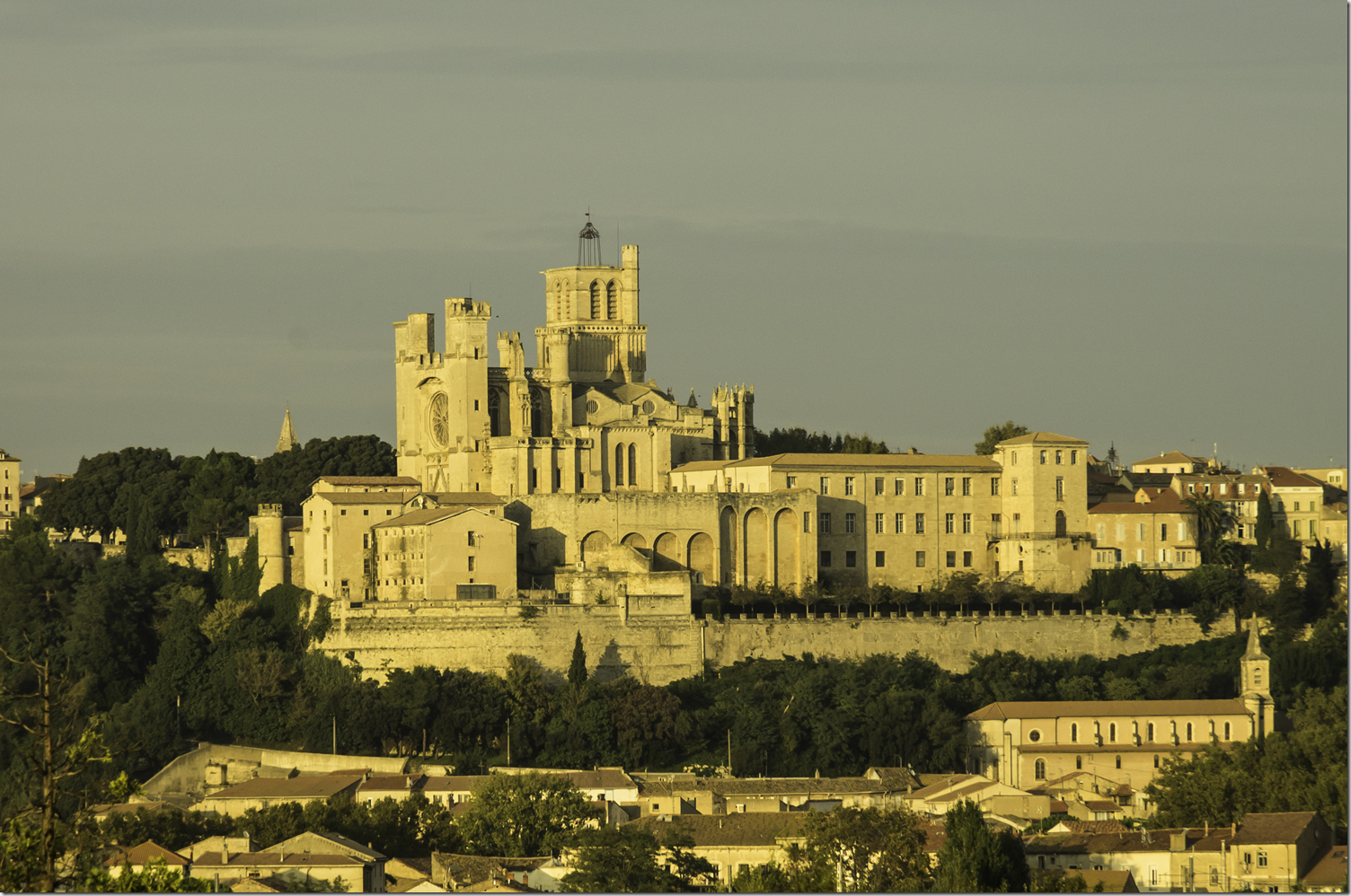
Back to Lattes it is late already and we are too lazy to cock dinner. The little Thai restaurant at the marina looks inviting. And although the maitre is unfriendly to the extreme, the food is absolutely top notch. Red wine on board and a good nights sleep.
